Search results for: labor unions
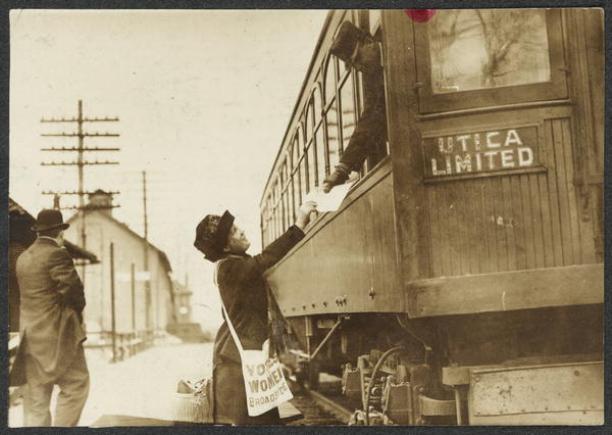
A Feeling of Solidarity: Labor Unions and Suffragists Team Up
…that the only way the world can be forced to recognize their rights and grant them is by means of organized labor. A Divide Between Progressive and Conservative Unions Conservative…
Read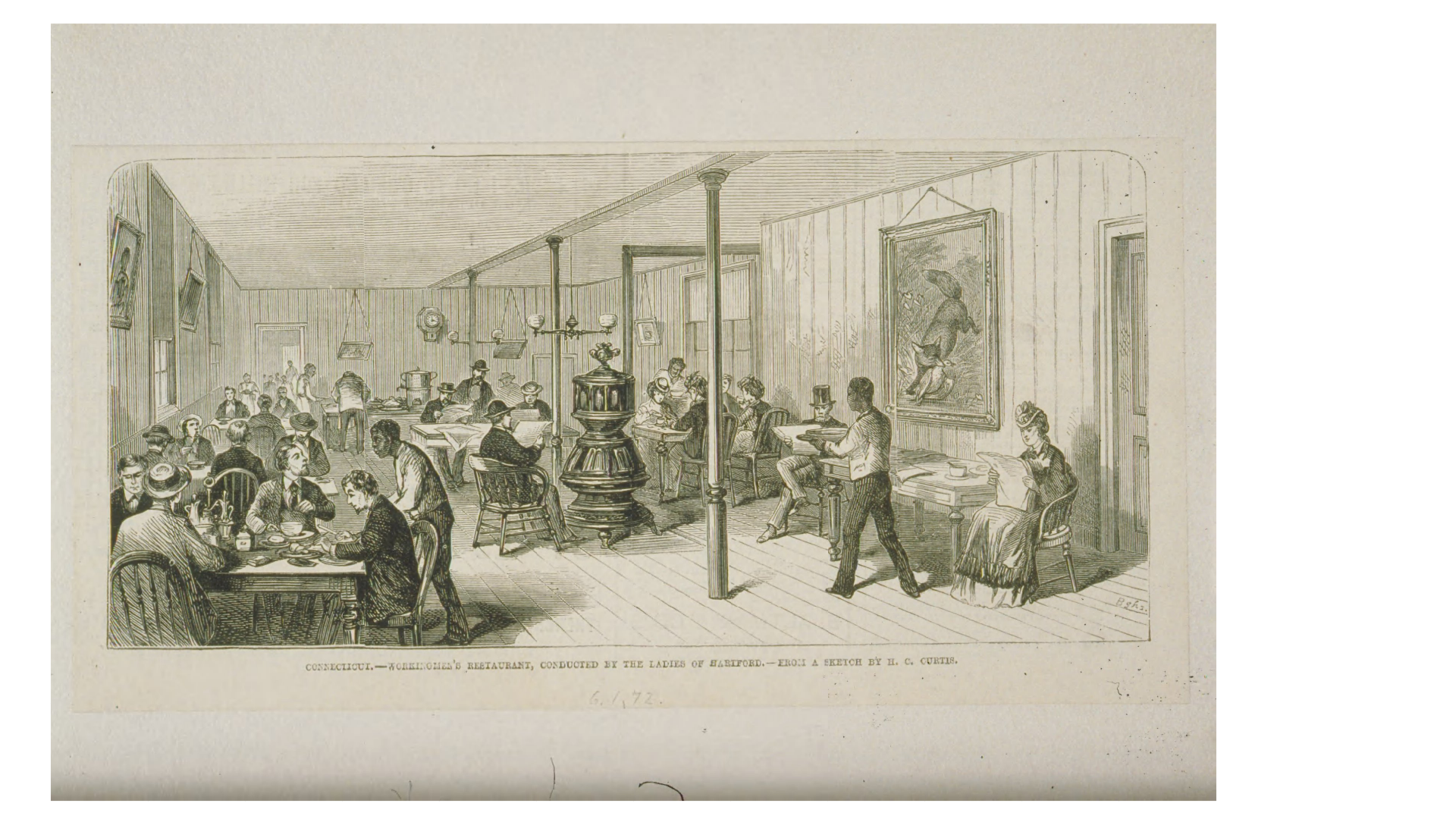
Serving Up Justice: Hartford’s Black Workers Organize
…Hartford had 41 different unions for 9,000 workers in the city. This included two electricians’ unions, two cigar workers’ unions, two metal mechanics unions, and three different unions at the…
Read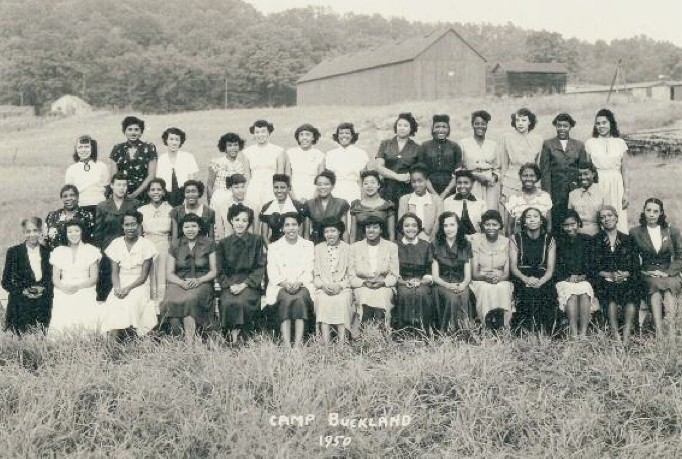
Laboring in the Shade
…wrapper tobacco were under cultivation in Connecticut. The introduction of such a labor-intensive crop to Connecticut’s economy drew migrant labor from the South, the Caribbean, and even small towns in…
Read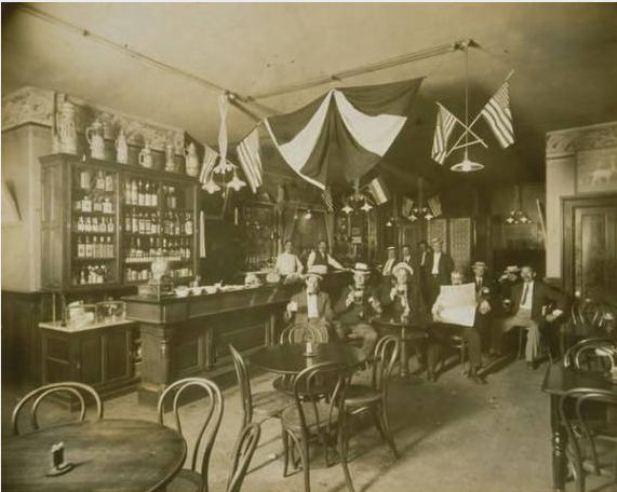
Union Brew
…meantime, the four beer companies were making plans of their own. It was 1902–a new century, after all–and the growing power of unions called for new strategies by bosses. So…
Read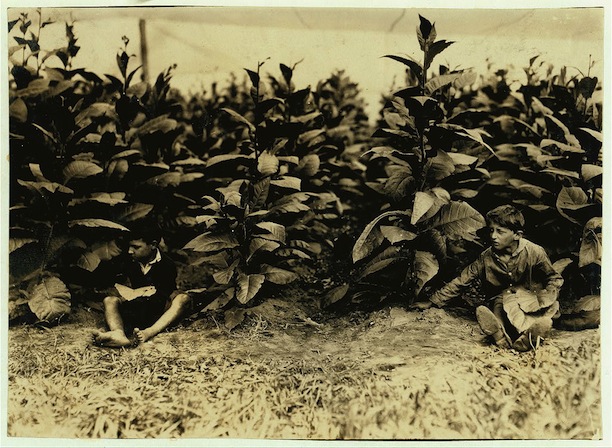
Child Labor in Connecticut
…Horrors of Child Labor to Hartford A year after their lobbying success in Washington, the Connecticut chapters of the National Consumers League presented a child labor show in Hartford’s Old…
Read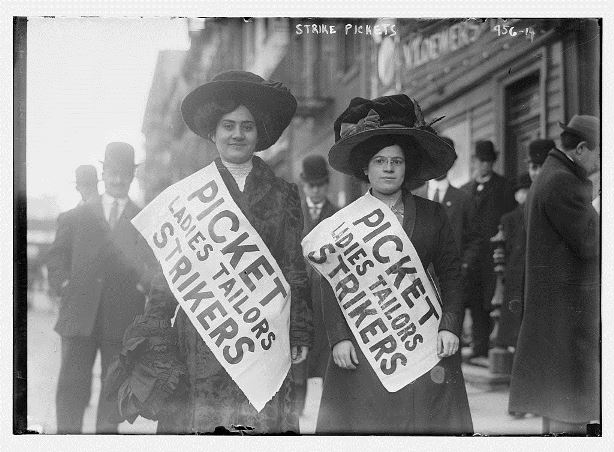
Triangle Shirtwaist Fire: Connecticut Lessons from a Tragedy
…and federal OSHA laws and labor unions’ vigilance—it is in part because of the Triangle victims. Early 20th-Century Worker Safety in Connecticut In 1911, Connecticut workplaces were extremely dangerous. On…
Read
Vera Buch Weisbord’s “Radical” Life
…to the labor movement and being an early voice for women’s rights in the workplace. Her support of striking workers helped build momentum for unions and the national labor struggle…
Read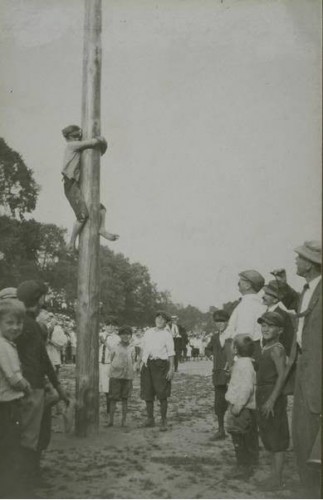
Labor Day at the Turn of the 20th Century
In February of 1889, the Connecticut General Assembly passed a bill making the first Monday of each September a legal holiday. Labor Day, an initiative of the labor movement, had…
Read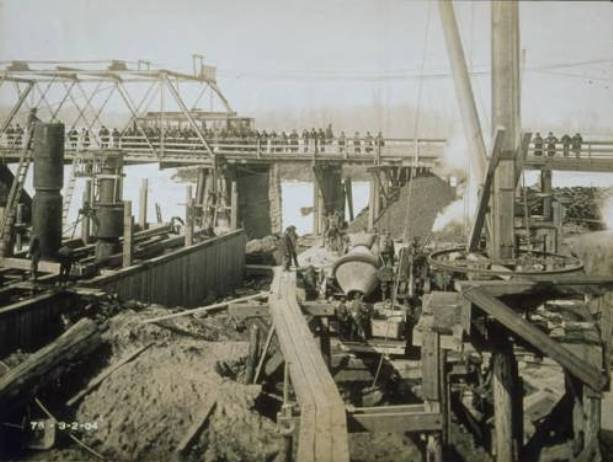
The Sand Hogs Set the Foundation for the Bulkeley Bridge
…workers, who occupied the lowest rung on the job ladder. Although unions have existed for most skilled jobs almost since this country’s founding, common laborers were not invited into the…
Read
The Rise and Fall of Manufacturing in Bridgeport: The Case of Bryant Electric
…times over the years, with the first strike of note taking place in 1915. Women assemblers not welcome in the American Federation of Labor’s craft unions led the strike and…
Read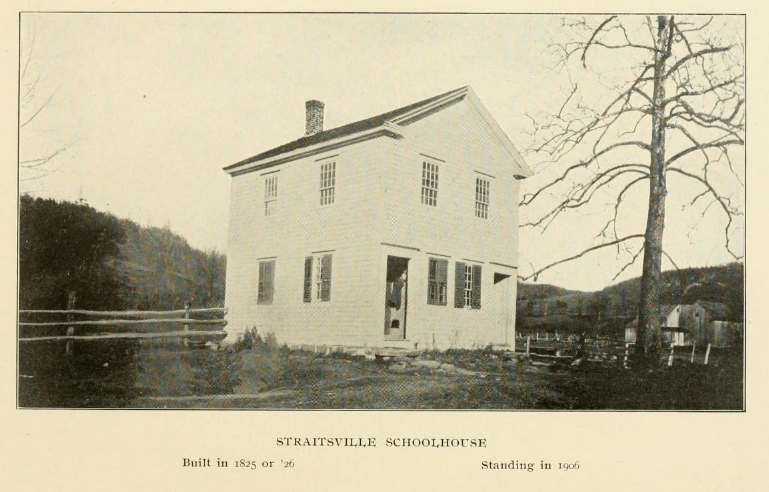
Child Labor vs. Schooling in 19th-century Naugatuck
…mechanized workplace that allowed for the deskilling of adult labor. Combined with stricter enforcement of the laws, this change in labor demand initiated the transition of large groups of children…
Read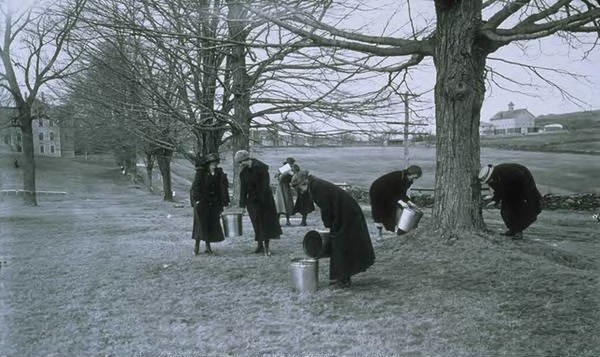
A New Source of Farm Labor Crops Up in Wartime
…rural backgrounds proved more adept at agricultural tasks than any supply of labor, male or female, from urban areas. These so-called “farmerettes” made up the backbone of Connecticut farm labor…
Read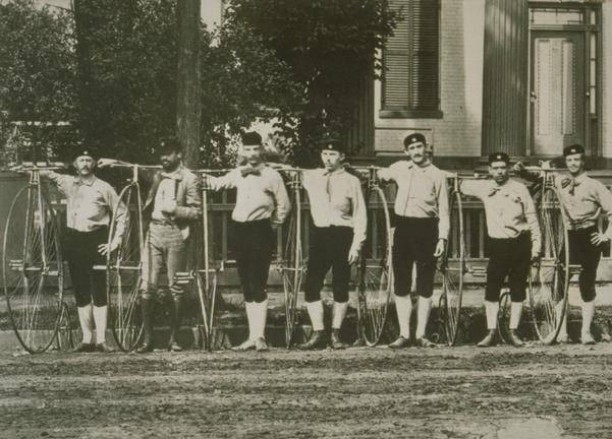
The Hartford Wheel Club: Disparity in the Gilded Age
…Connecticut, The Gilded Age: A Tale of Today had been published and a stage play based on the book reached theaters in New York and Hartford. Twain championed labor unions…
Read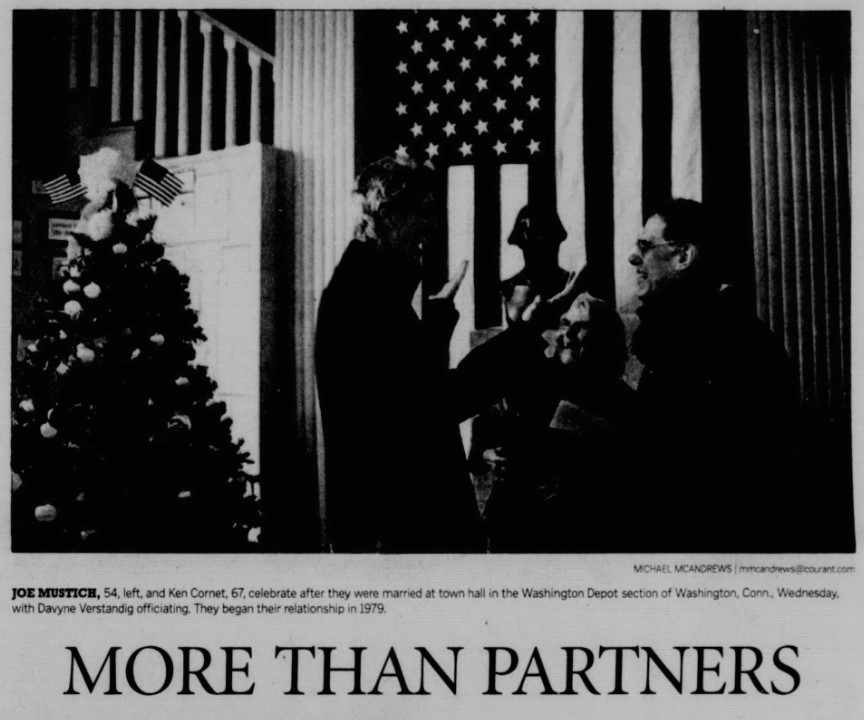
Connecticut Issues Same-Sex Marriage Licenses for the First Time – Today In History: November 12
…grant civil unions for same-sex couples, hoping to strike a compromise between gay and lesbian activists and others with religious or traditional marriage beliefs. After the state legalized civil unions,…
Read
Ending the Danbury Shakes: A Story of Workers’ Rights and Corporate Responsibility
…shrinking the hats from the article “Danbury Leads the World in Hatting” by J. Moss Ives Danbury Hatters’ Unions and Others Lobby for Worker Safety The Danbury hatters themselves also…
Read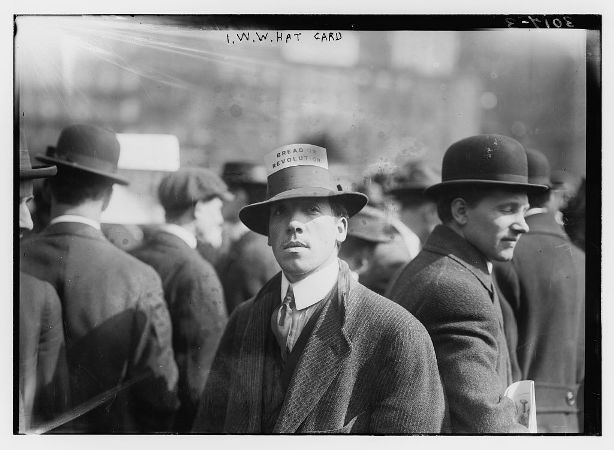
How the Wobblies Won Free Speech
By Steve Thornton Free Speech in America? For working people in the early 1900s, this right was gravely restricted. Until workers and their unions fought for it—in the courts and…
Read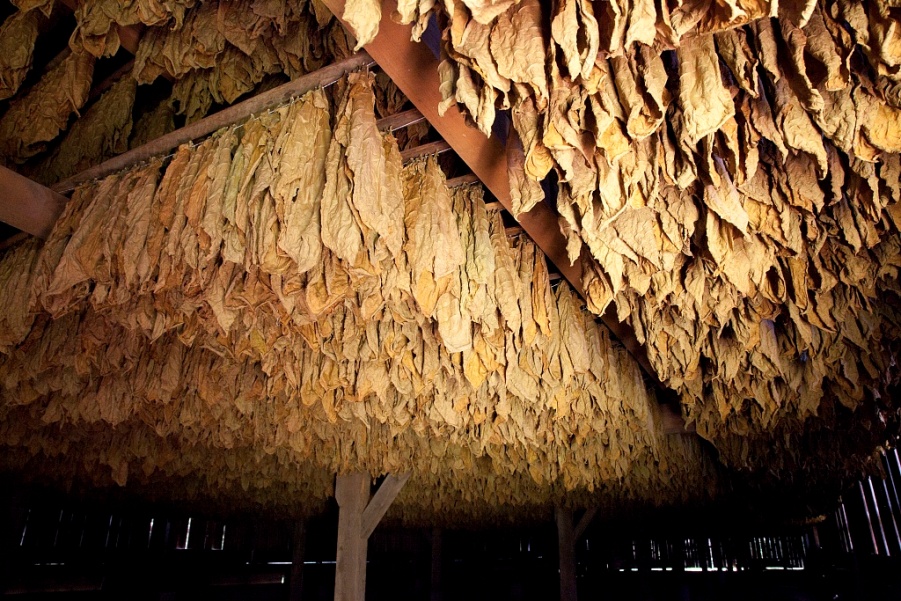
Windsor Tobacco: Made in the Shade
…Online The World War II years brought further labor shortages, as did the passing of Connecticut’s 1947 Child Labor Bill, which set age and hourly restrictions on agricultural labor. Tobacco…
Read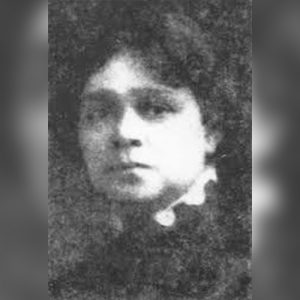
Mary Townsend Seymour: Hartford’s Organizer, Activist, and Suffragist
…the factories. Afterwards, Seymour helped 60 women organize into a union and gain seats in the Central Labor Union (the collective organization with representatives from numerous unions). According to the…
Read
Gun Wheel of the First Light Battery, Connecticut Volunteers
…the same time they accepted and perpetuated racism. Reunions of the First Light Battery The First Light Battery Veterans Association began holding annual reunions in towns around the state beginning…
Read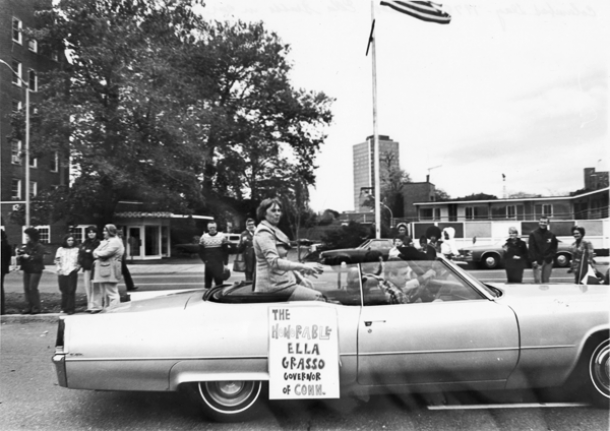
The Education of Ella Grasso
…advocate for labor reforms, particularly child labor and women’s rights in the workplace. Hewes’s scholarly achievements represented pioneering work by a woman scholar in the emerging fields of labor economics…
Read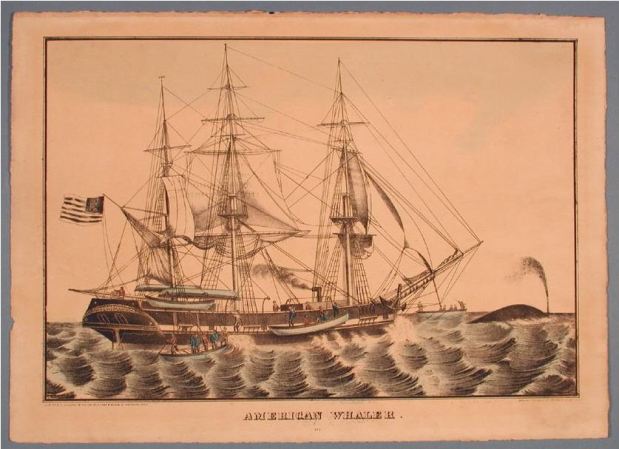
New London’s Indian Mariners
…was difficult, low-paying labor. Detail from the map Connecticut, from actual survey, Hartford, CT: Hudson & Goodwin, 1811 – University of Connecticut Libraries’, Map and Geographic Information Center (MAGIC) Two…
Read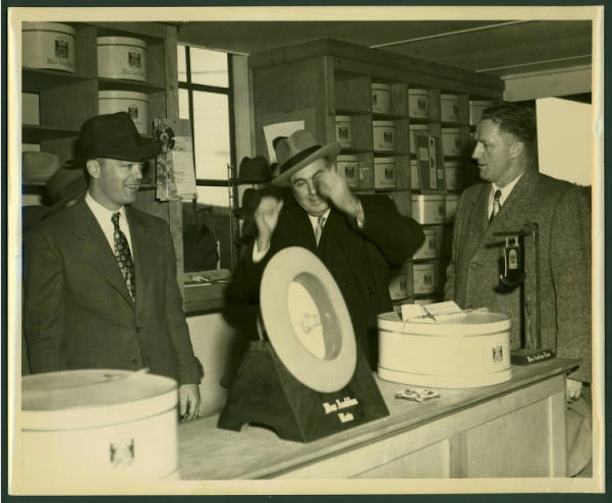
The Danbury Hatters
…demise. As covered transportation in cars and trolleys became more common, wearing hats began falling out of fashion. Additionally, the industry began to suffer from labor strife. Hatters unionized in…
Read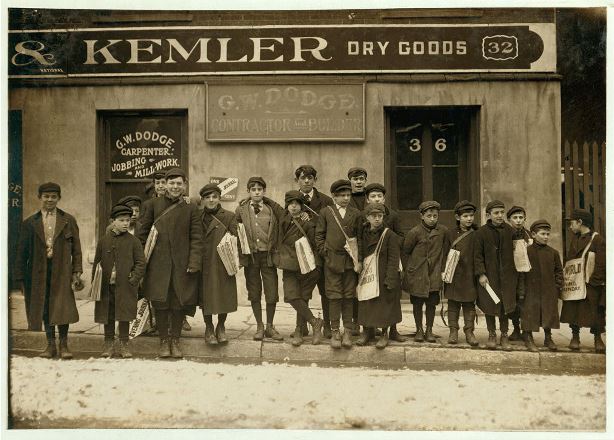
The Newsies Strike Back
…pro-labor legislation, including a bill to prohibit the state militia from interfering with labor strikes. He was endorsed by the progressive CIO and considered a solid New Dealer. The newsies’…
Read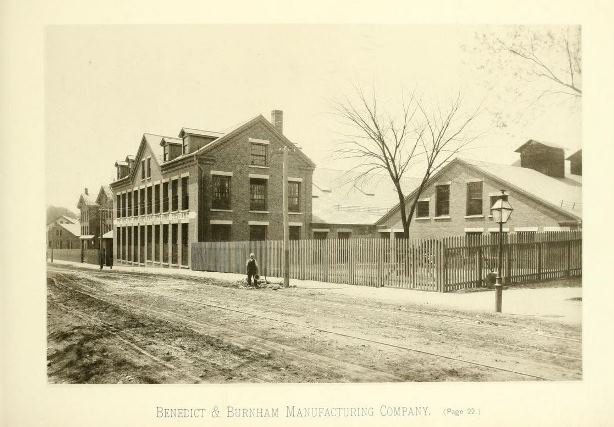
Early 19th-Century Immigration in Connecticut
…cotton mills. While many of these businesses were family-owned and operated or relied on local sources of labor (sometimes utilizing neighbors to manufacture products in their homes and return them…
Read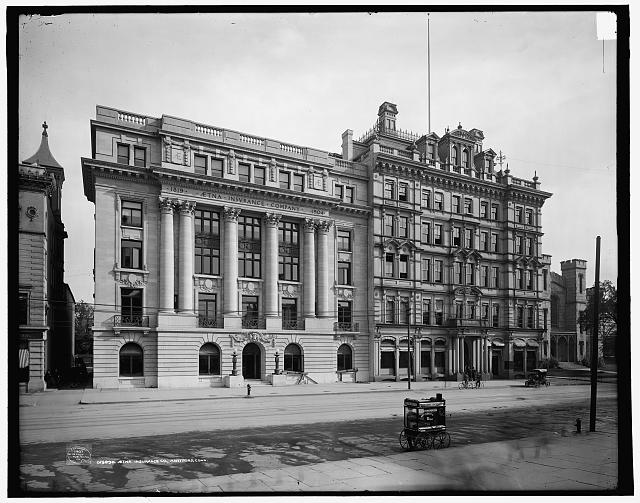
Aetna Helps Make Hartford “The Insurance Capital of the World”
…liability department to appeal to the increased focus upon labor rights and unions in the early 20th century, and the creation of an automobile insurance company in 1913 to meet…
Read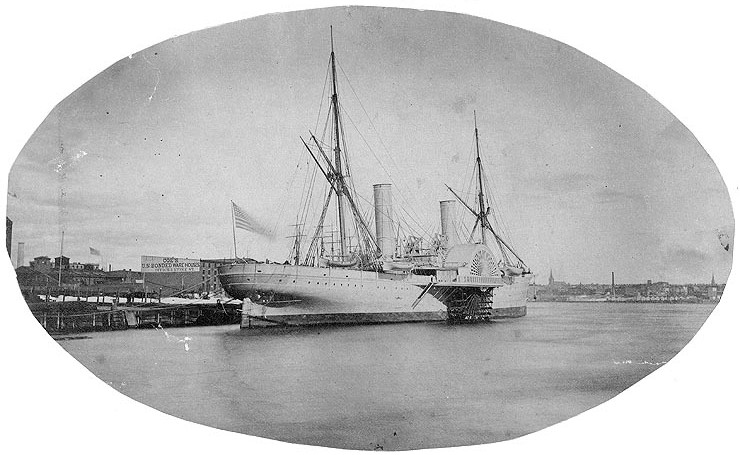
They Also Served: Chinese, Southeast Asians, and Hawaiians in the American Civil War
…he lived in downtown New Haven where he worked as a tinsmith. Unlike Pierce—who does not appear to have joined any veterans’ organization—Dardelle faithfully attended his regiment’s annual reunions and…
Read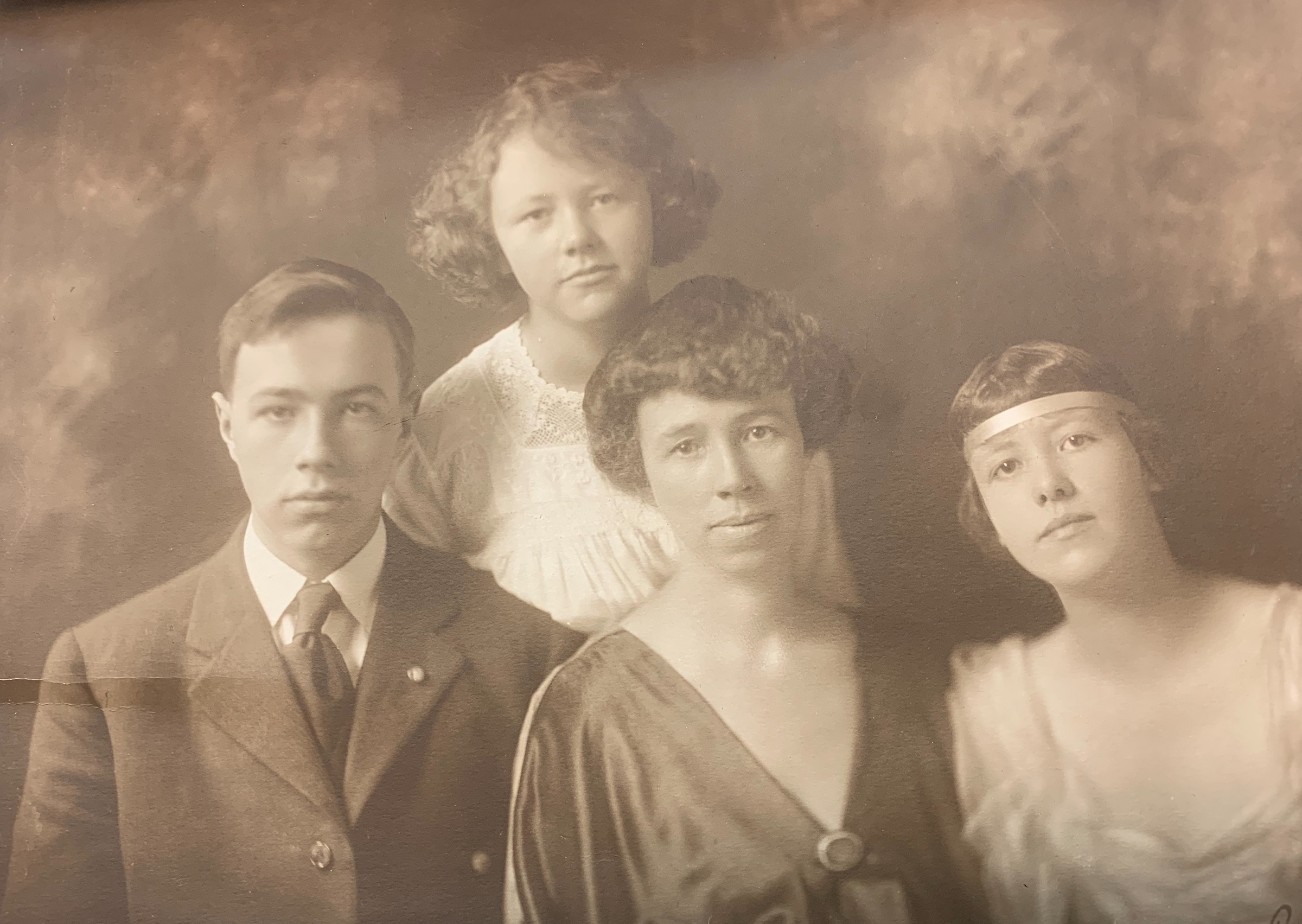
Josephine Bennett: Hartford’s City Mother
By Steve Thornton The history of the early Connecticut women’s movement is not complete without the story of militant suffragist, feminist, anti-imperialist, and labor pioneer Josephine Day Bennett (1880-1961). Bennett…
Read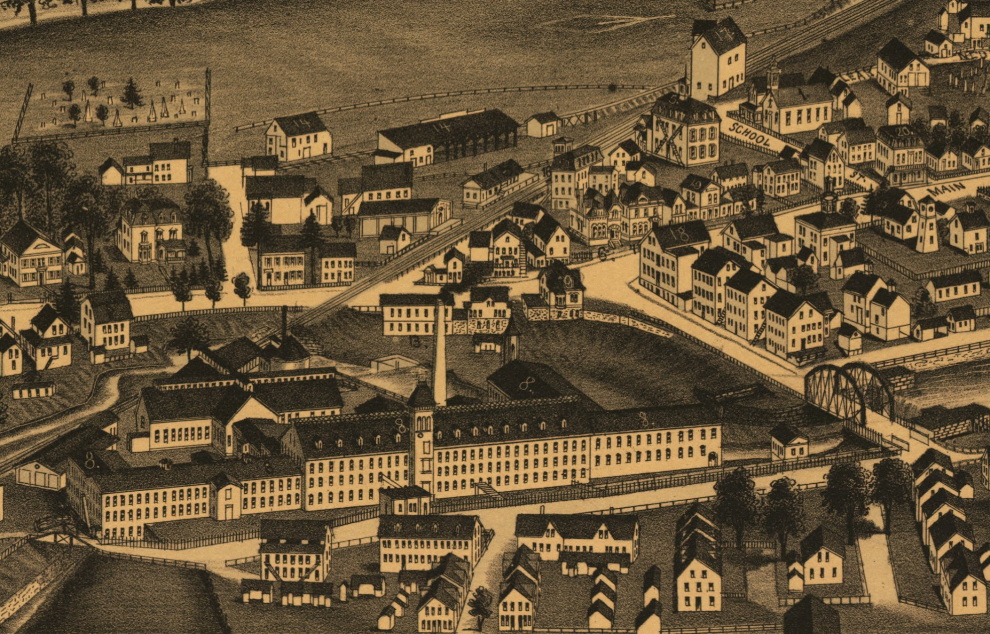
The Industrial Revolution Comes to Jewett City
…nature of day-to-day mill operations, including insights into relations between management and labor. As workers shifted from being small producers of hand-made materials to being paid laborers in increasingly mechanized…
Read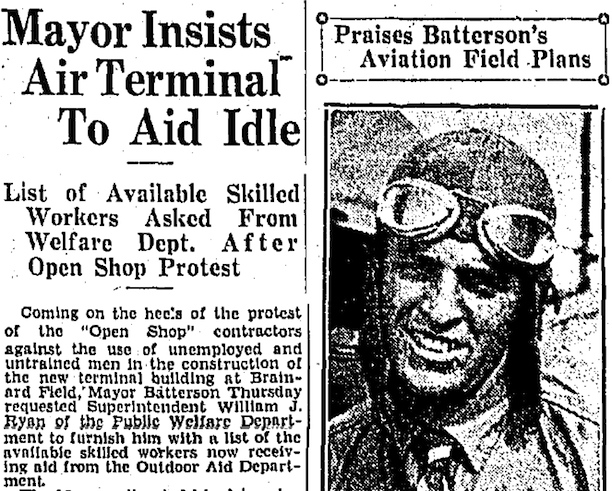
“Something to Show for Our Work”: Building Brainard Airport
…order to spur the local economy. This required expanding Brainard’s facilities and replacing the grass airstrip runways with blacktop pavement. Looking for cheap sources of labor for the project, officials…
Read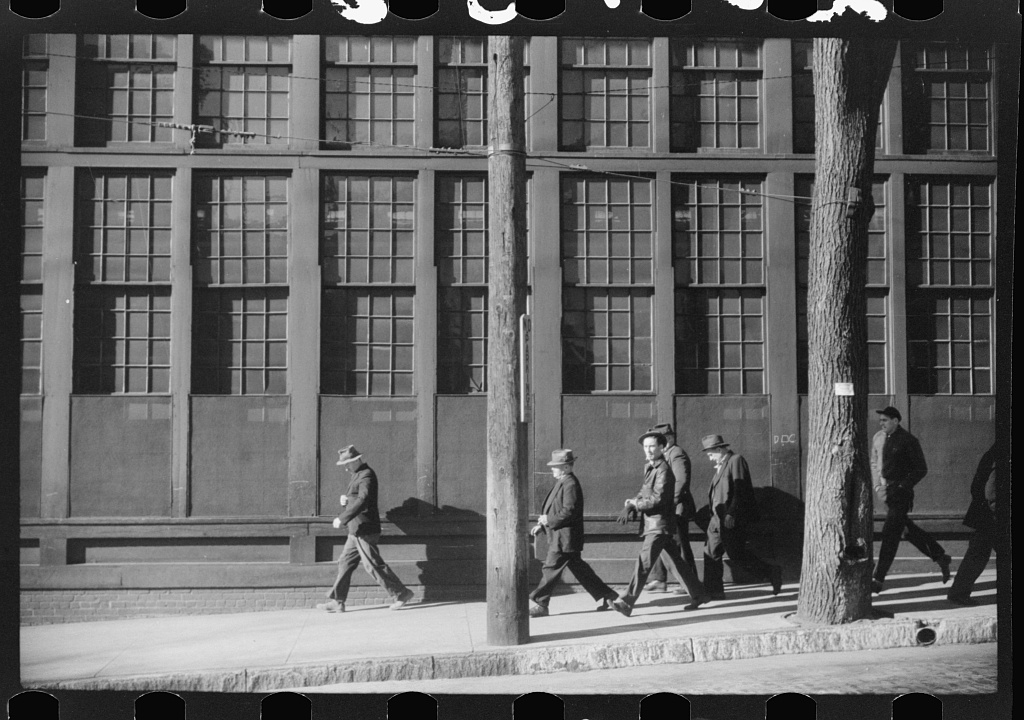
Work
The story of work in Connecticut mirrors that of much of the nation. From colony to early statehood, Connecticut’s labor force consisted primarily of agricultural laborers, skilled craftsman, and local…
Read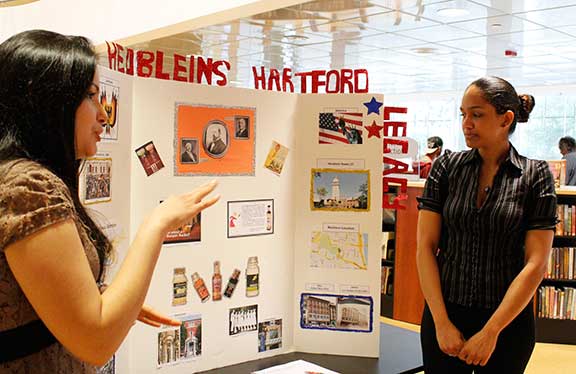
Capital Community College Students Explore Hartford’s Immigrant History…In Their Own Words
…United States was very prominent in the early 20th century especially among Italians escaping the social and economic hardships in rural Europe. Italy’s economy was suffering and the laborers were…
Read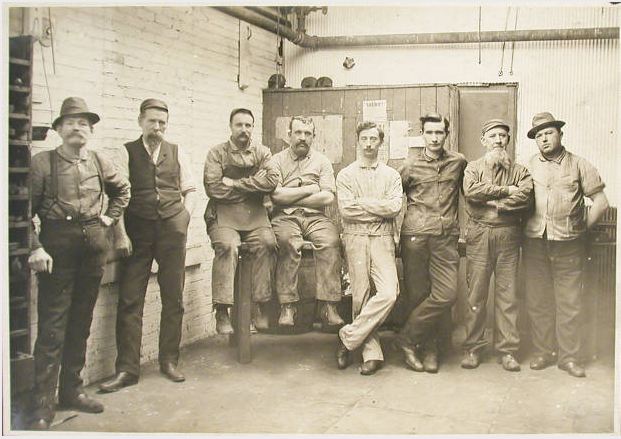
Late 19th-Century Immigration in Connecticut
…males who came in search of work. As the demand for unskilled labor grew in the Northeast, foreign workers increasingly found employment in industrial centers. Toward the end of the…
Read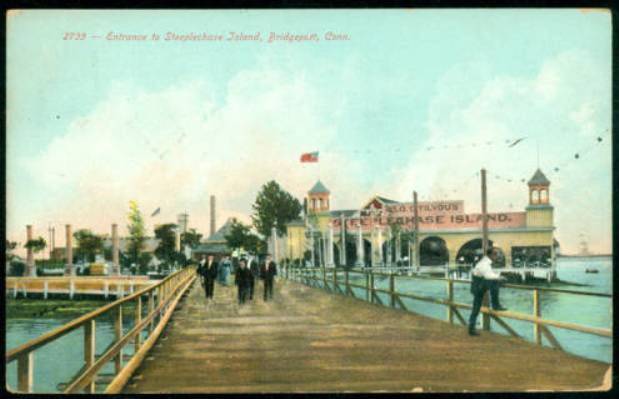
A Unique Island Attraction in Bridgeport
…War reunions, and Connecticut League baseball games. Visitors to the island in 1911 even witnessed an experimental aviator take off from the park and fly over Long Island Sound for…
Read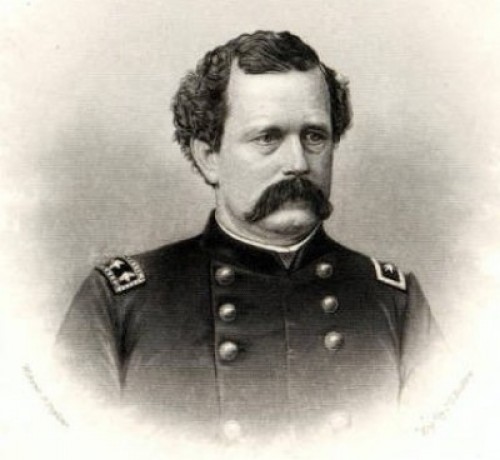
General Joseph R. Hawley Helps Commemorate Connecticut’s Civil War Soldiers
…Day commemorations at cemeteries, formed veterans’ groups, and organized annual reunions—from the army to the regimental level—on battlefields and in local communities. The groups preserved battle sites, consecrated national cemeteries,…
Read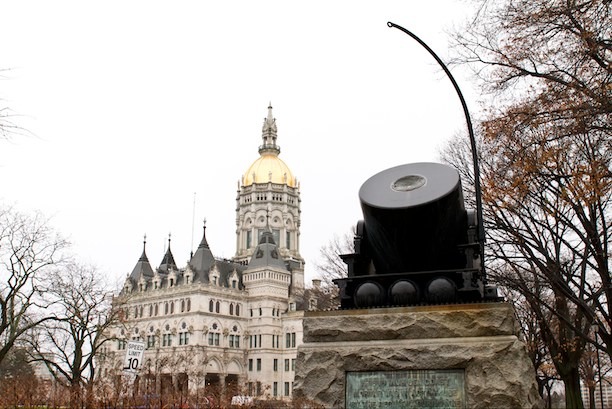
A Monument Memorializes the Fallen
…countered the New York claim. The claim came from a Manchester resident, who had a grandfather in the First Connecticut. His grandfather left behind relics of the regiment’s reunions, which…
Read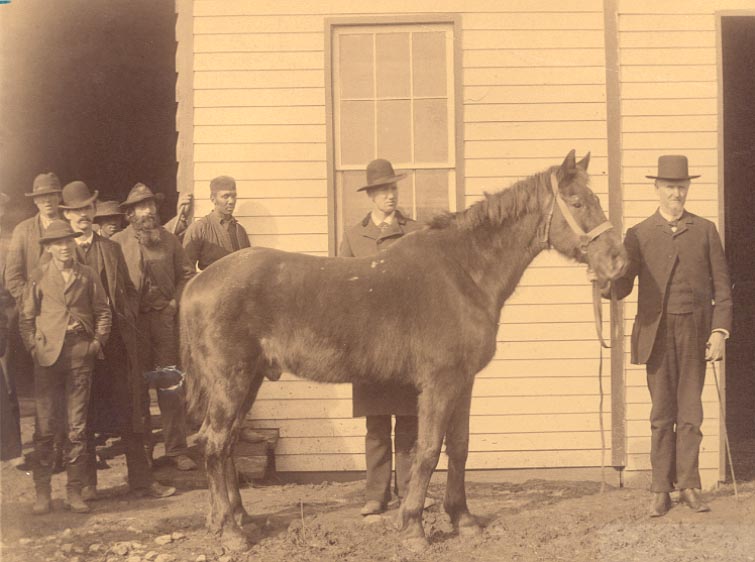
Little Sorrel, Connecticut’s Confederate War Horse
…then the Confederate Soldiers Home at Richmond’s Robert E. Lee Camp. After years of making appearances at county fairs and Confederate soldiers’ reunions, Little Sorrel passed away in March of…
Read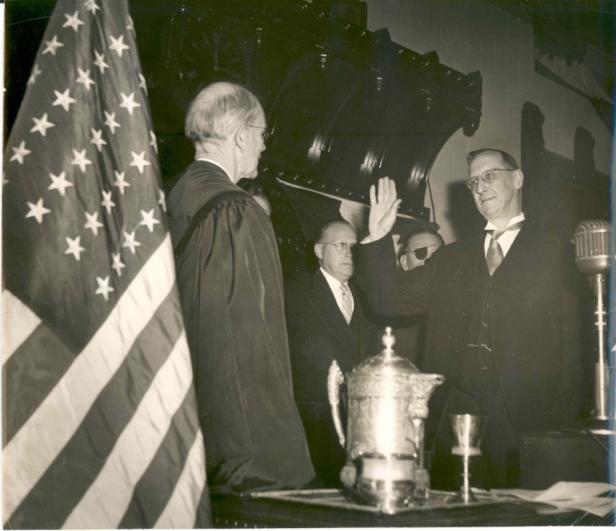
Did You Know a Connecticut Governor Was a US Spy?
…needs, and financial limitations. He sought the support of labor by explaining that it was American labor leaders who assisted the OSS in organizing foreign labor leaders into sabotage crews….
Read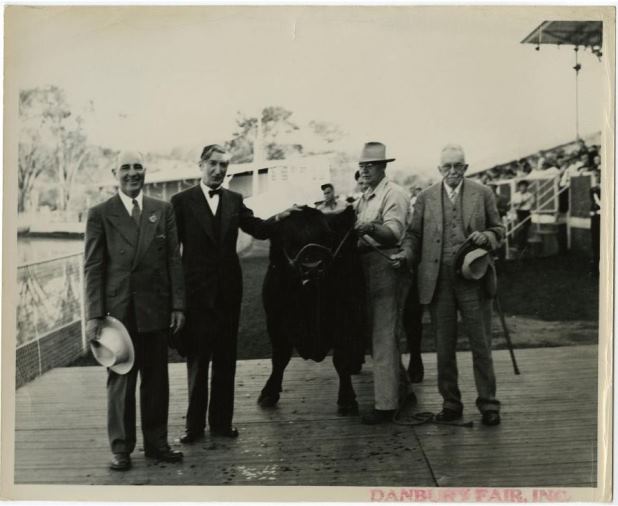
Hard Times: Governor Wilbur Cross and the Great Depression in Connecticut
…nation, slipped into the Great Depression. Labor unrest proved widespread. The election of Democrat Franklin D. Roosevelt as president in 1932 resulted in a series of efforts, including the National…
Read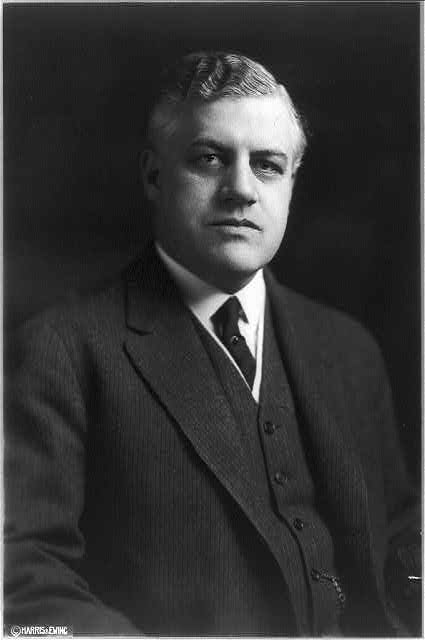
The “Red Scare” in Connecticut
…fear of growing labor unrest helped fuel this massive crackdown. Backdrop to the Red Scare The new Espionage Act and strict immigration laws gave the government power to criminalize free…
Read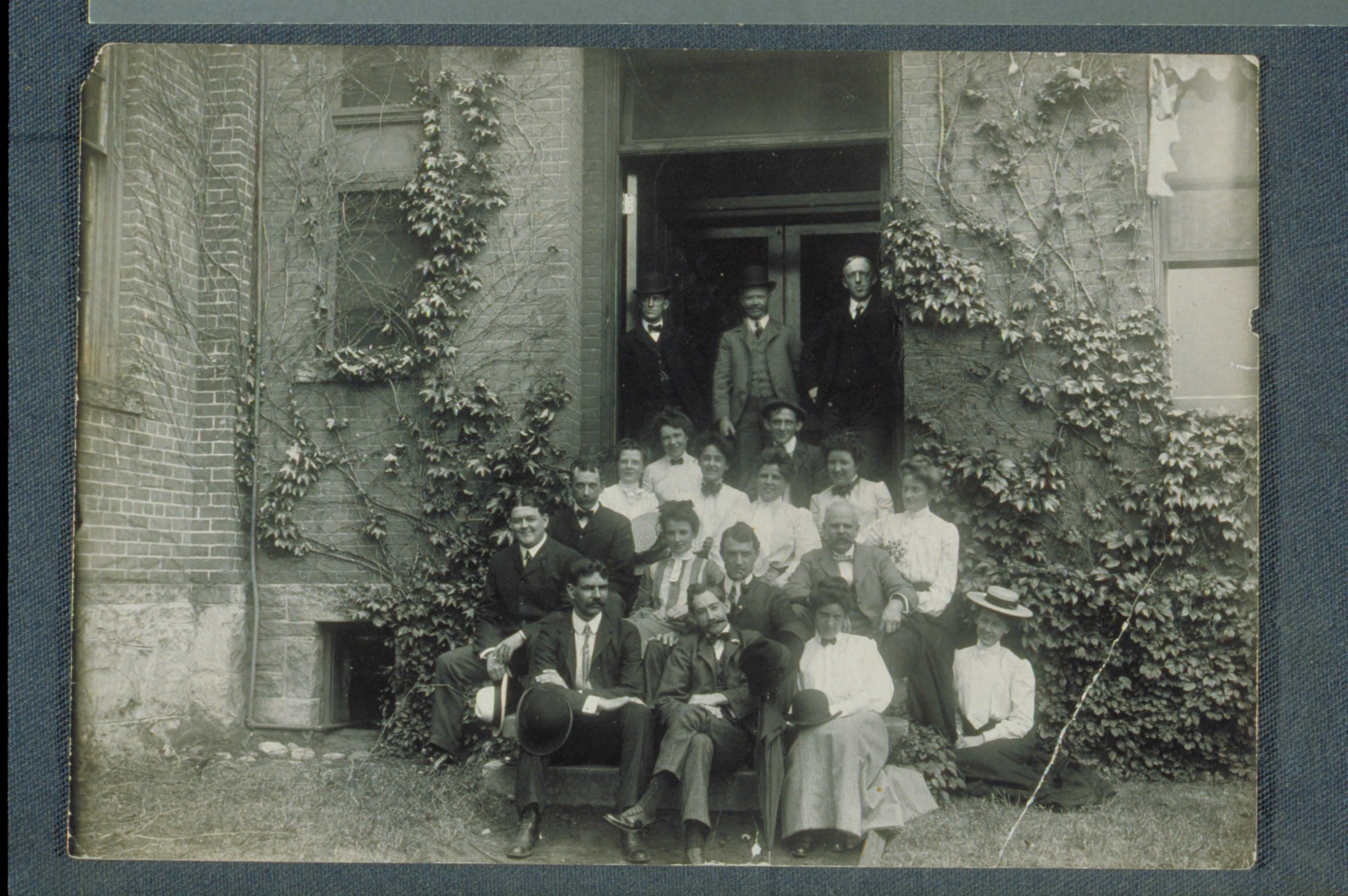
Connecticut Pin Makers
…easy access to the brass industry, marketing distribution channels, competent management, a readily employable labor supply, and sustained demand from buyers. It was not until after competitive pressures gained momentum…
Read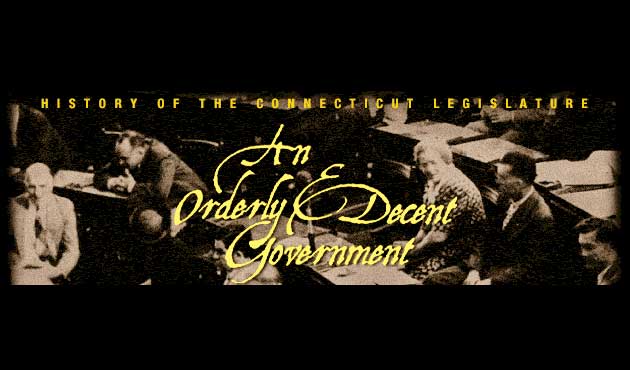
An Orderly & Decent Government: Searching for the Common Good, 1866-1887
…and established the Bureau of Labor Statistics to collect data on employment and wages. Representative Stephen Walkley, a member of the Select Committee to Revise the Pauper Laws, was part…
Read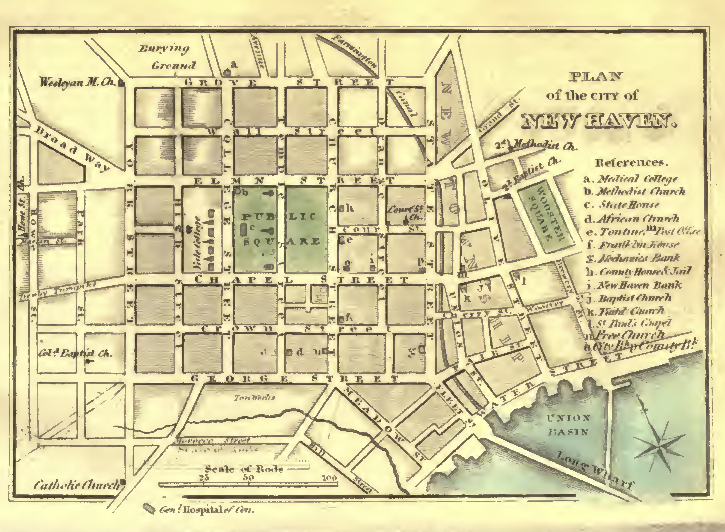
The Successes and Struggles of New Haven Entrepreneur William Lanson
…housing near their workplace. Construction of the Farmington Canal led to a dramatic influx of poor and Catholic Irish laborers into the town. Hundreds of other laborers and mariners followed…
Read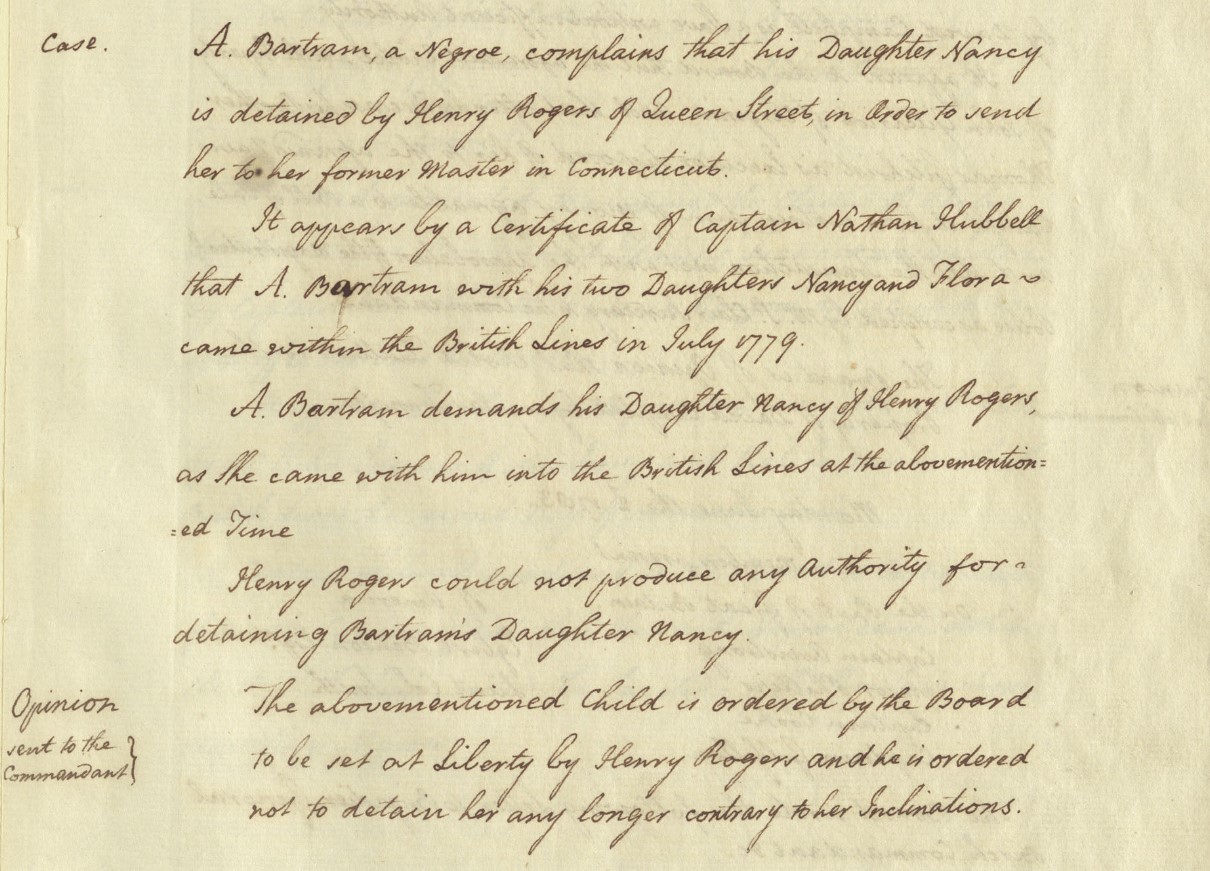
Black Loyalist Refugees: Toney Escapes During the Burning of Fairfield
…to the practice of forced Black labor had begun to grow. In a 1772 decision, Chief Justice William Murray—England’s most powerful judge and 1st Earl of Mansfield—reportedly declared that “the…
Read
Merritt Parkway Creates Scenic Gateway to New England
…the “Queen of Parkways,” however, was accompanied by controversy and scandal. Although its construction employed more than 2,000 laborers and met the goals of relieving congestion, preventing accidental loss of…
Read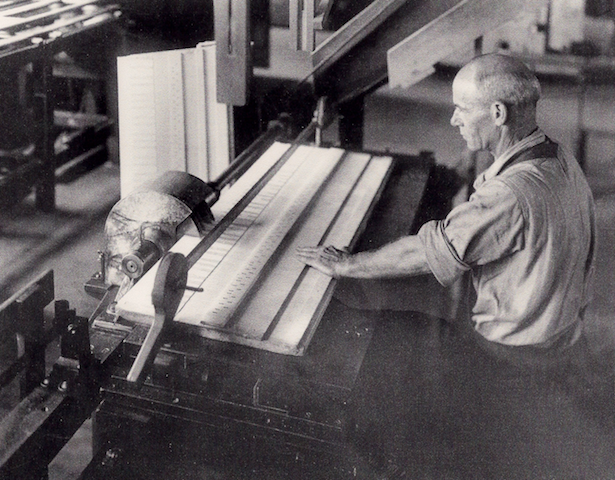
Ivory Cutting: The Rise and Decline of a Connecticut Industry
…curtailed piano and ivory production when the government called for labor to be redirected toward military needs and Pratt, Read & Company’s workers manufactured gliders for the war effort. After…
Read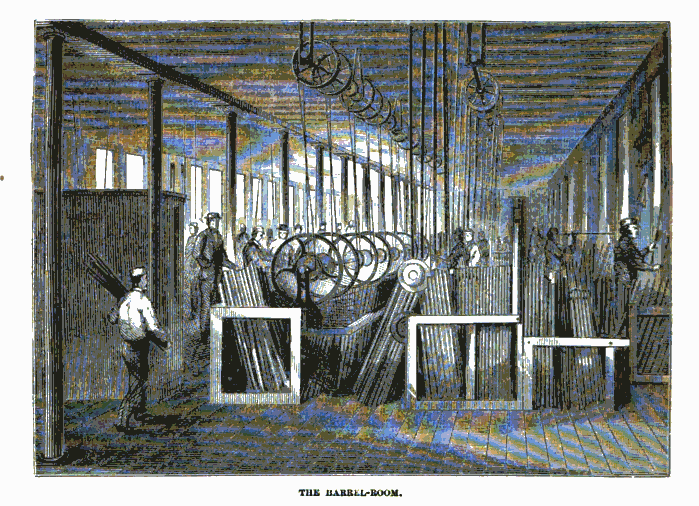
Norwich’s “Volcanic” Past
…Thurber moved their pistol-making operations from Grafton, Massachusetts, to Norwich. While the enterprise was only in Norwich for a few years, they left behind a local labor force trained in…
Read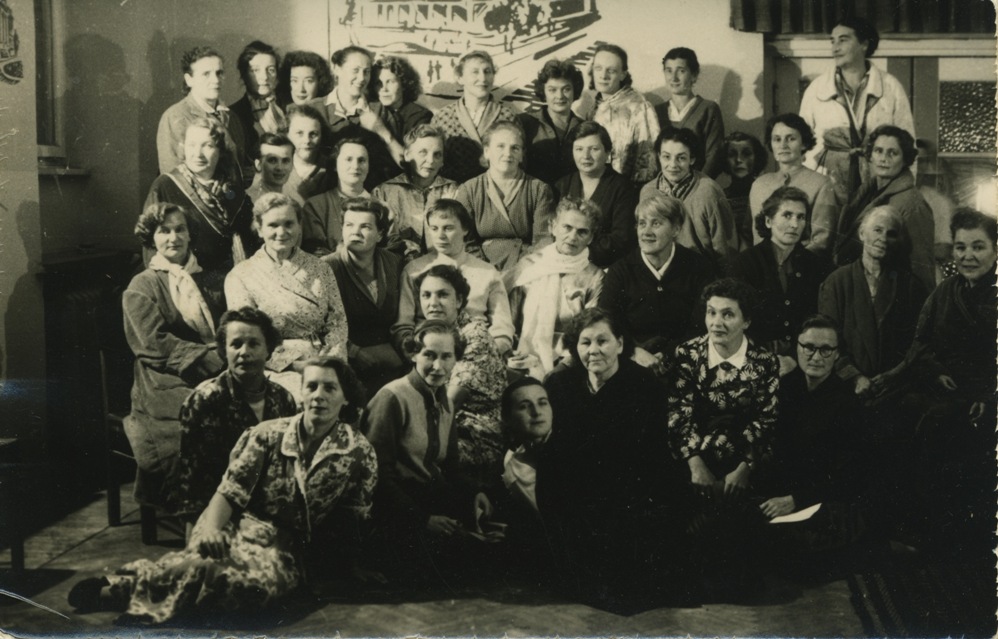
A Godmother to Ravensbrück Survivors
…an impact on Ferriday’s life. Concentration Camp Prisoners Subjected to Medical Experiments Ravensbrück, located 50 miles north of Berlin, was a forced labor camp for women. Prisoners from more than…
Read
Andover Looks Good on Paper
…times by 1928. Each time, the Case enterprise again rose from the ashes. The Great Depression hit the area hard and in 1934, after surviving a 10-day labor strike, the…
Read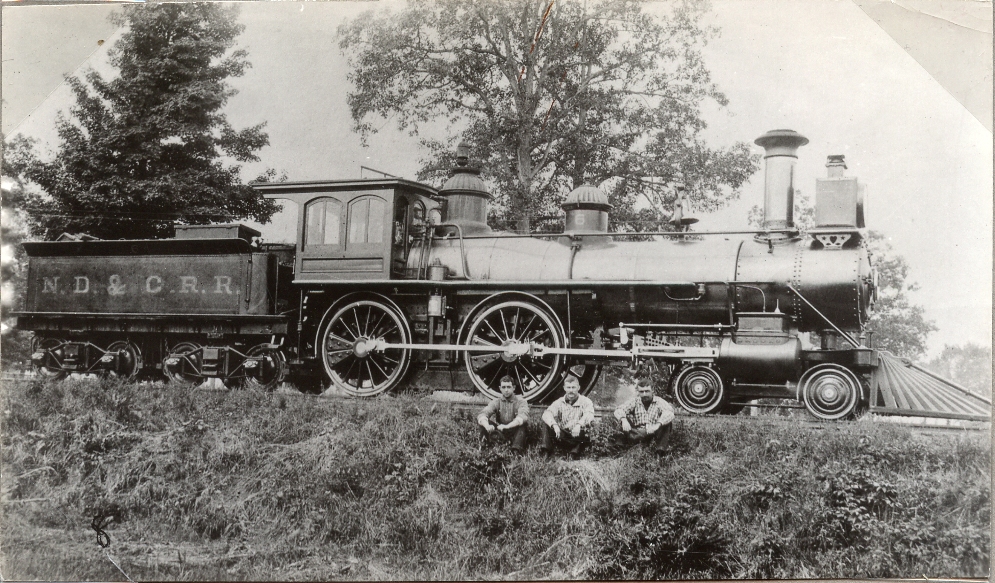
Rails and Paper Trails
…between cities, and by 1890 a network of railroad tracks connected virtually every town in the state. The physical labor involved in establishing, supporting, and expanding the railroad system was…
Read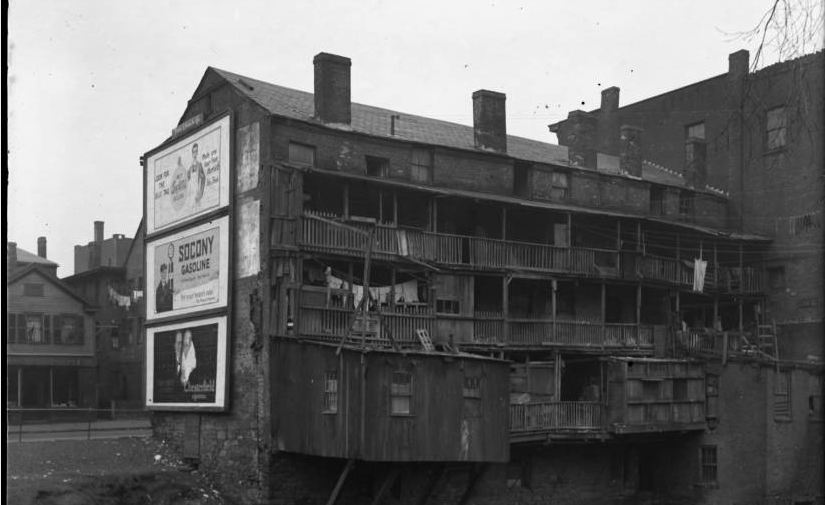
Hartford’s Sex Trade: Prostitutes and Politics
…they resisted his sexual advances. A federal Department of Labor study had already found that nearly half the prostitutes surveyed had previously worked in factories and shops before turning tricks….
Read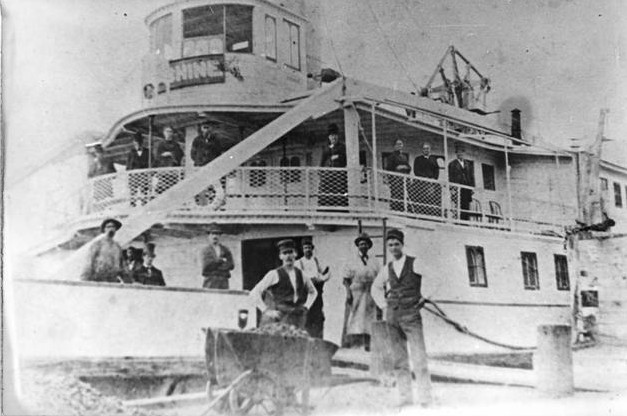
Rising Tide: Steamboat Workers on the Connecticut River
…the war ended, however, the labor supply was plentiful and wages were periodically slashed. Over the next 15 years, steamboat workers earned 30% less than they had during the war….
Read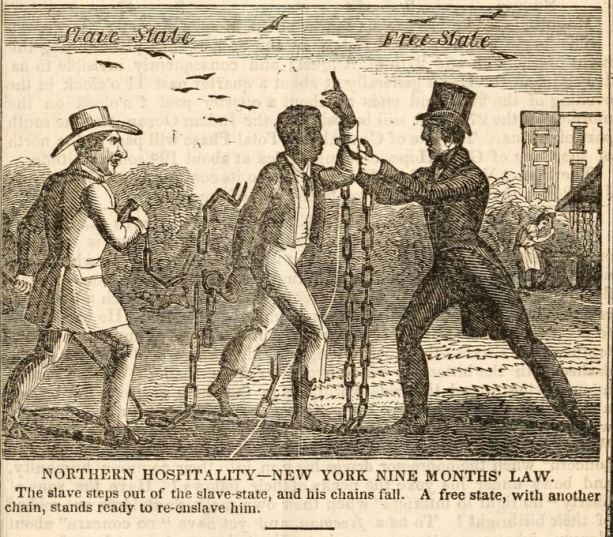
The Fugitive and the Hero
…the owner when the ship reached port. Slave hunting was a profitable business. The U.S. Constitution specifically required the return of escaped “persons held to service or labor.” The government…
Read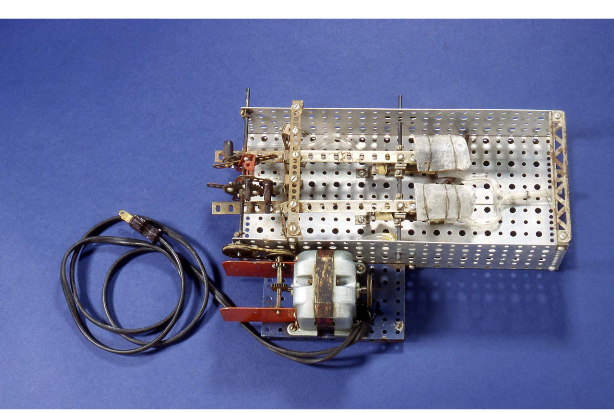
Heart Pump out of an Erector Set – Who Knew?
…that William Sewell Jr., a Yale Medical School student, built the first “artificial heart” out of Erector Set pieces (including the motor and metal beams), readily available laboratory supplies, and…
Read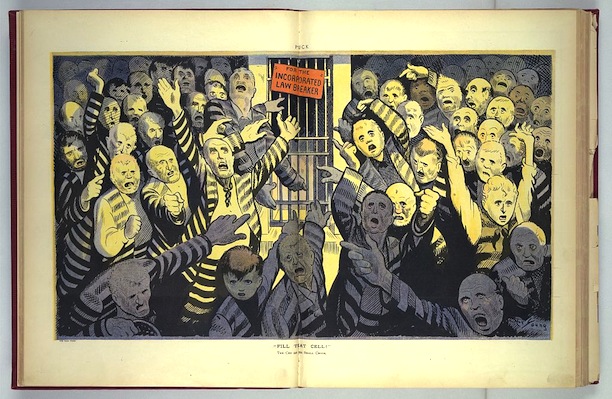
Art Young, Radical Cartoonist
…labor strikes in Lawrence, Massachusetts, and Paterson, New Jersey, and, for a short time, the Russian Revolution. Some straddled both worlds. Their numbers included photographers such as Carl Van Vechten,…
Read
North and South: The Legacy of Eli Whitney
…a milling machine, trip hammers, and other labor-saving devices, all power-driven. He never patented any of them. Once workers manufactured all the necessary parts, they could quickly assemble the muskets,…
Read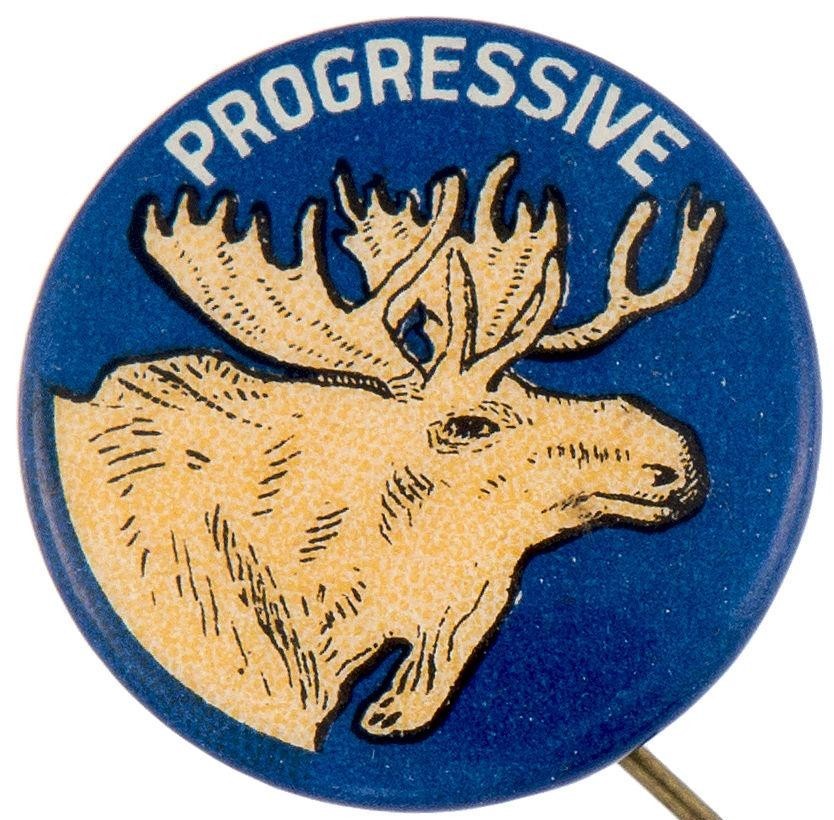
The Bull Moose Party in Connecticut
…formed Progressive Party. The Progressive Party supported organized labor against big business, was in favor of women’s suffrage, and even proposed a national health service. Most of the party’s followers…
Read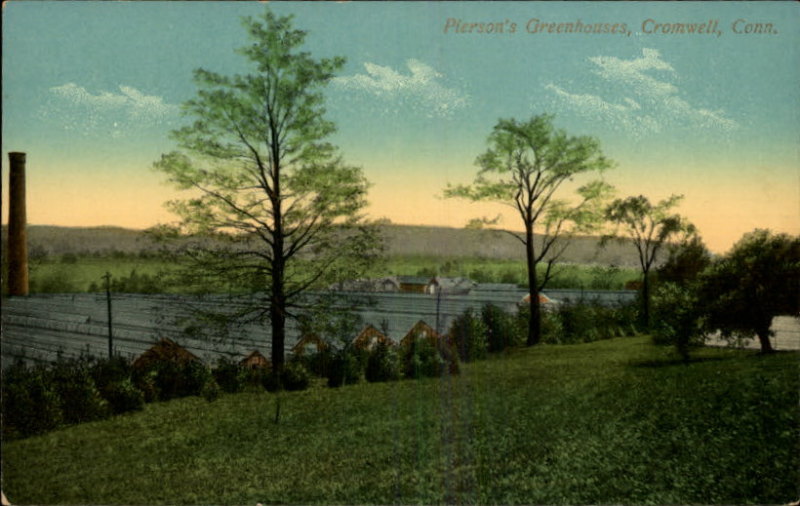
The Rose King of America Transformed Cromwell’s Landscape
…Cromwell that evolved into the largest commercial rose growing enterprise in the country. Pierson brought more than just economic prosperity to Cromwell, however. The company’s labor and production requirements changed…
Read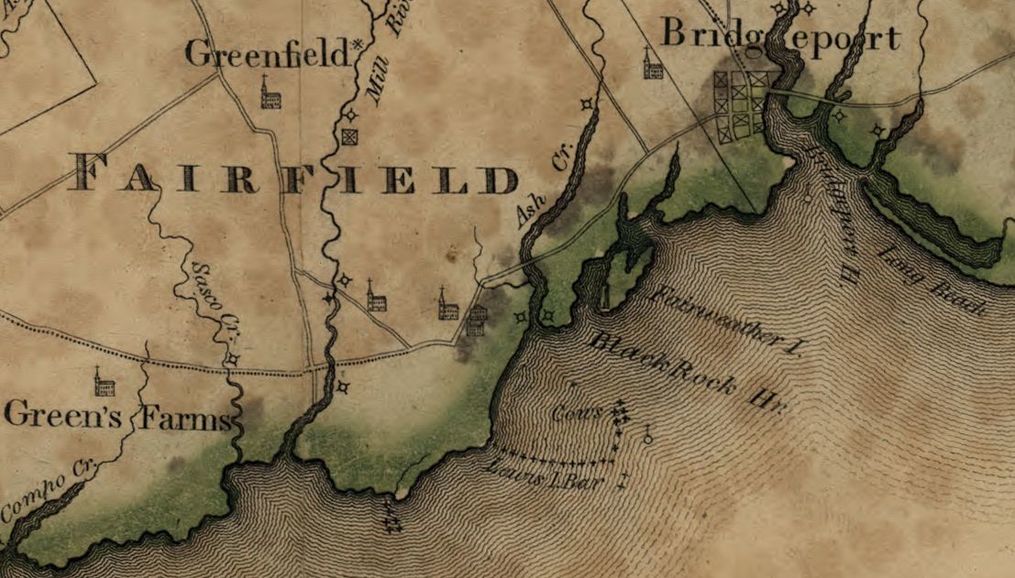
Caleb Brewster: A Patriot Against Freedom
…Another possibility is that Brewster “rented” Oliver’s labor from the Strongs. It was not uncommon for people to pay enslavers a fee in order to use their enslaved labor for…
Read
Brass City/Grass Roots: From Farmers to Developers: The Rasmussens of Town Plot
…by knocking on the doors of the Irish and Lithuanian folks.” [Ernest Rasmussen, “The Steward of Malmalic Farm” manuscript, ca. 1950s-60s] When WWI made farm labor scarce, Hans Rasmussen began…
Read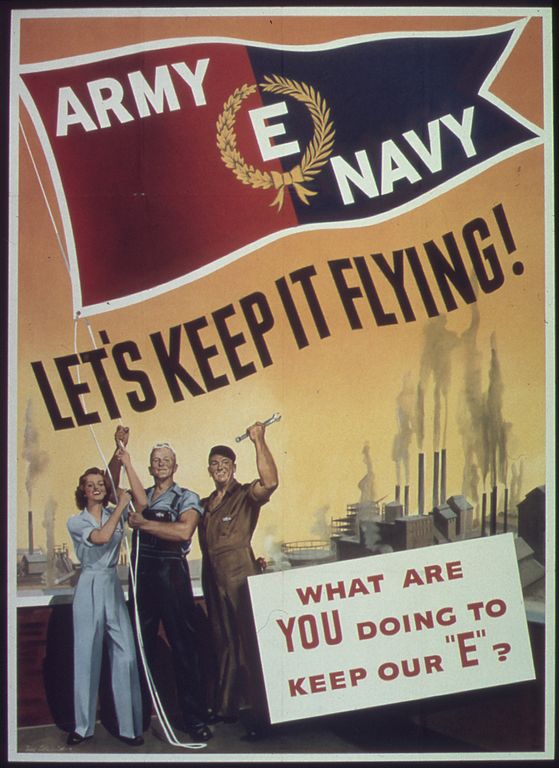
Army-Navy “E” Award Honors Connecticut for Support Against the Axis Powers
…facilities.” Other factors included: overcoming of production obstacles, avoidance of stoppages, maintenance of fair labor standards, training of additional labor forces, effective management, record on accidents, health sanitation, plant protection,…
Read
Connecticut’s Mulberry Craze
…could provide enough nourishment for a million silkworms. Feeding the silkworms, Cheney Brothers, Manchester, ca. 1880s, 1979.25.33 – Connecticut Historical Society A Laborious Business By the early 1800s Connecticut was…
Read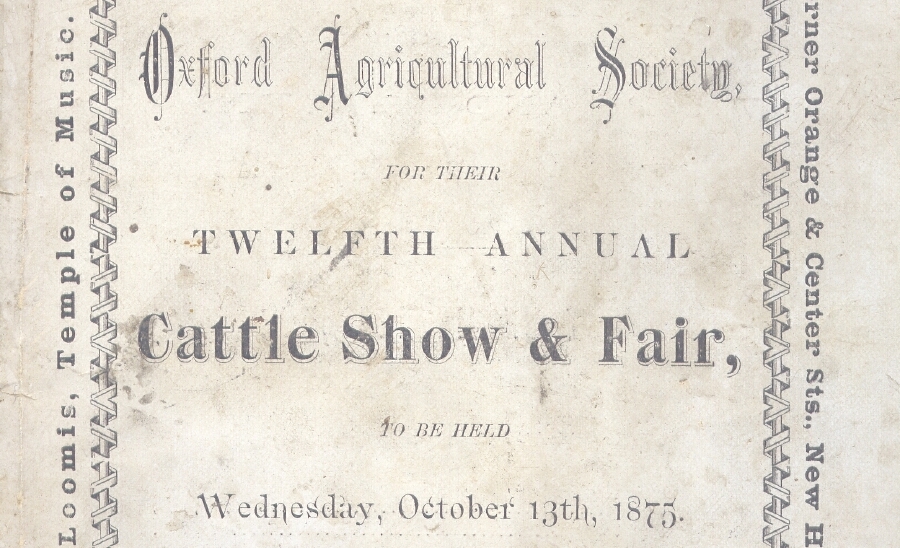
Establishing Roots in Oxford
…in town. What remained was a handful of small craftsman-operated shops. With manufacturing on the rise in surrounding areas, Oxford’s supply of mill laborers moved to more prosperous industrial centers…
Read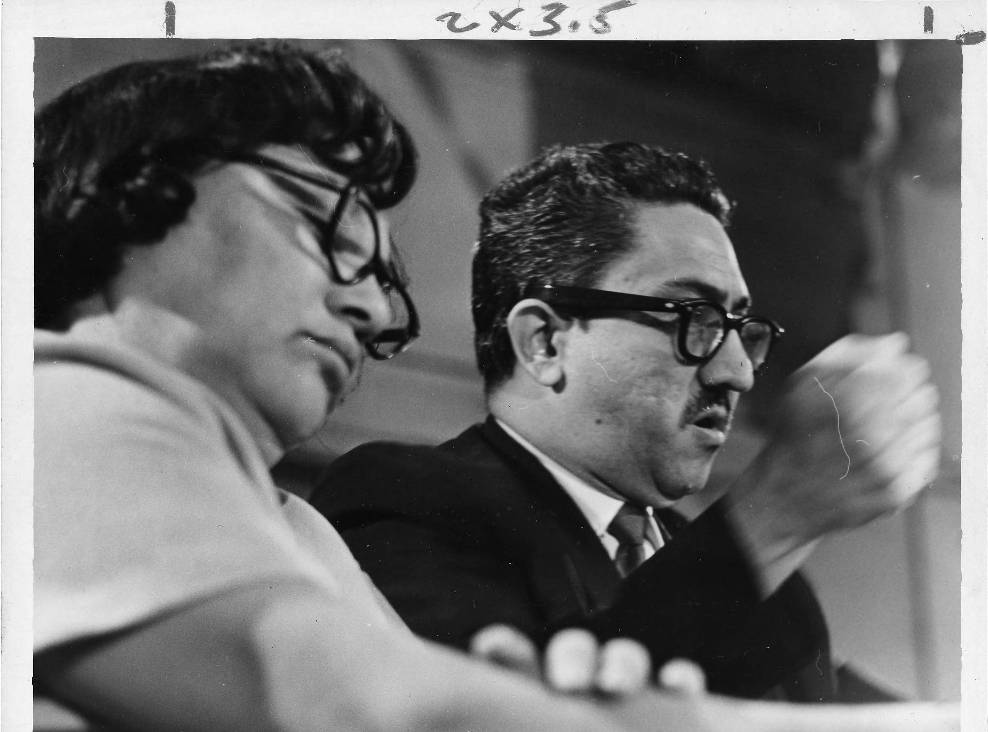
Maria Colón Sánchez, State Representative and Community Advocate
…her parents and five siblings and headed to Hartford where she lived with an aunt. With only an 8th grade education, she worked various jobs, including laboring in Connecticut’s tobacco…
Read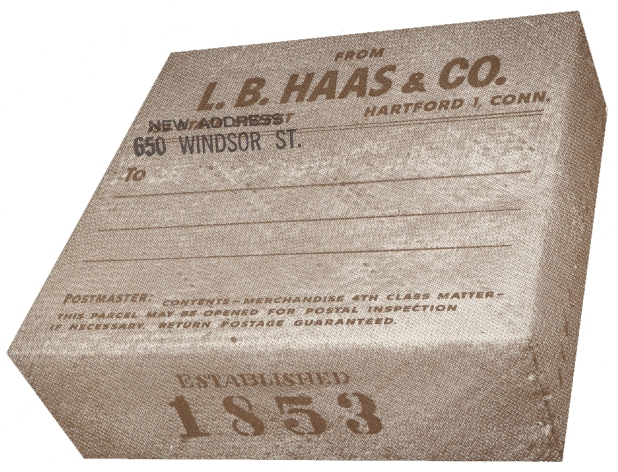
Cash Crop: L.B. Haas & Co. and the History of Tobacco in Connecticut
…Hazardville section of Enfield. Like most Connecticut growers, Haas specialized in shade tobacco—a superior quality, labor-intensive crop grown under white netting to mimic a tropical environment—which became Connecticut’s most valuable…
Read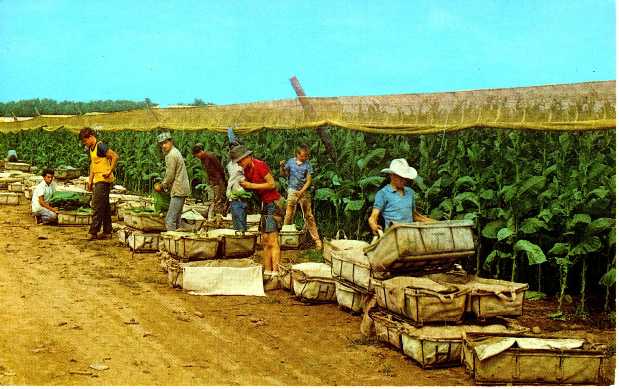
Literacy Tests and the Right To Vote
…were fast approaching. The farm hands hailed from Puerto Rico but were presently living at Camp Windsor, a local migrant workers’ barracks where seasonal laborers were required to stay. Postcard…
Read
Evelyn Beatrice Longman Commemorates the Working Class
…dozen labor strikes throughout the state: textile workers in Putnam and New London, fur workers in Danbury, necktie and shirt makers in New Haven, and laborers in Newtown. Even unemployed…
Read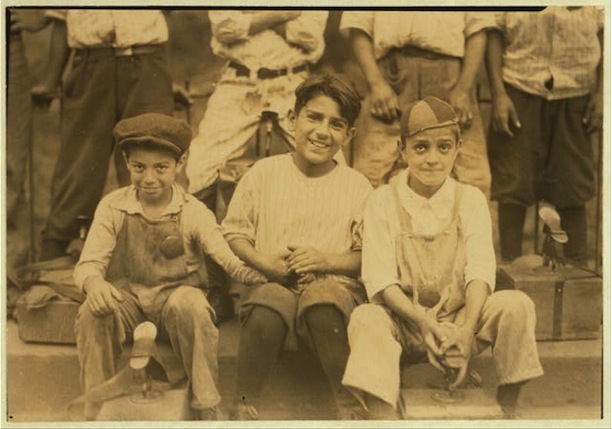
Boot Blacks and the Struggle to Survive in Hartford
…Child Labor Committee Bootblacks in American Culture Bootblacks have long been the subject of nostalgia in American culture, with stories in the local press about colorful figures like Speck Macton…
Read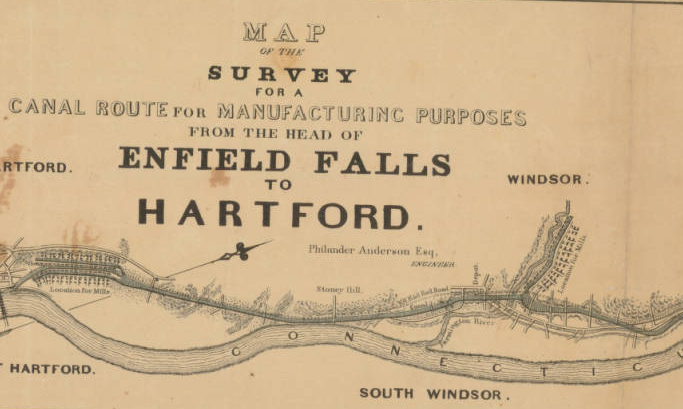
Windsor Engineers Success
…400 men labored under the direction of Canvass White—the engineer who oversaw the building of the Erie Canal. Builders and engineers saw value not only in improving transportation on the…
Read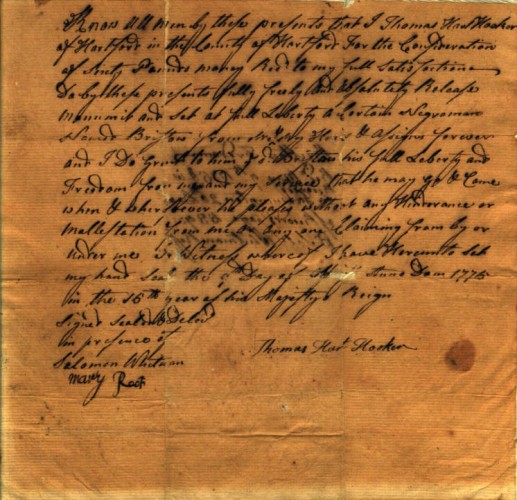
Gradual Emancipation Reflected the Struggle of Some to Envision Black Freedom
…end slavery. Moved by the Revolution’s celebration of liberty and the emergence of thousands of newly free blacks who had fought and labored responsibly during the war, states in the…
Read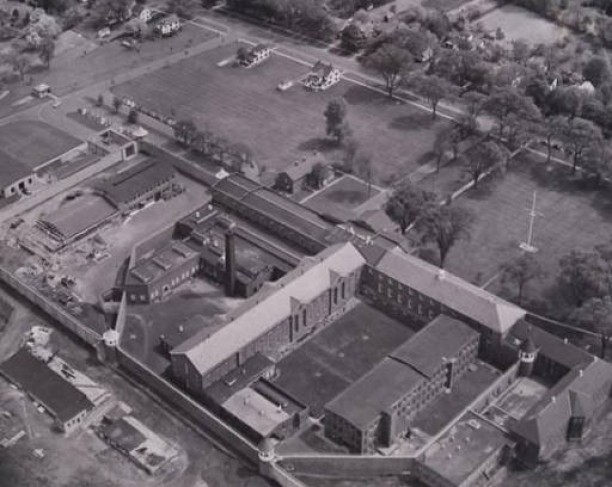
Wethersfield Prison Blues
…in New York, and the prison’s administration stressed prisoner rehabilitation during incarceration: prisoners labored by day to learn a trade, were allowed plenty of fresh air and exercise, and were…
Read
Brass City/Grass Roots: Farming as Recycling: The Becces in the North End
…wife, Lucia, and their daughters planted and tended the huge vegetable garden and cooked three abundant meals daily for their laborers, the immediate family, and the constantly visiting friends and…
Read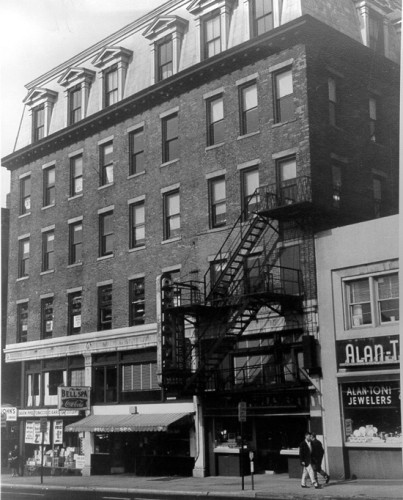
First Commercial Telephone Exchange – Today in History: January 28
…of New Haven changed its name to the Southern New England Telephone Company. Contributed by Laura Smith, Curator for Business, Railroad, and Labor Collections at the University of Connecticut Libraries….
Read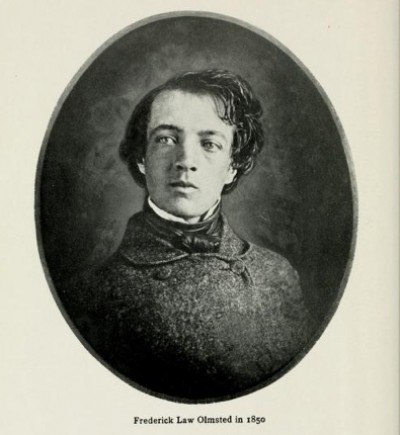
Frederick Law Olmsted Born – Today in History: April 26
…especially in regard to free labor. In 1858, New York City’s new Central Park Commission appointed Olmsted the architect-in-chief and superintendent, and he oversaw the new park’s design and construction,…
Read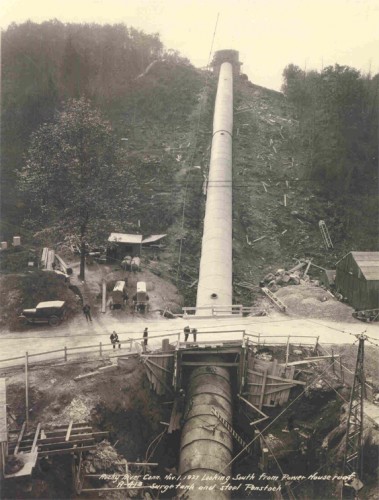
Creating Candlewood Lake – Today in History: July 15
…the 1,400 laborers on the project were housed in four temporary work camps built at the site. In all, there were 35 families who owned property in the area to…
Read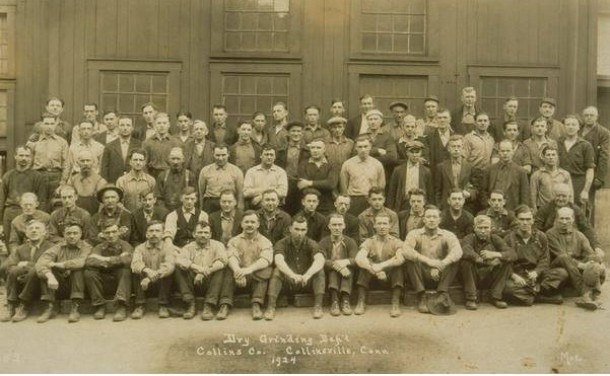
World-renowned Maker of Axes: The Collins Company of Canton
…high-quality axes, new orders flooded in. Soon, the company hired workers from Connecticut and surrounding states to meet the demand. As the number of laborers grew, the company built housing…
Read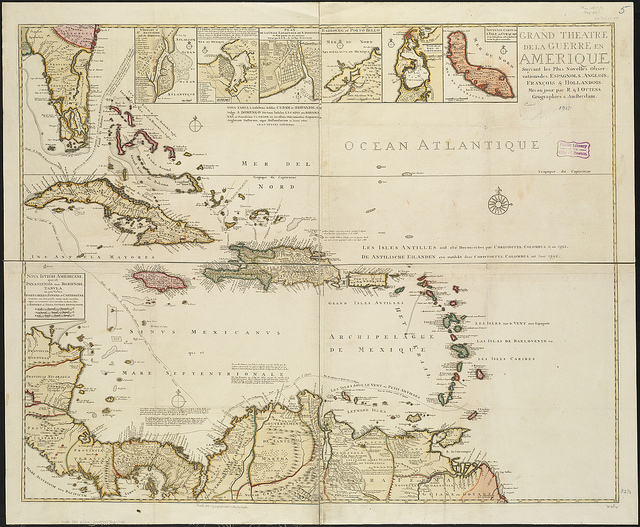
Connecticut and the West Indies: Sugar Spurs Trans-Atlantic Trade
…work to sawmills, shipbuilders, sail and rope makers, shipyard workers, and farmers. The latter often supplied not only the cargoes but also the ship timbers and labor, such as hauling….
Read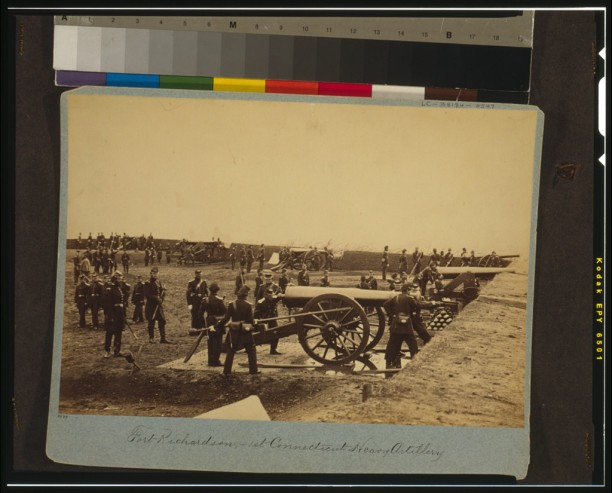
The Complicated Realities of Connecticut and the Civil War
Last Updated: September 19, 2024 By Matthew Warshauer Connecticut has a remarkable Civil War history. Although it is a small state, it was in many ways instrumental to the Union’s…
Read
The League of American Wheelmen and Hartford’s Albert Pope Champion the Good Roads Movement
…which were often poorly maintained by the compulsory labor of town residents. As a member of the league’s national executive committee, Albert Pope became a relentless advocate for good roads,…
Read
Rex Brasher Dies – Today in History: February 29
…in his teens. Inspired by his father at an even earlier age, Brasher had set the goal of painting all the species and sub-species identified in the American Ornithologists’ Union’s…
Read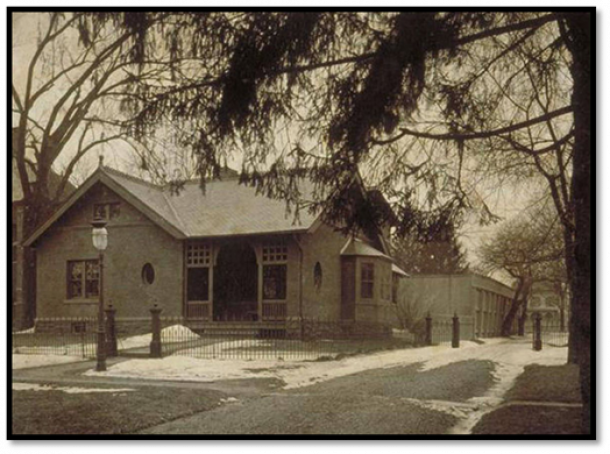
Hartford Retreat for the Insane Advanced Improved Standards of Care
…poor and disabled to labor at whatever tasks they could perform. Such approaches made conspicuous the mentally ill, who could not easily fit into this early American system of family…
Read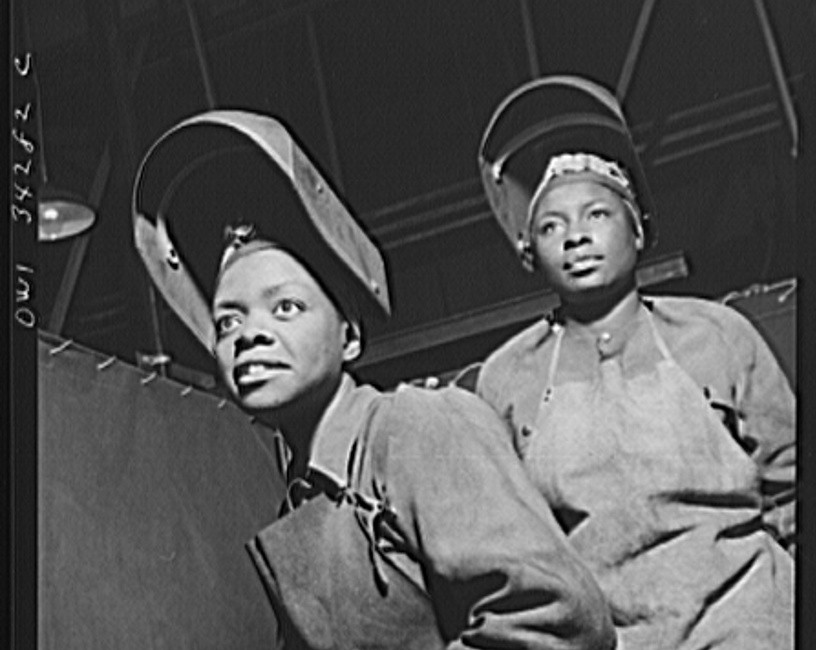
Women
From their unsung labors to society-changing accomplishments, Connecticut’s women have contributed to diversified fields of endeavor. During colonial times, they kept farms, homes, and businesses running—despite restrictions that then, and…
Read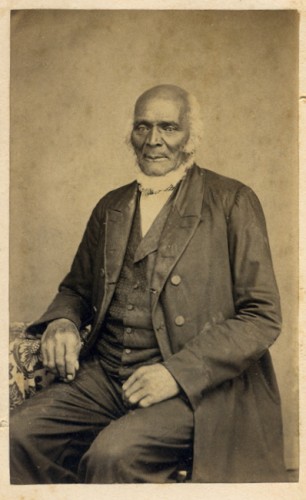
James Mars’ Words Illuminate the Cruelty of Slavery in New England
…were to labor faithfully for their mother’s owner who could sell them to work for another master or mistress until they reached the requisite age to be freed. James thus…
Read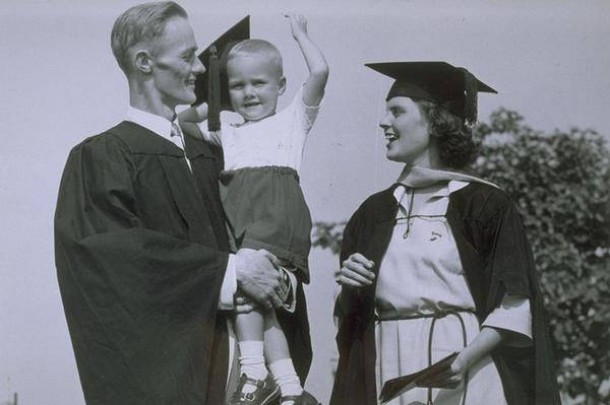
UConn and the Evolution of a Public University
…late 19th century when team sports supplanted manual labor (such as the breaking of rocks) to give the students some physical activity. In 1923, the Connecticut Agricultural College joined other…
Read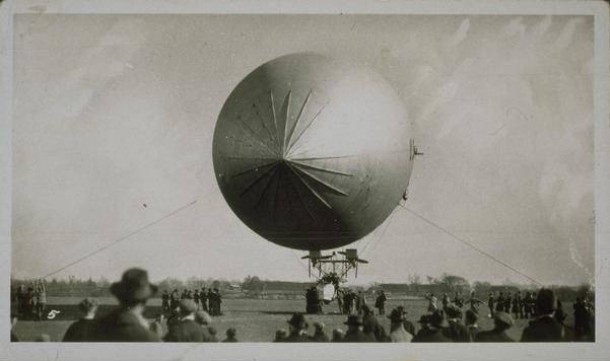
Airborne Pioneers: Connecticut Takes Flight
…nuclear power in commercial aircraft at its Connecticut Aircraft Nuclear Engine Laboratory in Middletown. Murphy Terminal, Bradley Airport, Windsor Locks – Hartford History Center, Hartford Public Library Post-War Commercial Travel…
Read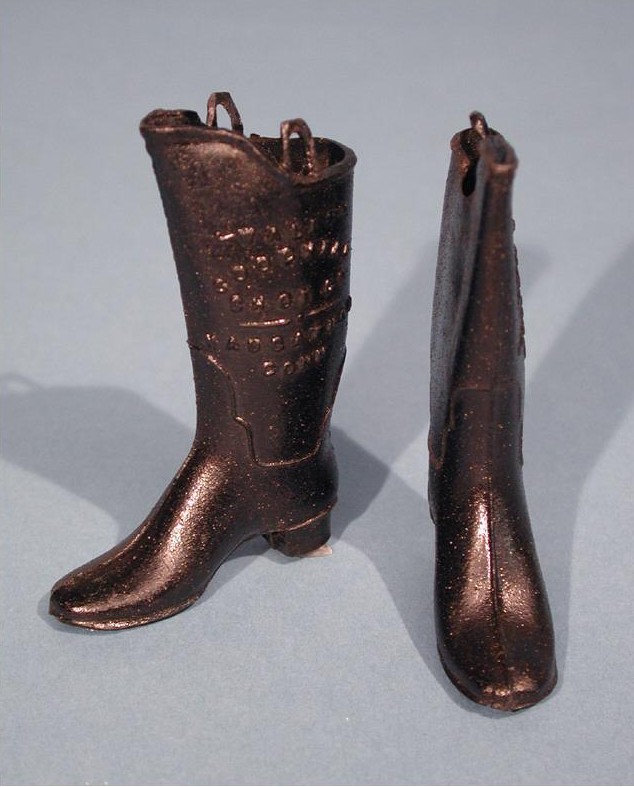
Charles Goodyear and the Vulcanization of Rubber
…could find investors and places to conduct his experiments. Goodyear mixed chemicals into raw rubber in pots and pans in makeshift laboratories that he set up in his wife’s kitchen…
Read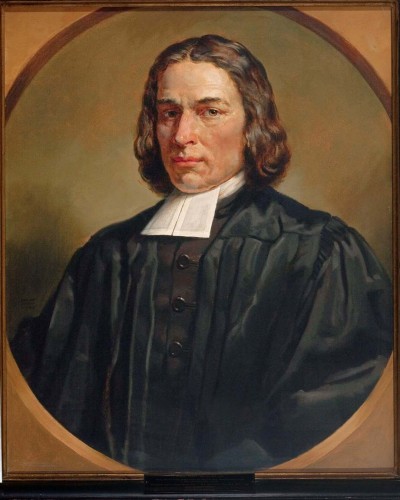
Jared Eliot Calls on Colonists to Change their Agricultural Practices
…red clover. Ditching and draining, Eliot’s first point, made sense but were difficult because ditches clogged easily, requiring more work in an already labor-intensive occupation. As to capturing manure for…
Read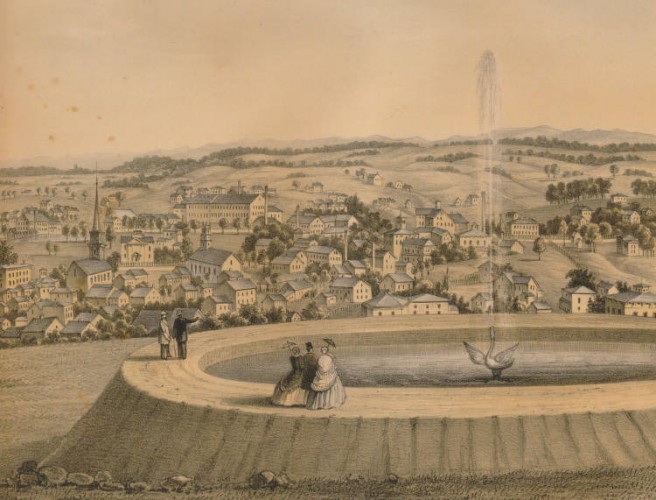
A Bird’s-eye View of New Britain
By Kate Steinway The industrial revolution transformed Connecticut’s landscape during the Victorian-era as factories multiplied across the state. As business thrived, the factories attracted immigrant laborers, stimulated investment in civic…
Read
The Life of Chauncey Jerome: An Insider’s Look at What Made Early Bristol Tick
…laborers would work in clock factories and related businesses. While this early form of mass-produced consumer goods created jobs for many, it spelled the end of an era for others….
Read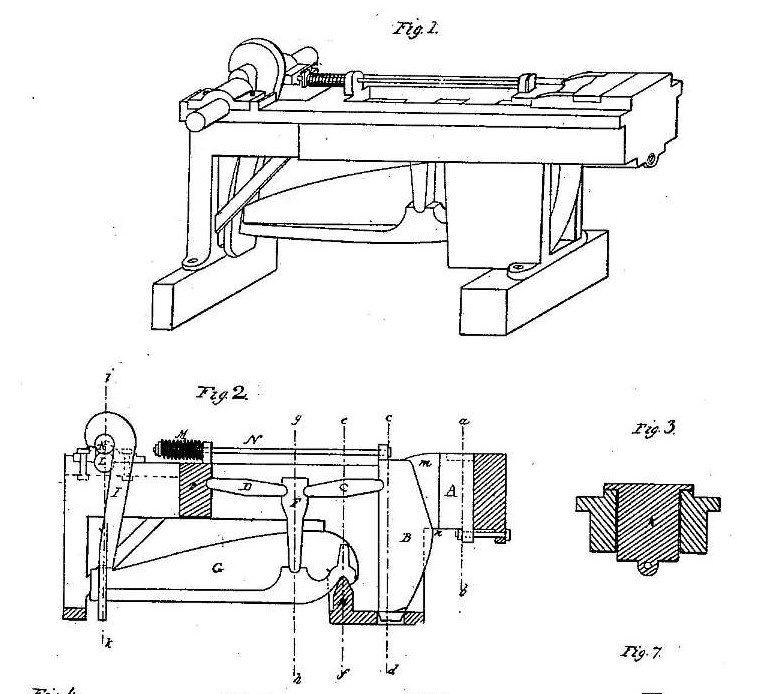
The Blake Rock Crusher – Today in History: June 15
…build roads with hand hammers. Blake decided to solve this costly and labor-intensive problem by mechanical means when he designed a steam-powered machine that could crush the stone into the…
Read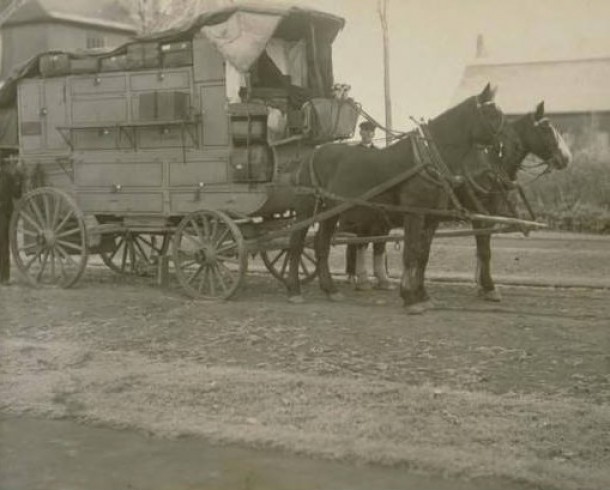
New Britain’s Yankee Peddlers Boost 18th-century Economy
…the brothers took to tin making—a trade they had learned in England. Tin making required little capital or labor, and Americans coveted the finished products. The Pattersons traveled to Boston,…
Read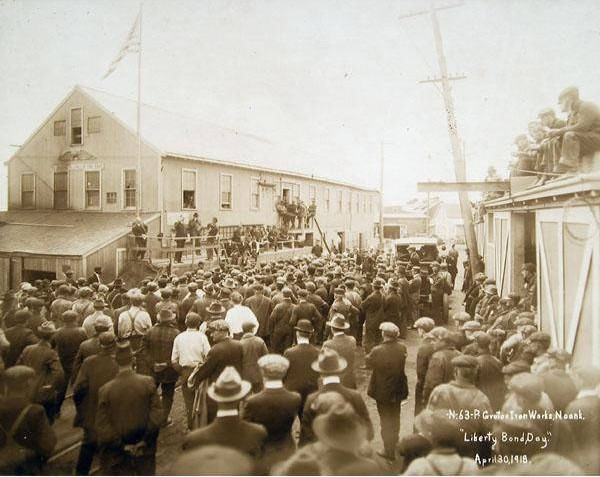
World War I
…brass to Bridgeport’s Remington Arms, which produced 50 percent of the US Army’s small arms cartridges, the industrial ramp up—and curtailed immigration from Europe—produced labor shortages. African Americans migrating from…
Read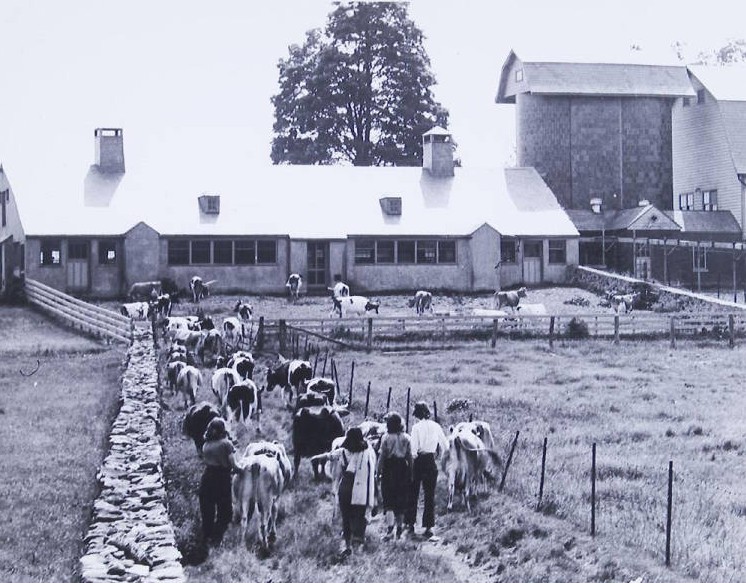
World War II
…other Connecticut companies had fulfilled over $8 billion in war contracts. Prosperity, however, came at a cost. The influx of laborers, for example, overtaxed housing, schools, and hospitals, and the…
Read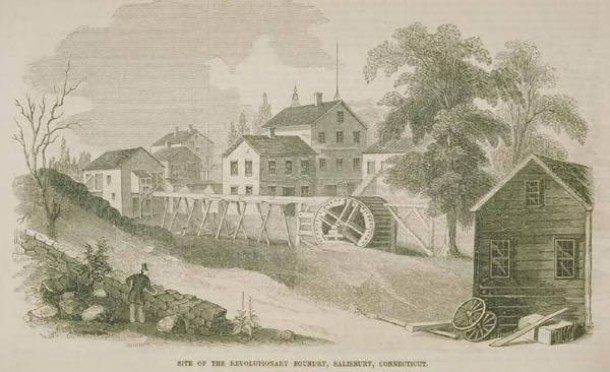
Salisbury Iron Forged Early Industry
…blast. The stacks’ construction required the expertise and supervision of an experienced iron master and a large number of workers. Since labor was cheap and manpower readily available, construction of…
Read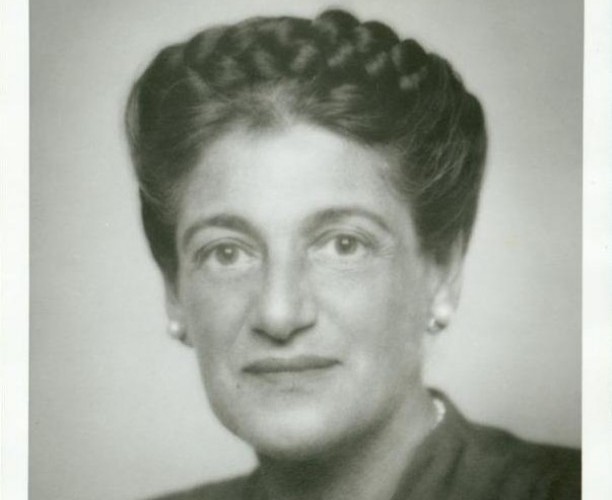
Beatrice Fox Auerbach
…privately-held store in the country. She also instituted important labor reforms, such as a 40-hour, 5-day work week; retirement plans; and advancement opportunities for African Americans. Numerous philanthropic and civic…
Read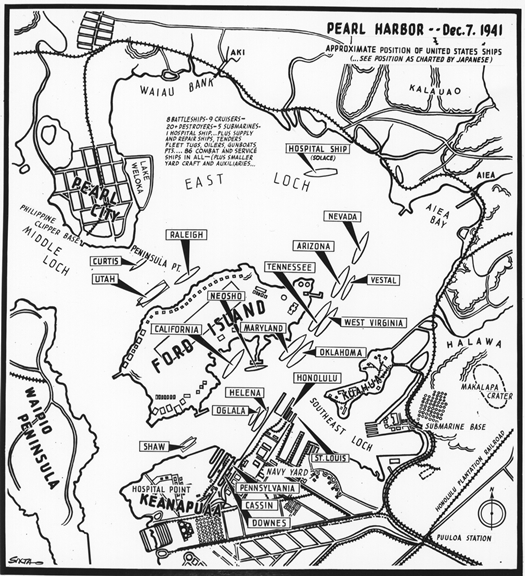
Reporting News of Pearl Harbor – Today in History: December 7
…saying ‘Yors [sic] for Victory,’ I leave to return to this microphone tomorrow at 2:30 P.M. Until then, au revoir.” Contributed by Laura Smith, Curator for Business, Railroad, and Labor…
Read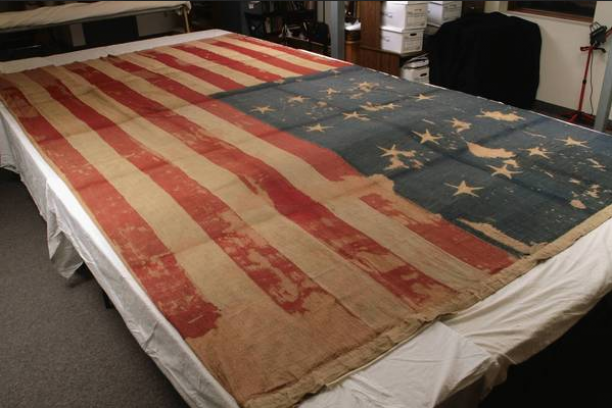
The Stonington Battle Flag
…Ocean Bank Building on Cannon Square, where the two 18-pound cannons used in Stonington’s defense proudly pointed toward the sea. In 2003, the University of Rhode Island Textile Conservation Laboratory…
Read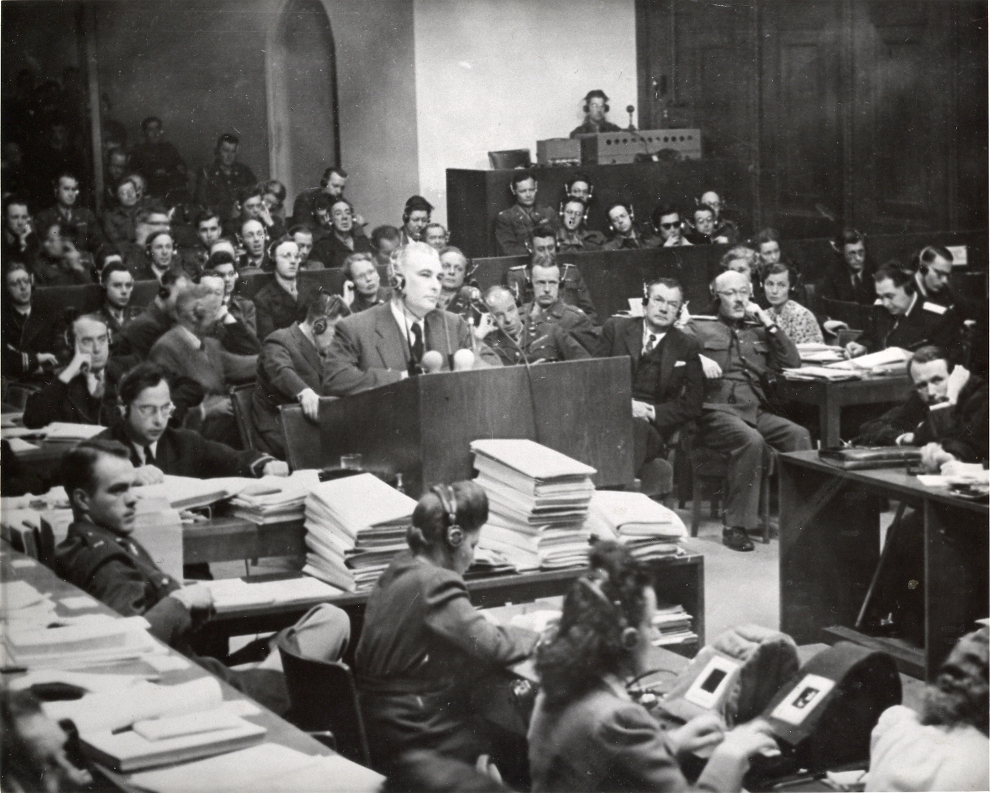
Connecticut Lawyer Prosecutes Nazi War Criminals at Nuremberg
…Justice and Human Rights is awarded to an individual or group. Contributed by Laura Smith, Curator for Business, Railroad, and Labor Collections, Archives & Special Collections, University of Connecticut Libraries….
Read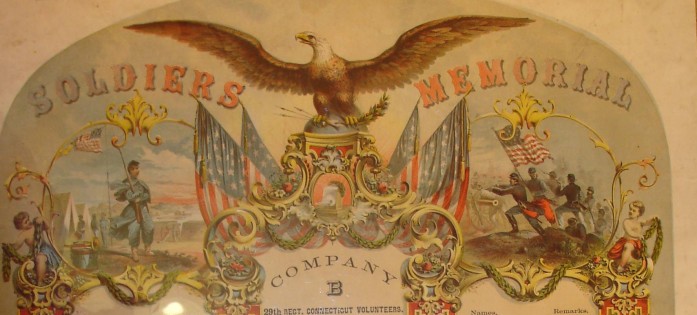
Connecticut’s Black Civil War Regiment
…volunteers to make up the 29th Regiment Colored Volunteers. Despite the fact that many black laborers earned wages that were higher than army pay and enlistment bounties, the response was…
Read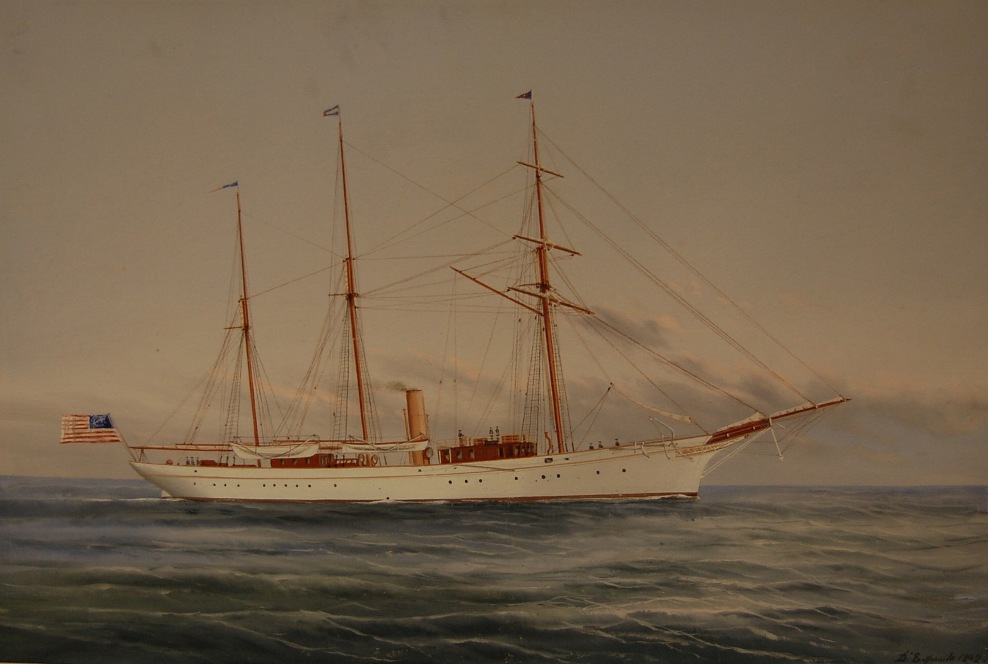
The Slaters Go Round the World
…rebuilding the city’s core into an elegant 19th-century city on an archipelago of islands. Though the standard of living in Bombay was high, labor for the cotton factories came from…
Read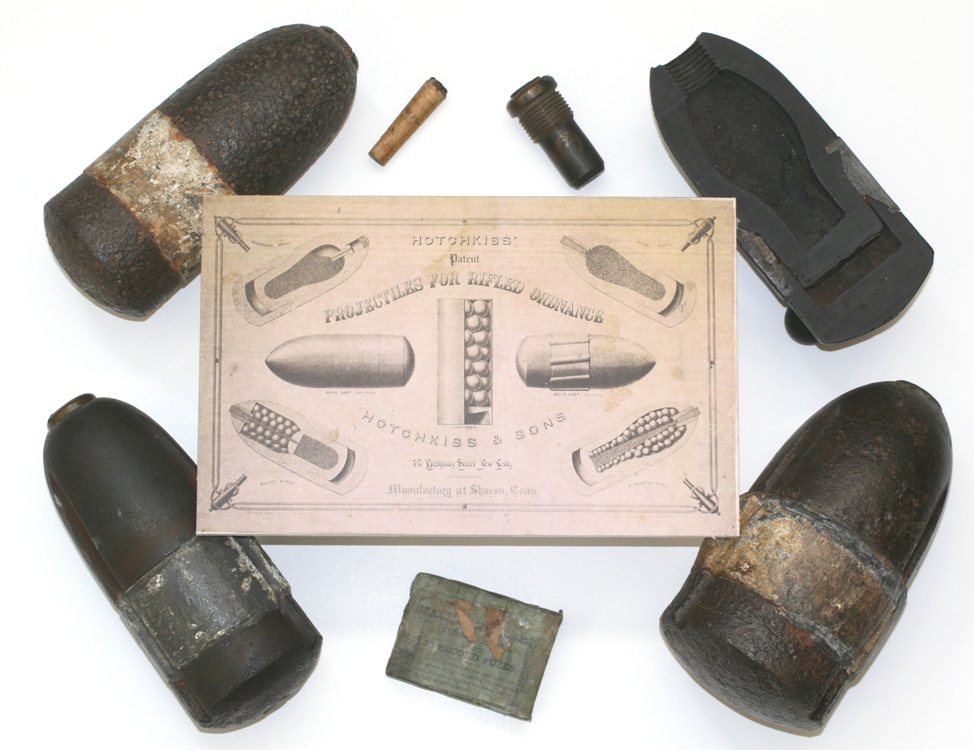
Connecticut Arms the Union
…were ready to respond. By the mid-19th century, Connecticut manufacturers had mastered the complexities of innovation, capital, labor, and raw materials for machine-based precision mass production of intricate metal parts…
Read
Breaking the Myth of the Unmanaged Landscape
…as soldiers, whalers, day laborers, or domestics. Shortly after the American Revolution, and for several years afterward, portions of these communities migrated to New York and, later, Wisconsin as part…
Read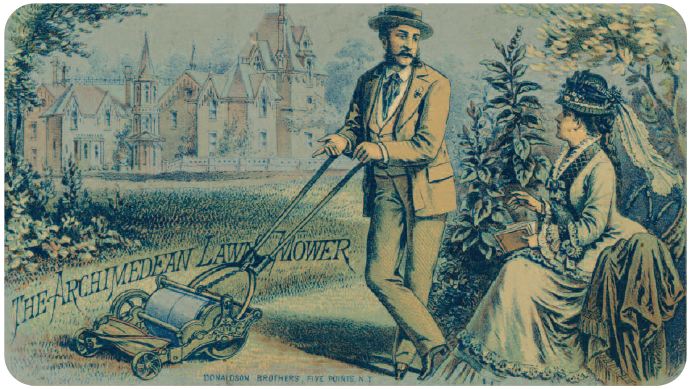
Selling Connecticut Products Abroad
…1840s, Hartford shipping merchants began to include Collins axes in cargoes bound for plantations in the West Indies that were worked with enslaved labor. Collins soon developed machetes and specialty…
Read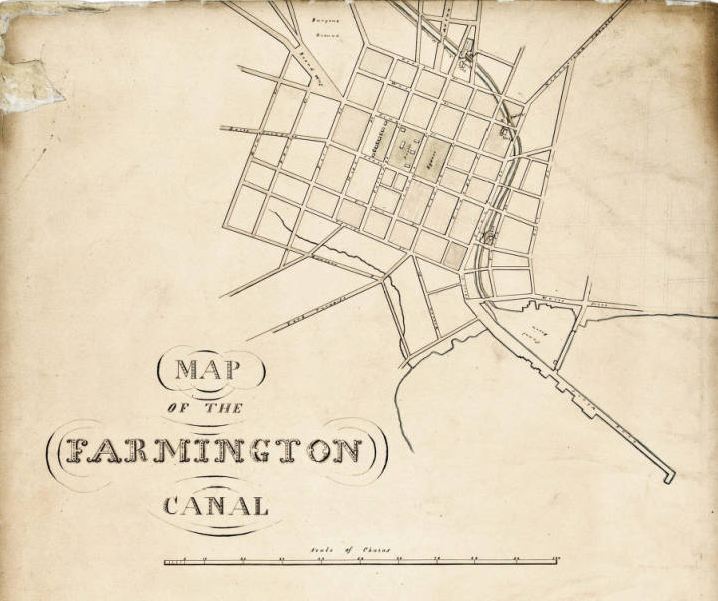
Farmington Canal Designed to Give Connecticut Commerce a Competitive Edge
…the country’s success as an economic and industrial powerhouse of the late 1800s. Contributed by Laura Smith, Curator for Business, Railroad, and Labor Collections, Archives & Special Collections at the…
Read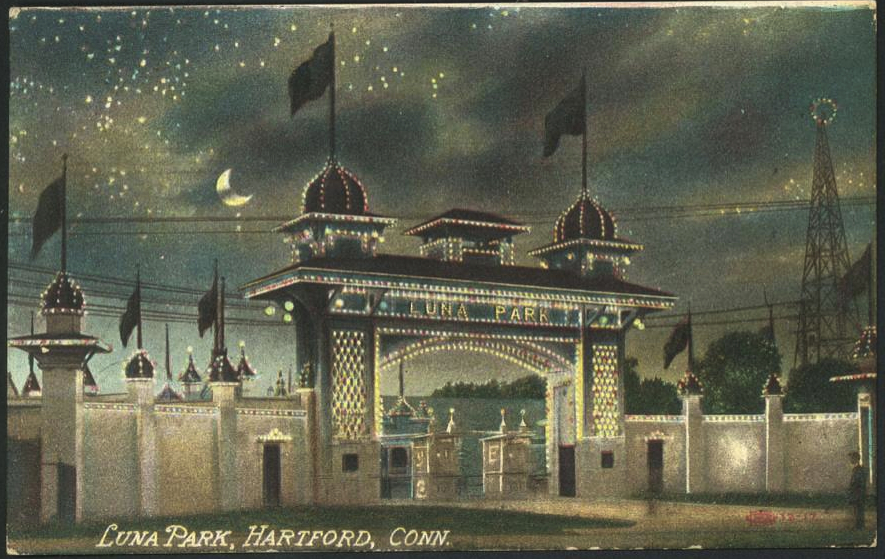
Luna Park: A 20th-century Story of Amusement and Morality
…Company, which owned Luna Park, faced considerable opposition to its policy of operating on Sundays. At the time, Connecticut’s Sunday law prohibited “any secular business or labor, except works of…
Read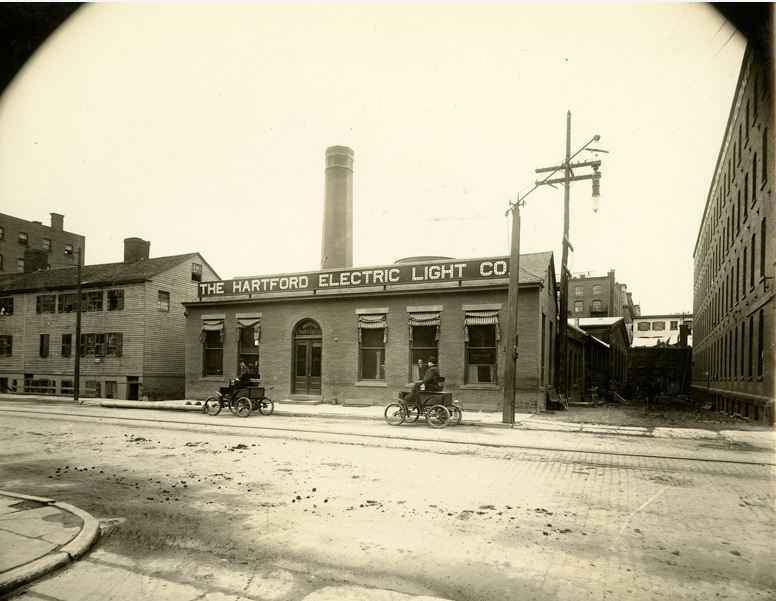
Let There Be Light: An Early History of the Hartford Electric Light Company
…River Power Company in 1890 to supply HELCO electricity. The company’s laboratory became the Oil City Generating Station, constructed on the Farmington River in the Rainbow section of Windsor Locks….
Read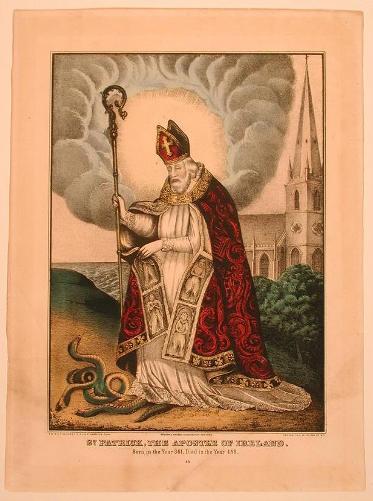
The Wearing of the Green: 19th-century Prints of Irish Subjects by Hartford’s Kellogg Brothers
…hardship. Most of them were Roman Catholics and many of them found work as laborers. While anti-Irish sentiment was widespread, Hartford’s Kellogg brothers, publishers of thousands of brightly colored popular…
Read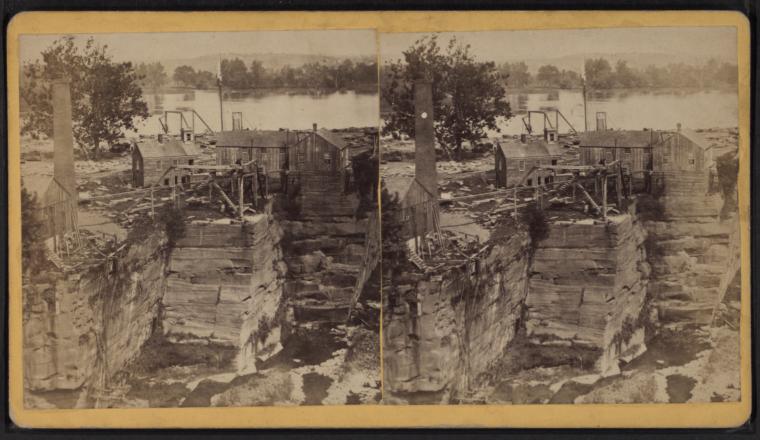
Portland Puts Its Stamp on an Architectural Era
…town as numerous shipbuilding and transportation companies, mills, and blacksmith shops arose in support of the industry. In addition, the labor required for quarrying the rock brought in immigrants from…
Read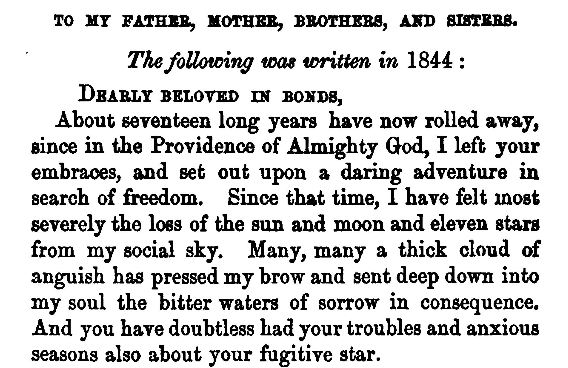
Reverend James Pennington: A Voice for Freedom
…proudly wrote the foreword. He used her writings as proof that African Americans were capable of intellectual pursuits, not simply the drudgery of slave labor. The minister suggested that African…
Read
The “Fancy Chair” Craze of the 1800s: Lambert Hitchcock and the Story of the Hitchcock Chair
…Gift of The Hitchcock Chair Co., Ltd Making chairs and other wood furniture had always been a laborious job, as each part was handmade. Hitchcock made the process faster and…
Read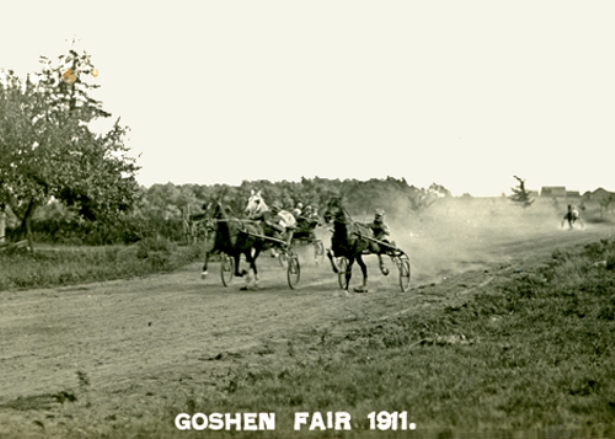
Goshen Fairs Well with Agricultural Enthusiasts
…education in the state. The first recognized fair in Goshen commenced on September 5, 1910. Its roots trace back to an annual Labor Day horse race that took place along…
Read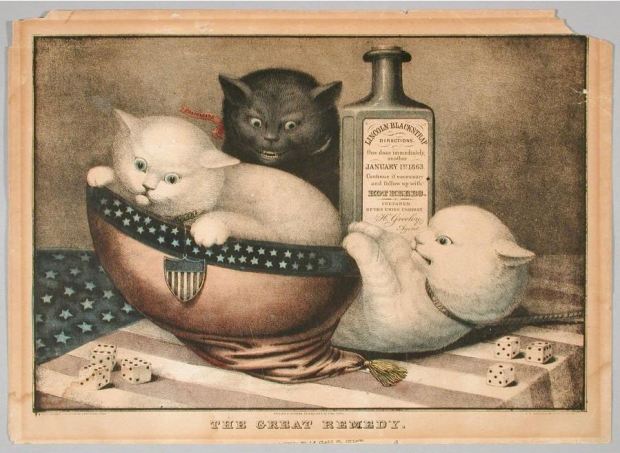
The Great Remedy: Picturing the Emancipation Proclamation
…in a slave cabin by torchlight. The delay in publication may have been due to the fact that engraving was a much more labor-intensive process than lithography, so that the…
Read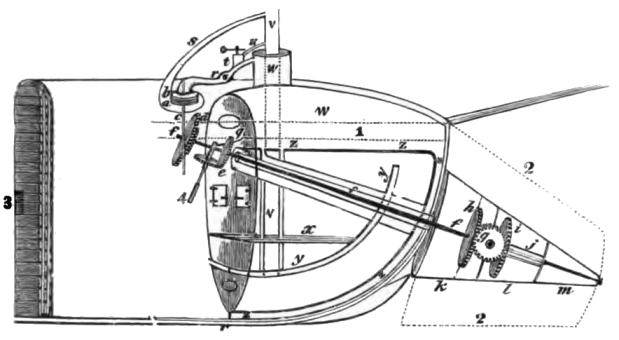
Benjamin Dutton Beecher had a Penchant for Invention
…order to separate the valuable grain from the rest of the plant. The labor-intensive process then required the grain to be tossed into the air from a winnowing pan where…
Read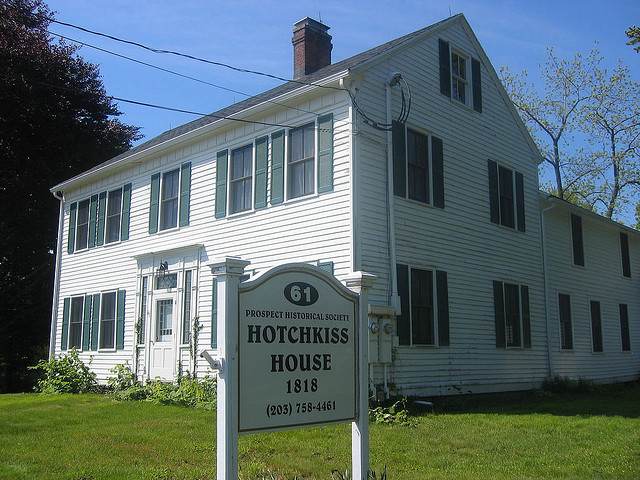
Prospect’s David Miles Hotchkiss and the Free Soil Party
…mantra of “Free Soil, Free Speech, Free Labor, and Free Men,” attracted western farm and mill workers who did not want African Americans competing against them for jobs. In 1854,…
Read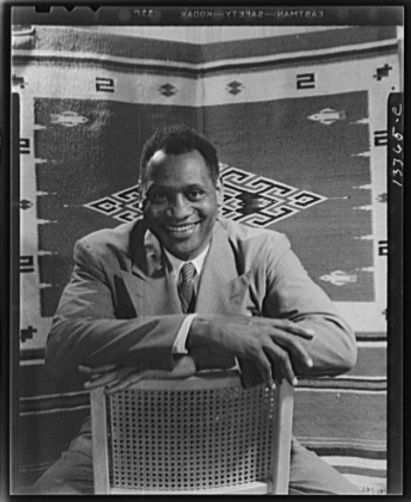
“Negroes Who Stand Up and Fight Back” – Paul Robeson in Hartford
…audience called him back for six encores. Steve Thornton has been a labor union organizer for 35 years and writes on the history of working people. This article originally appeared…
Read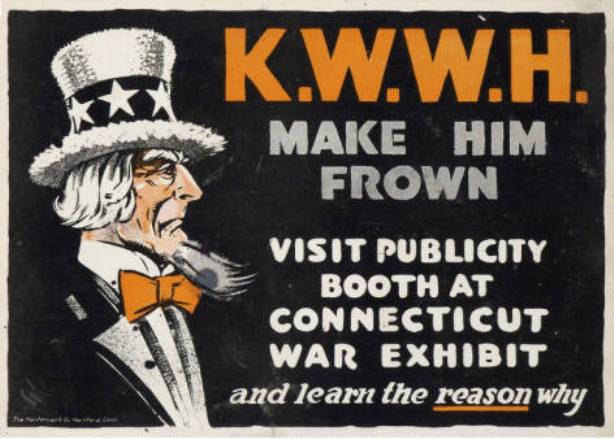
Winning the Great War without Some Books
…against saboteurs. After the Declaration of War, Holcomb created the State Council of Defense, one of 48, to mobilize citizens, industries, labor, and organizations to win the war. “Truth” is…
Read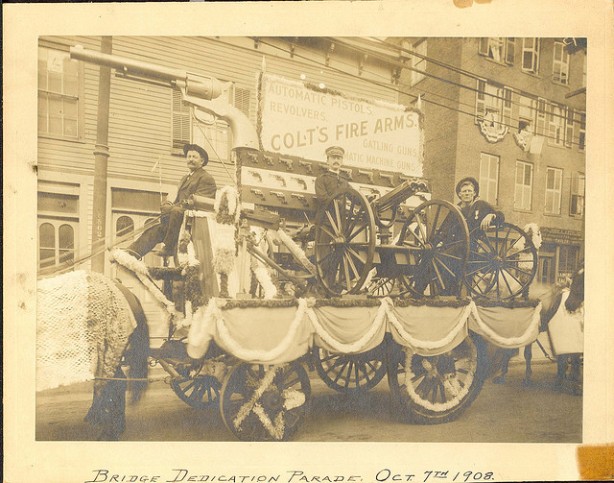
Hartford’s Industrial Day – Today in History: October 7
…The Hartford Courant described it as “the day of the workingmen, of the men who by their daily labor earn the money necessary to the support of their families, marching…
Read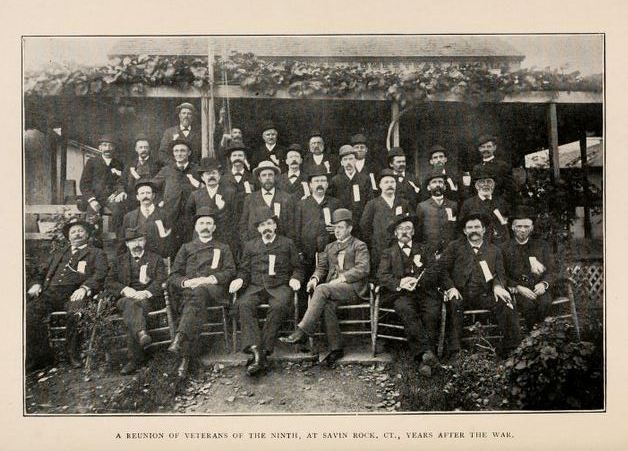
Fighting Sons of Erin: Connecticut’s Irish Regiment in the Civil War
…in the War of the Rebellion, 1861-65 by Thomas Hamilton Murray Irish Find Opportunity but Discrimination, Too The Irish found work at the state’s labor-hungry quarries and railroad construction sites….
Read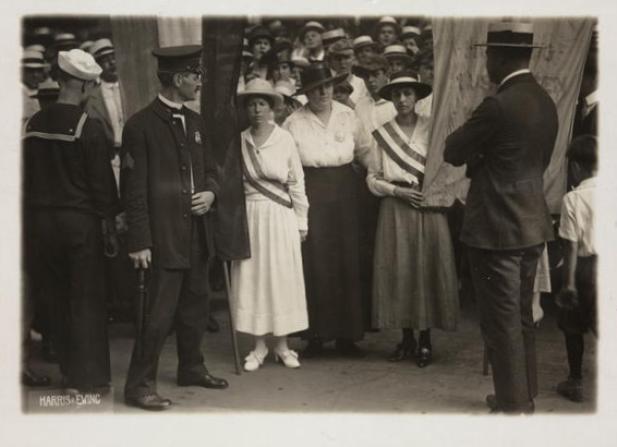
Women of the Prison Brigade
…in 1920. Edna Purtell died in 1985 at the age of 86. Steve Thornton has been a labor union organizer for 35 years and writes on the history of working…
Read
Women Win the Right to Vote
…women argued that equal participation in government was a natural right, and they showed interest in a wide range of issues including child labor, prostitution, political corruption, and fair work…
Read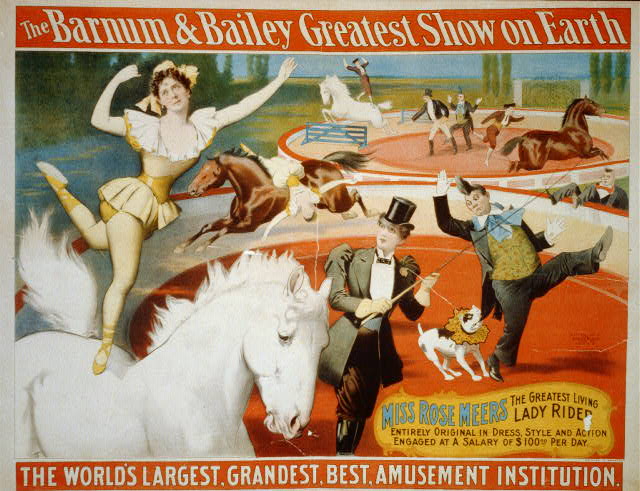
P. T. Barnum: An Entertaining Life
…acts – Connecticut Historical Society Phineas was described as a strong student who excelled in mathematics and despised physical labor. He worked for his father on their farm and later…
Read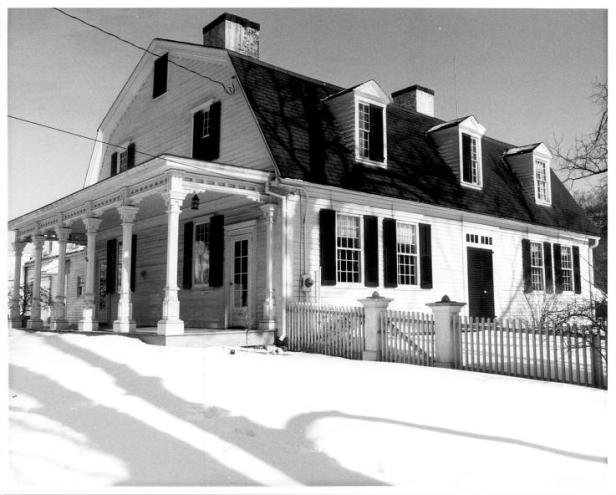
The Darlings Make Preservation a Family Affair
…100 acres of farmland on which Darling and his family labored. Darling never proved entirely successful in business or politics and died insolvent in 1789. While his son and great-grandson…
Read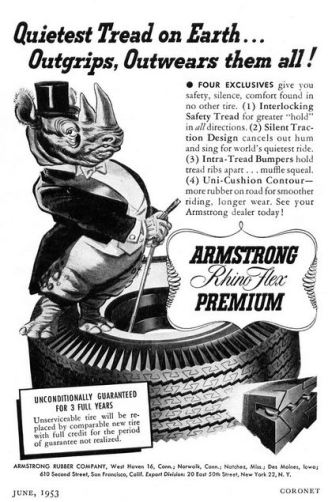
Armstrong Finds a Niche in the Tire Market
…weeks at a time in order to avoid overproduction, and in 1979 the company laid off 120 of its West Haven workers. The following year, high fuel, labor, and electricity…
Read
Boone Guyton Tested the Limits of World-Famous Aircraft
…Chance Vought from 1940 until 1951. After the division transitioned operations to Dallas, Texas, Guyton settled in Woodbridge and took a job with Norden Laboratories—a firm producing bomb sights and…
Read
Hidden Nearby: The Bantam Lake Ice House
…chips/shards – Peter Vermilyea The earliest ice harvests resembled early labor systems used for harvesting crops, with neighbors and friends pitching in and receiving compensation from a share of the…
Read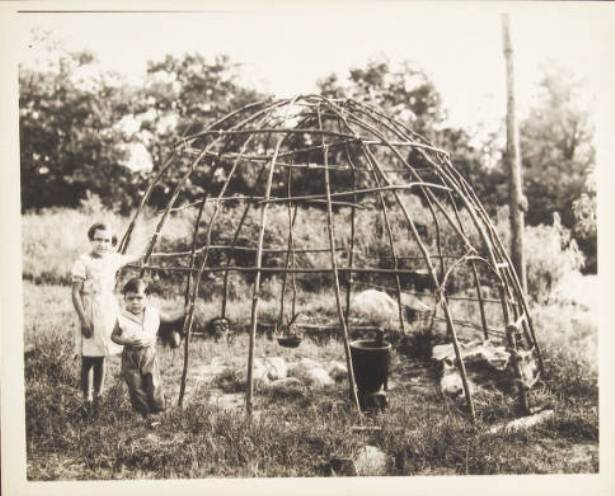
Living Rituals: Mohegan Wigwam Festival
…Wigwam structure as follows: The building of the brush arbor required quite a lot of hours of hard labor. Eight or ten men cut the poles and this brush arbor…
Read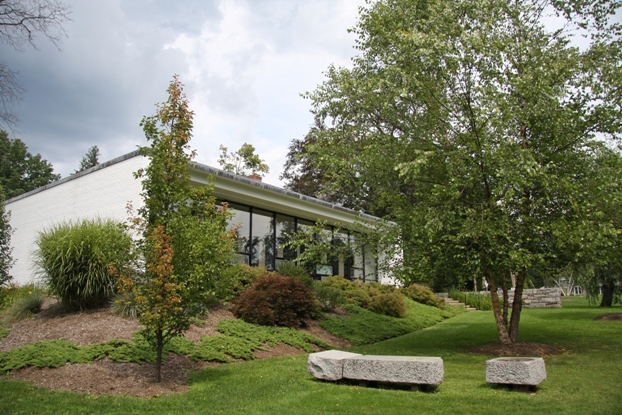
Modernism in Connecticut through Photographs
…colleagues from Harvard–Philip Johnson, Eliot Noyes, John Johansen, and Landis Gores–who were collectively nicknamed the Harvard Five. As a rural suburb outside New York, New Canaan became a laboratory for…
Read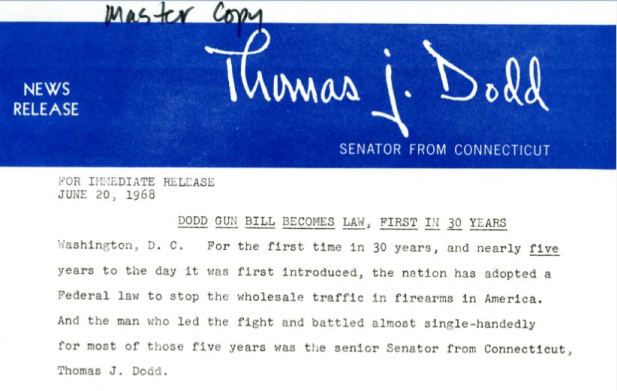
Thomas J. Dodd and the Gun Control Act of 1968
…to play a part in this great moment in our time.” Contributed by Laura Smith, Curator for Business, Railroad, and Labor Collections, Archives & Special Collections, University of Connecticut Libraries….
Read
The Story of Connecticut’s Largest State Forest
…Recreation and Natural Heritage Trust Fund—a state effort to acquire lands necessary for expanding Connecticut’s park system. Laborers from New Deal programs such as the Works Progress Administration and the…
Read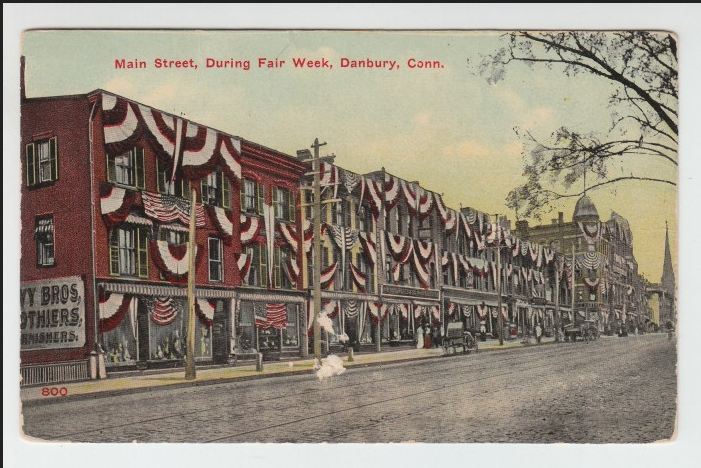
The Great Danbury State Fair & Early 20th-Century Outdoor Advertising
…gave farmers an opportunity to discuss farming methods and showcase the fruits of their labor. Hat manufacturers Rundle & White organized The Danbury Farmers & Manufacturers Society in 1869 and…
Read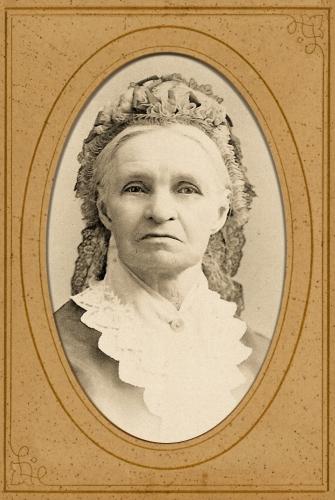
A Voice for Veterans: A Civil War era ‘Whistle-Blower’ – Who Knew?
…it all. With many wishes for your success in your noble work, I am respected sir, your co-laborer in the Hospital. Almira Ambler Annapolis, July 4, 1864 Diane Hassan is…
Read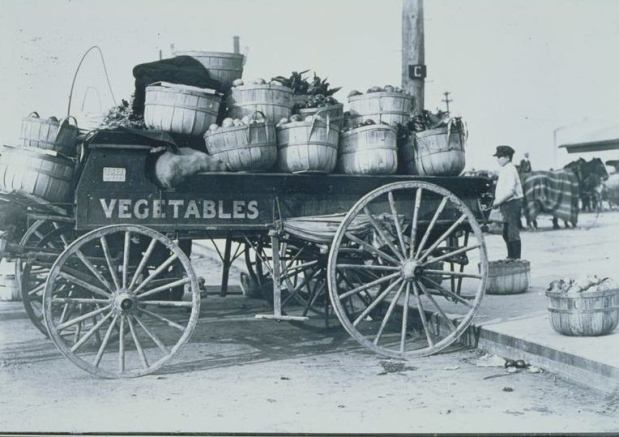
Hartford’s “Little Italy”
…the Italian men became construction laborers building factories, housing, and railroads. However, Italians were the poorest paid workers in Hartford, earning substantially less than their Irish and German immigrant counterparts….
Read
Connecticut and American Impressionism
…urban life or modern marvels. At the turn of the 20th century, however, American cities and industries were expanding at dizzying rates, and a host of immigration, labor, and other…
Read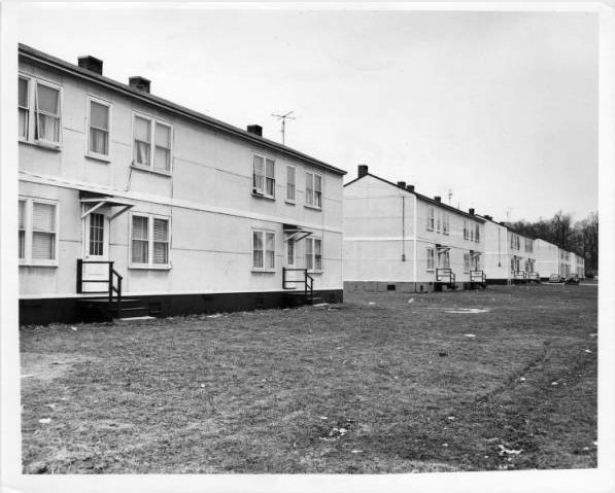
The Debate Over Who Could Occupy World War II Public Housing in West Hartford
…authorized it to build public housing units with the goal of providing adequate living quarters for war workers. An influx of war laborers, both white and African American, and their…
Read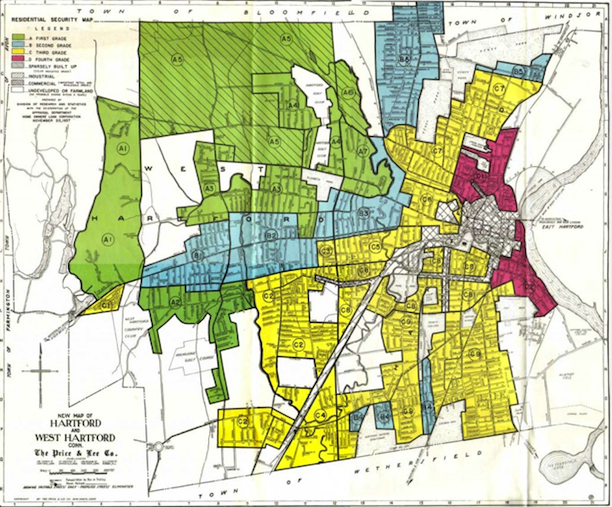
The Effects of “Redlining” on the Hartford Metropolitan Region
…as a “slum area now mainly occupied by Negros.” The appraisal also identifies the residents of this area as predominately “laborers or domestics” and estimates the average annual family income…
Read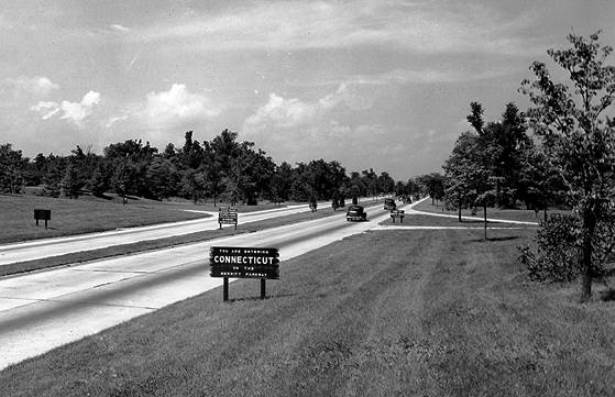
Merritt Parkway 1939
…the highway was formally opened on Labor Day, 1940, as Connecticut’s first parkway. Today the road is named as a State Scenic Road, and is on the National Register of…
Read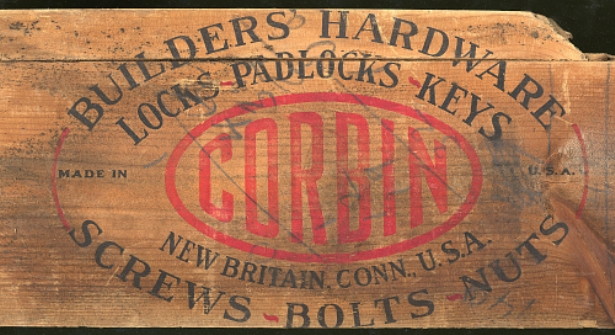
The Corbin Cabinet Lock Company and Patent Law: A Lesson in Novelty from a CT Perspective
…is a cavity in the door or drawer in which the lock fits. Prior to the late 19th century, making such a cavity for the lock was labor intensive and…
Read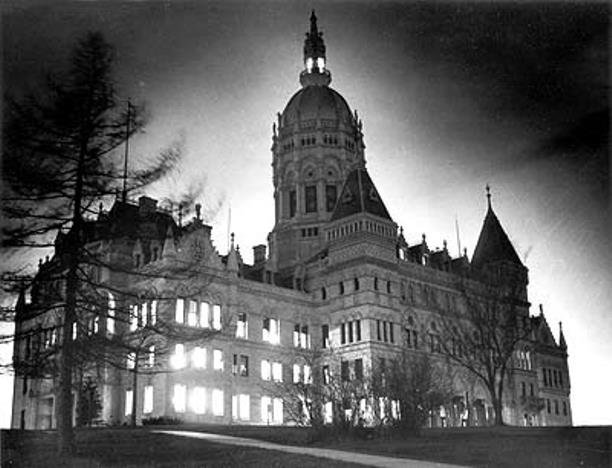
Imagining Connecticut
…African Americans and women rest on the 19th century labors of individuals like James Mars and Prudence Crandall and the courage and determination of decades of suffragists. Old traditions have…
Read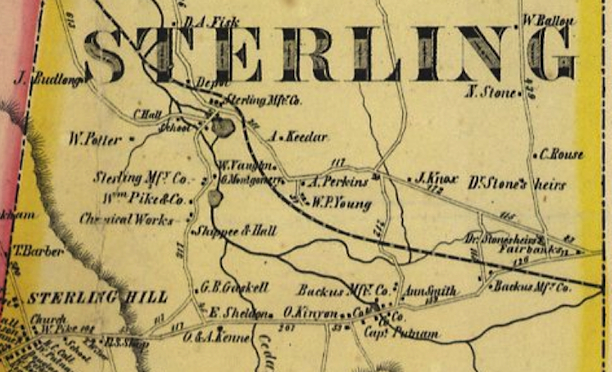
The Pike Family Lived a Life of Dyeing
…for labor had on local communities. What often gets lost among the tales of mass production are the subtle methods that distinguished one manufacturer’s textiles from the next. Identifying a…
Read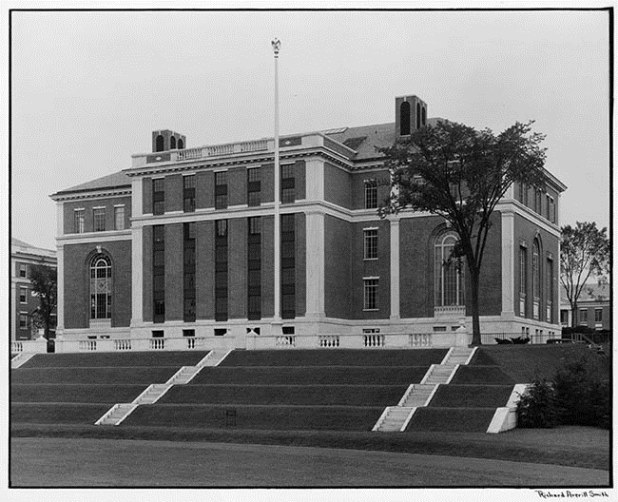
Olin Library and The Debate About Open Space at Wesleyan University
…Memorial Library taken from the Hall Laboratory – Wesleyan University Library, Special Collections & Archives Once built, Olin, along with the buildings on either side of it, created precisely the…
Read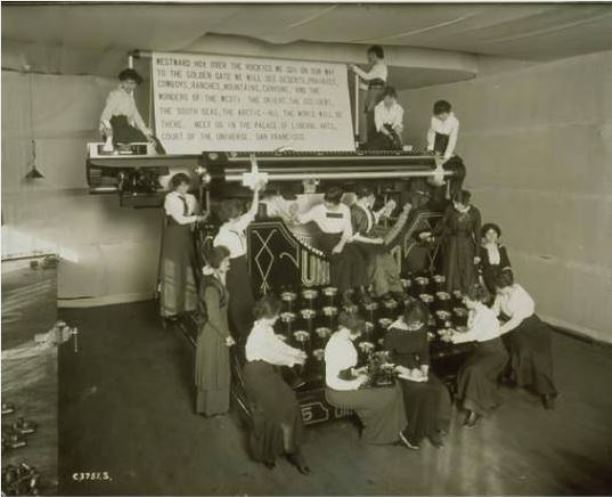
A Different “Type” of Connecticut Industry
…was soon producing up to twelve thousand typewriters per year. In 1927 they merged with Rand Kardex to form the Remington Noiseless Typewriter Corporation—Middletown’s largest employer—but labor strife in 1936…
Read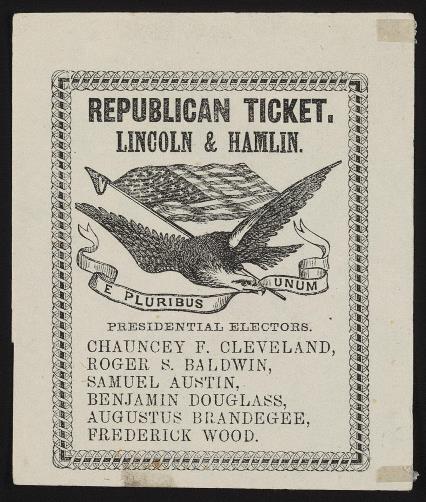
A Successful Lawyer and Politician Who Never Went to College
…came as Connecticut’s 14th governor, when, among other accomplishments, Cleveland passed legislation placing limits on child labor. Born February 16, 1799, Chauncey Cleveland grew up in Hampton, Connecticut, and attended…
Read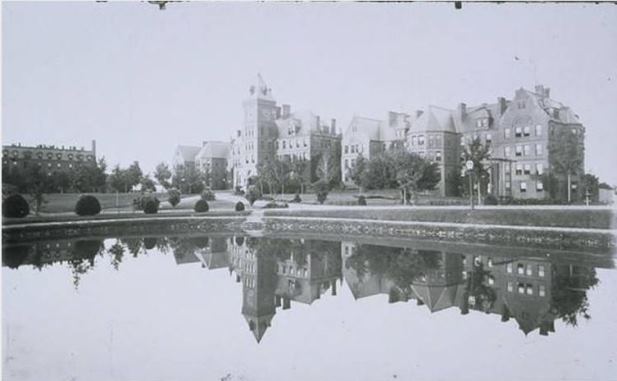
Designed to Heal: The Connecticut General Hospital for the Insane
…To promote healthy mental and physical stimulation, facilities included, a carpenter shop, baker shop, lecture hall, chapel, billiard rooms, and bowling alley. Patients might also labor on the hospital farm,…
Read
Samuel Colt…and Sewing Machines?
…pieces conformed to exact specifications. These specialized machine tools—machines to make other machines—eliminated the variability introduced by hand forging and filing. Thus, by employing the division of labor, specialized machine…
Read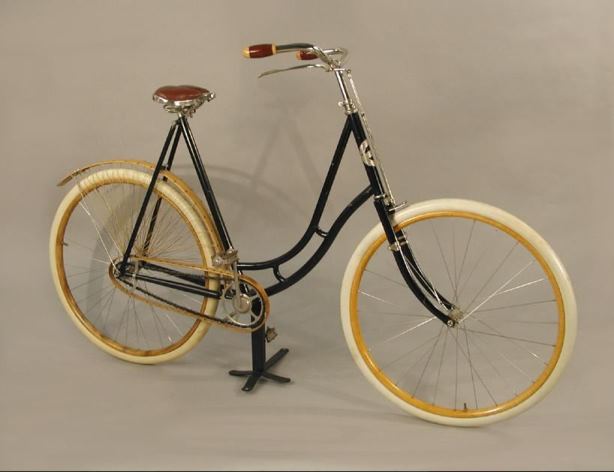
A Revolution On Two Wheels: Columbia Bicycles
…Hartford, utilizing the former Weed Sewing Machine plant on Capitol Avenue and the area’s plentiful supply of skilled labor. Bicycle made by the Pope Manufacturing Company, about 1881. 1994.204.3. Pope…
Read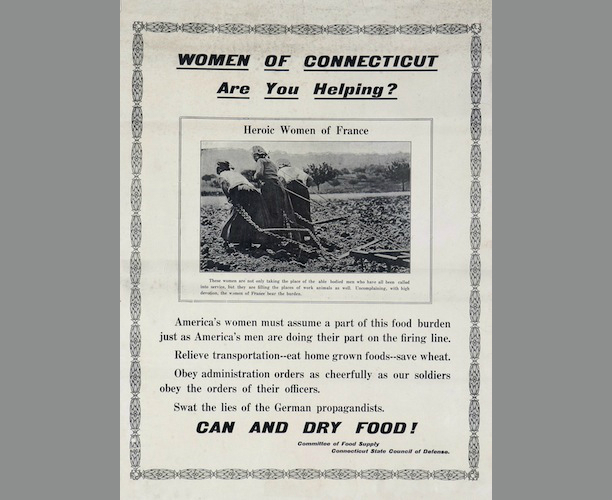
Food Needed to Win the War Comes from Washington
…island surrounded by German U-boats, as the Germans attempted to starve the British people into surrender. This reality, combined with crippling labor shortages in the fields, created a food crisis….
Read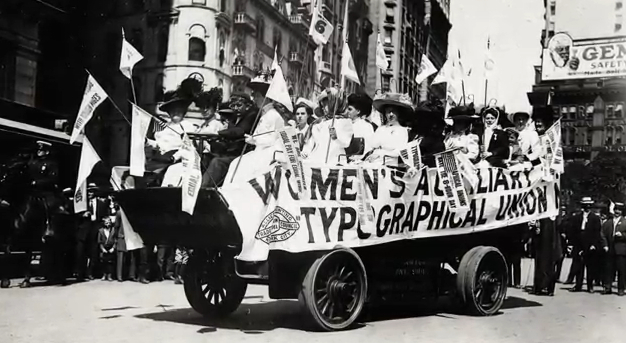
Video – Augusta Lewis Troup Tribute Film
YouTube – Connecticut Women’s Hall of Fame The Connecticut Women’s Hall of Fame pays tribute to Augusta Lewis Troup, a pioneering labor leader, journalist, educator, and suffragist. Devoting much of…
Read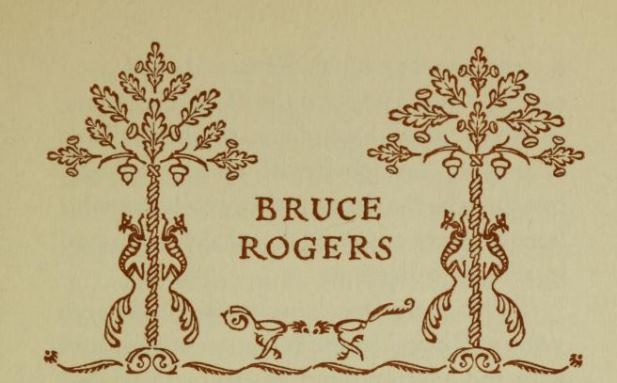
A Revolutionary Book Designer: Bruce Rogers of New Fairfield
…bibles of the Renaissance and the Arts and Crafts Movement. After years of painstaking labor, Rogers finished his bible in 1935 and experts readily hailed it as a masterpiece. Set…
Read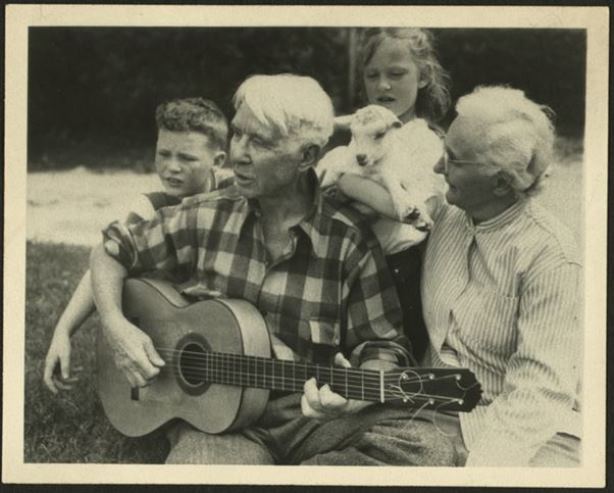
Carl Sandburg, Poet from the Grassroots, Reaches Connecticut Audiences
…Sandburg was a working-class boy who never forgot his roots. His father was a blacksmith for the Chicago railroad who took part in labor causes, including strikes. Sandburg recalled these…
Read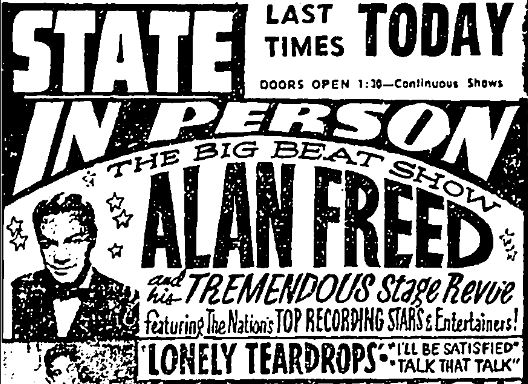
Rock and Roll vs. Racism
…Hall of Fame in Cleveland. Steve Thornton has been a labor union organizer for 35 years and writes on the history of working people. This article originally appeared on ShoeLeatherHistoryProject.com…
Read
Ellis Ruley: Art that Celebrated Life
…laborer until 1949, when he retired to paint fulltime. Turmoil and Racial Tension Turmoil defined the artist’s life. At least eight miscarriages and stillborn infants marred his marriage to Ida…
Read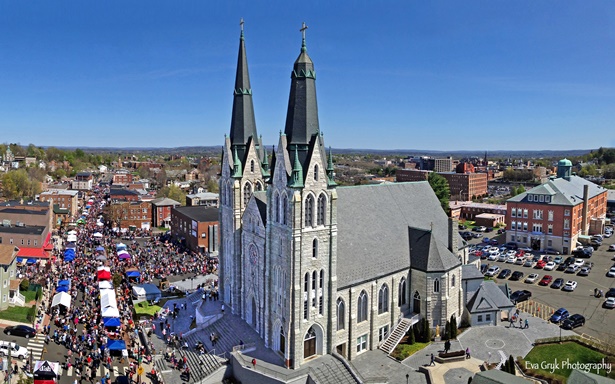
Witamy to Little Poland! – A Thriving Neighborhood in New Britain
…new wave of Polish immigrants began to arrive—this time not factory workers and laborers, but business people who settled on Broad Street and opened bakeries, grocery stores, restaurants, travel agencies,…
Read
Edwin Land Inventor of the Polaroid Born – Today in History: May 7
…partnered with Harvard physics instructor George Wheelwright III to form Land-Wheelwright Laboratories in 1932 and by 1934 they sold their first polarizing products. These products helped American Optical produce sunglasses…
Read
The Thimble Islands – Little Islands with a Big History
…today serve a number of other purposes. Yale University owns Horse Island and it is part of Yale’s Peabody Museum of Natural History’s Ecological Laboratory, and Bear Island has a…
Read
Phineas Pratt’s Machine for Making Combs – Today in History: April 12
…usually made of cow or ox horn and cut by hand—a slow, labor-intensive process. Pratt’s mechanized invention led to its application to ivory and the development of the comb and…
Read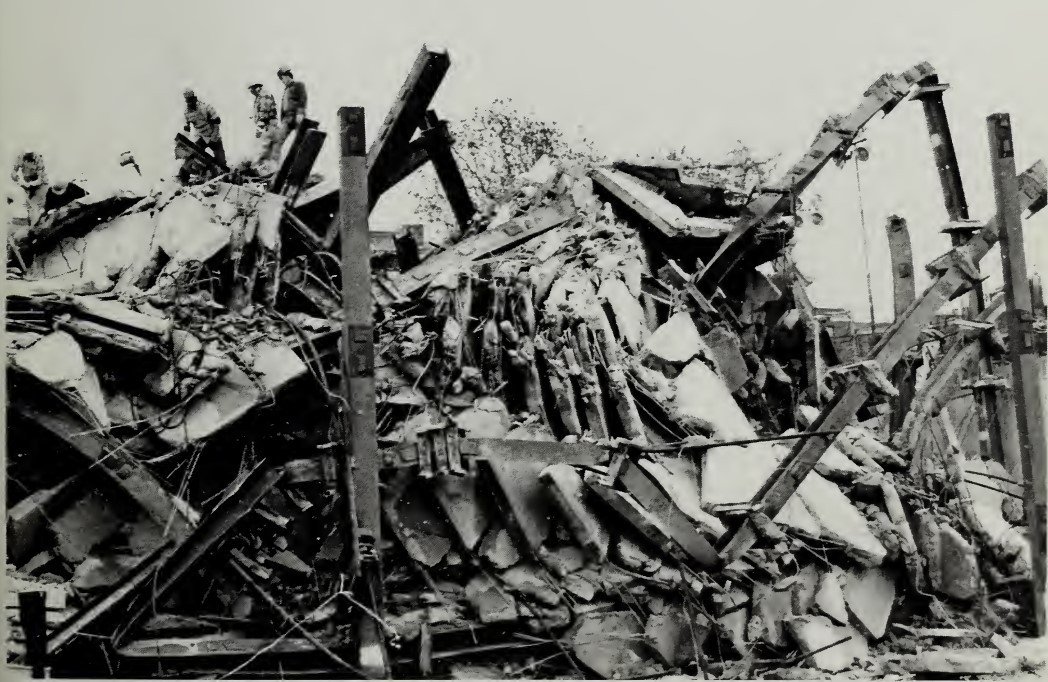
The Collapse of the L’Ambiance Plaza
…deserved the blame. After studying the various causes of the collapse, the United States Labor Department (which oversees OHSA) referred the case, and the operations of the Texstar company, to…
Read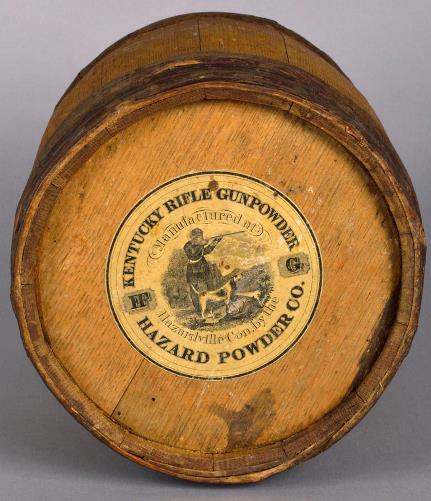
One-Legged Stools – Who Knew?
…numerous precautions to improve the safety of its operations. Workers labored in compartments sectioned off by large stone blast walls in order to limit the damage from any explosions. In…
Read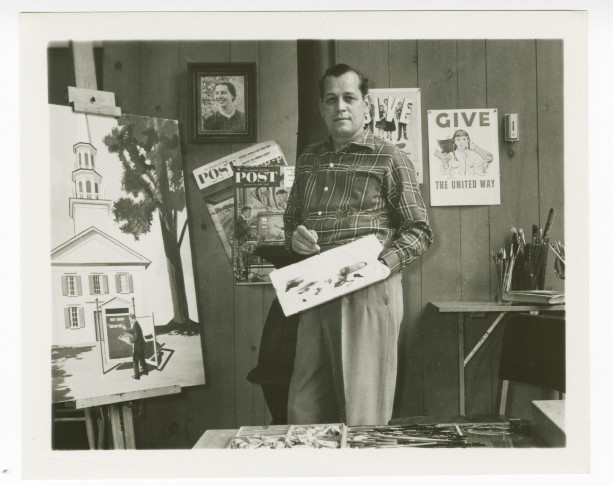
Stevan Dohanos Captures Connecticut Life
…the stone walls that line the roads and fields, the artist created the heroic lithograph “Connecticut Yankee.” In it, he celebrated the laborious effort required to clear the land for…
Read
Josiah Willard Gibbs’s Impact on Modern Science
…with the help of German physicist Walther Nernst, a bronze bas-relief memorial, designed by sculptor Lee Lavrie, was installed in the Sloane Physics Laboratory at Yale to honor Gibbs’s life…
Read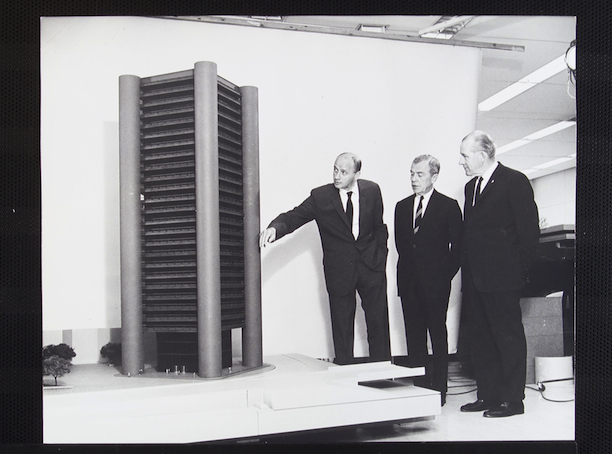
Richard Lee’s Urban Renewal in New Haven
…national celebrity for his dedication to renewal in New Haven. Even HUD’s Robert Weaver speculated that “New Haven is coming closest to our dreams of a slumless city,” and Labor…
Read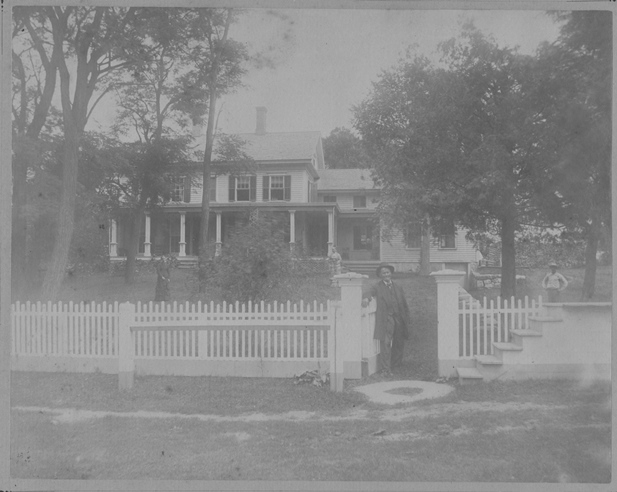
The Land of Nod Farm, East Canaan, Connecticut
…of the farm that sustained many of the iron industry’s untiring laborers. Known originally as “the Adam Farm,” the Land of Nod farm (named in 1985 after the eponymous Robert…
Read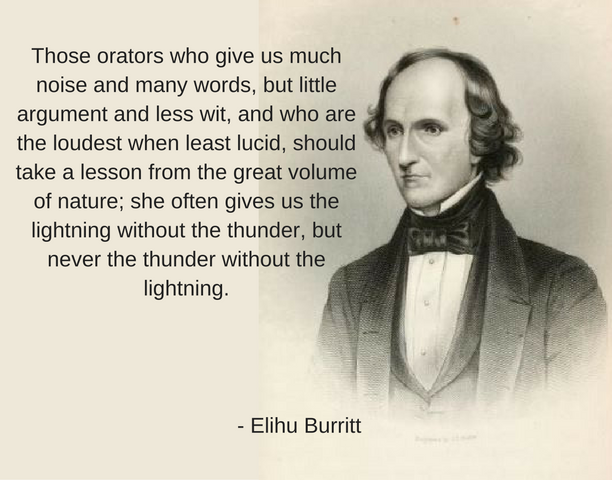
Apostle of Peace: Elihu Burritt’s Quest for Universal Brotherhood
…Elihu Burritt was born in New Britain in 1810 and as young man worked as a blacksmith. He taught himself mathematics while laboring at the forge and later mastered a…
Read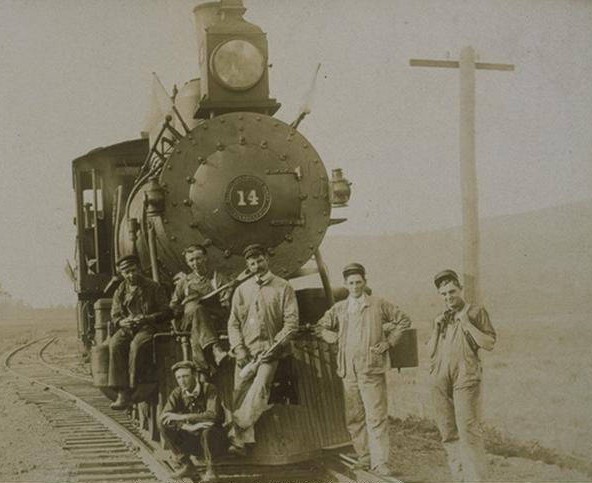
The Industrial United States 1870-1900
The Industrial United States (1870–1900) The late 19th century was a period characterized by innovation, racial tension, and labor unrest in America. A country characterized since its birth by its…
Read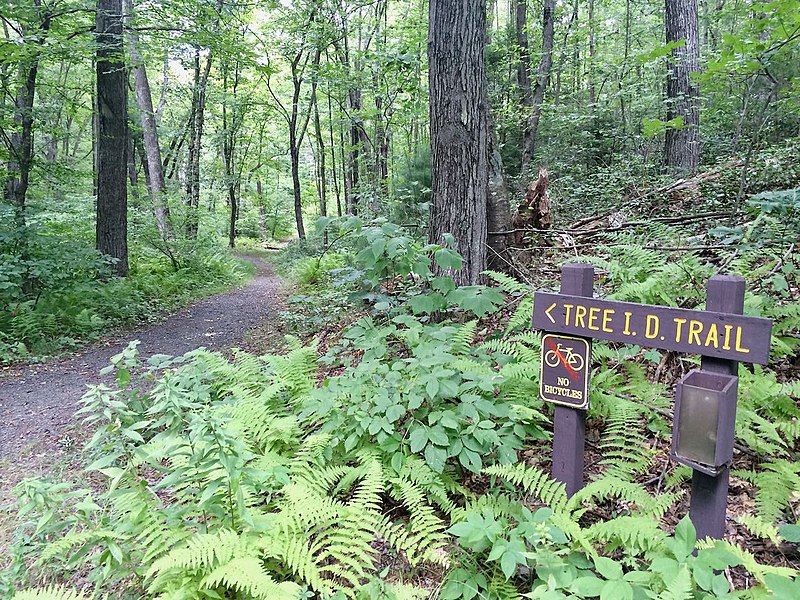
Saving Sessions Woods
…June and Labor Day. Religious retreats and cross-country skiers also used the property in the winter, and the Tunxis Trail—which cut through the property—was popular with hikers. By 1980, the…
Read
The White Plague: Progressive-Era Tuberculosis Treatments in Connecticut
…vaccine (which he called “tuberculin”) made from an inactive form of the bacterium. Dr. J. H. Kent of Putnam spent four months in Koch’s laboratory in Berlin and was one…
Read
Connecticut Pocketknife Firms
…supply of labor declined with wartime casualties. Connecticut firms also grappled with the gradual mechanization of production processes. For example, Benjamin Hemming of Meriden received a patent in 1902 for…
Read
An Orderly & Decent Government: The Rise of the Factory, 1866-1887
…Assembly, finding the common good in an era of rapid change was a daunting task. Reformers cried out against the social costs of industrialization-child labor, unsafe working conditions, widespread crime…
Read
An Orderly & Decent Government: Business and Government, 1905-1929
…as a fourth branch of government and turned aside virtually all legislation dealing with hours of labor, working conditions, the minimum wage, old-age pensions, and health insurance. The dominant figure…
Read
An Orderly & Decent Government: Significant Events & Developments, 1929-1964
…for over 30 years, John Bailey assembled a classic Democratic coalition of ethnic voters, labor, intellectuals and the poor that regularly returned Democrats to office. In Abraham Ribicoff (1955-61), John…
Read
An Orderly & Decent Government: Searching for the Common Good, 1929-1964
…militant. Organized labor grew enormously in strength and influence in the 1930s and helped mobilize legislative support for the minimum wage, worker’s compensation, and unemployment insurance. The lure of wartime…
Read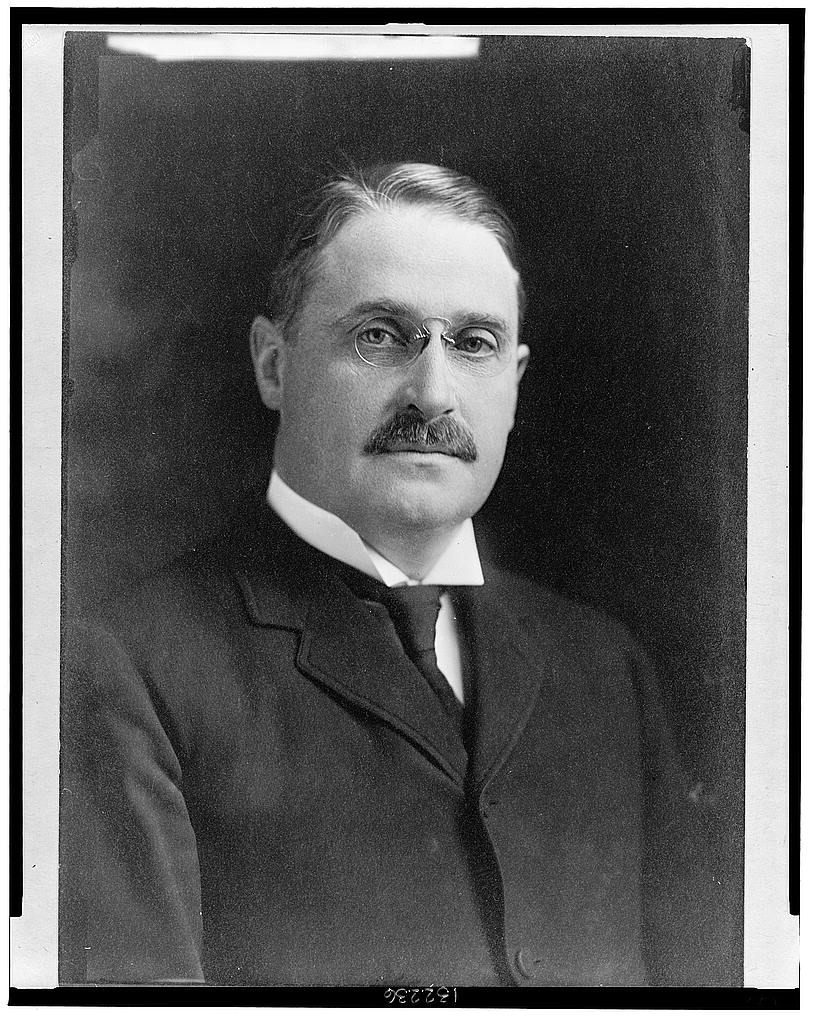
Senator Brandegee Stonewalls Women’s Suffrage
…fairly reclusive in his private life, Brandegee was known as a skilled debater on the Senate floor and a fierce opponent of progressive legislation. This included opposition to federal anti-child-labor…
Read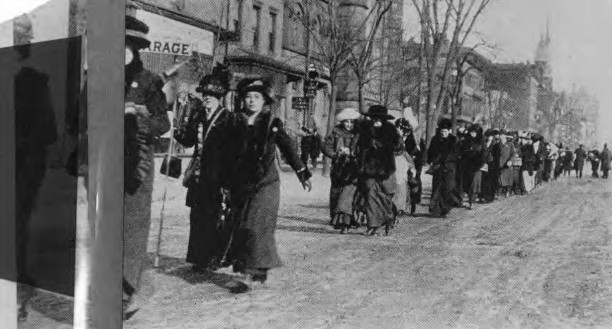
Looking Back: How the Vote Was Won
…including birth control, laws governing child labor, increased spending for hospitals, and improved recreational facilities for immigrants. She is little known today for more than having a daughter of the…
Read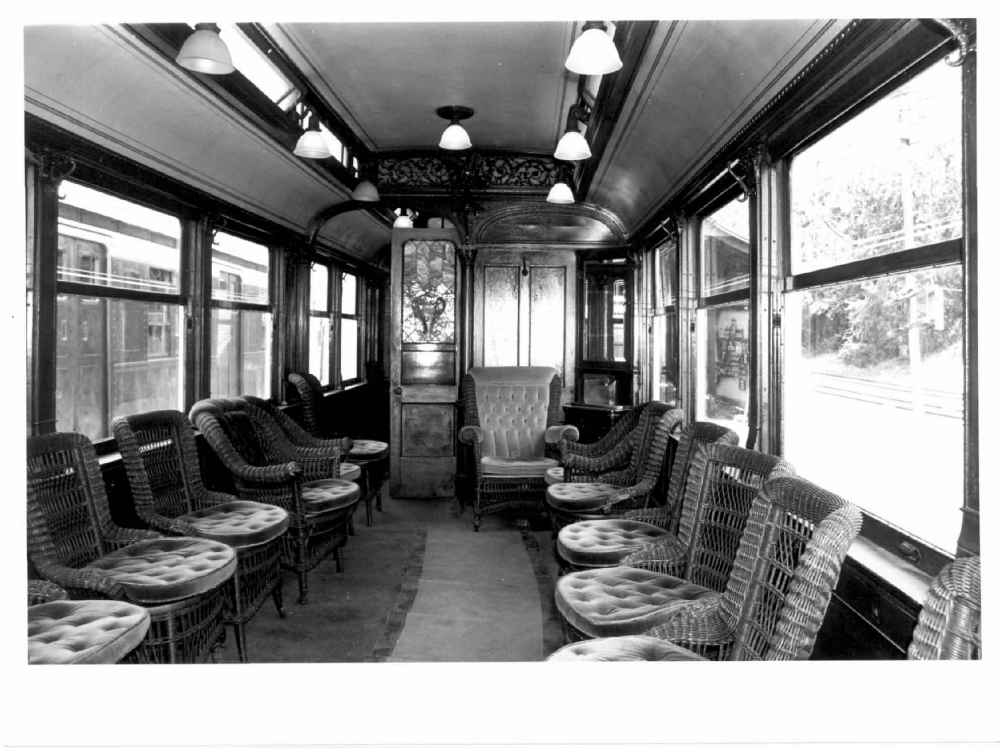
Branford Gets On the Trolley
…was the growing popularity of the automobile and the expanding network of local and national highways. In addition, drastically increased costs of labor and materials, the Depression, and a series…
Read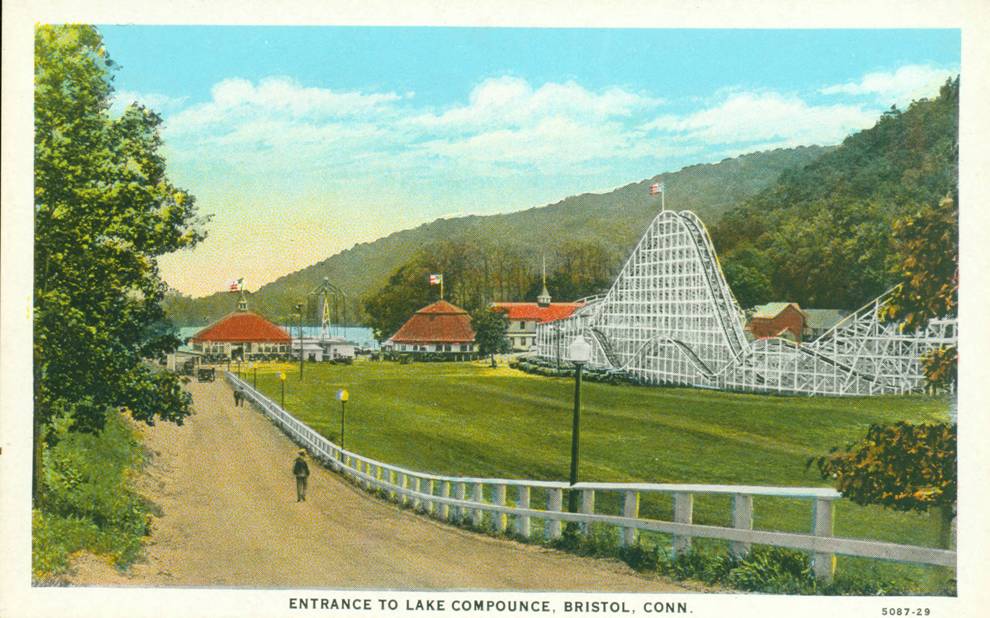
Lake Compounce: Bringing Amusements to the State’s Residents Since 1846
…only opened on Labor Day weekend, and by the mid 1990s, the park was in serious danger of closing for good. Kiddie Land, Lake Compounce, Bristol, ca. 1955 – Connecticut…
Read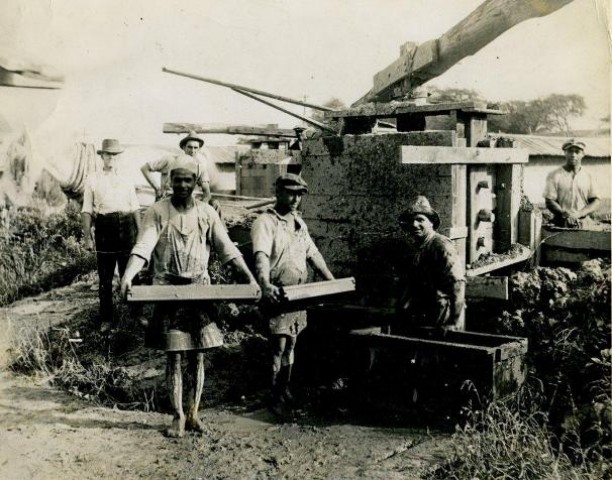
Building a Nation Brick by Brick
…the bricks necessary for these improvements came from England and importing them was a slow and laborious process. The discovery of a deposit of clay, approximately two-to-five miles wide, running…
Read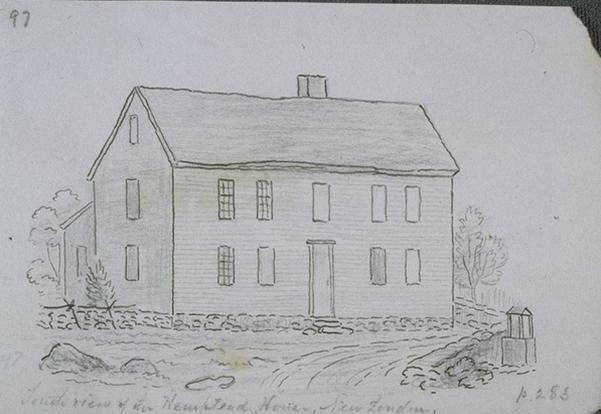
The Joshua Hempsted Diary: A Window into Colonial Connecticut
…bought pre-decorated from several sources, for families throughout the region. As Hempsted got older, he spent more time writing wills for others and less time in strenuous physical labor, but…
Read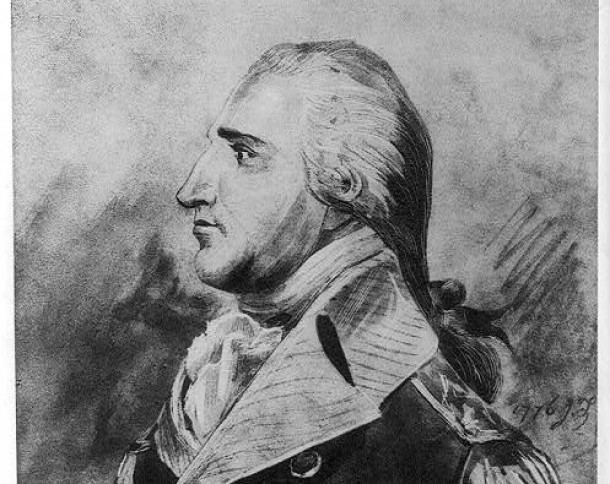
Benedict Arnold Turns and Burns New London
…dependent on imports of livestock, food, and supplies from the English colonies to the north to feed themselves and their slave labor. Sugar, molasses, and rum happened to be the…
Read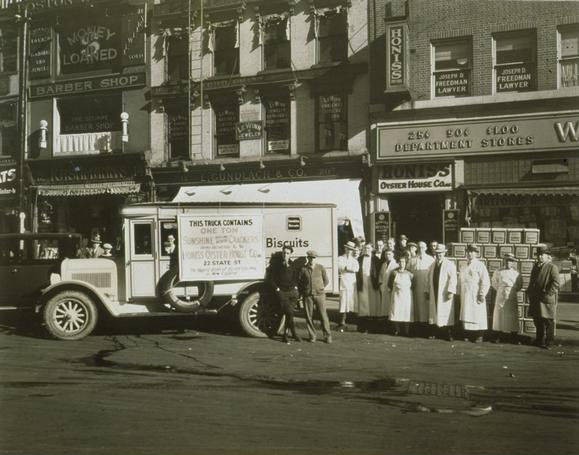
Oystering in Connecticut, from Colonial Times to the 21st Century
…through Public Domain. Early Oystering Leads to Fishing Laws During the colonial period, many Connecticut fishermen began to focus their labors exclusively on the collection of wild, or naturally occurring,…
Read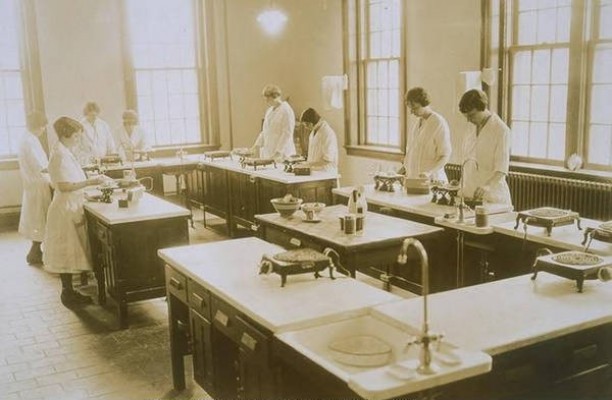
From Aprons to Lab Coats: The Art and Science of Home Economics
…are made. Later comes the more advanced work of salads, desserts, and other made dishes, canning, pickling, and preserving. The economy of material, time, labor, and fuel is brought before…
Read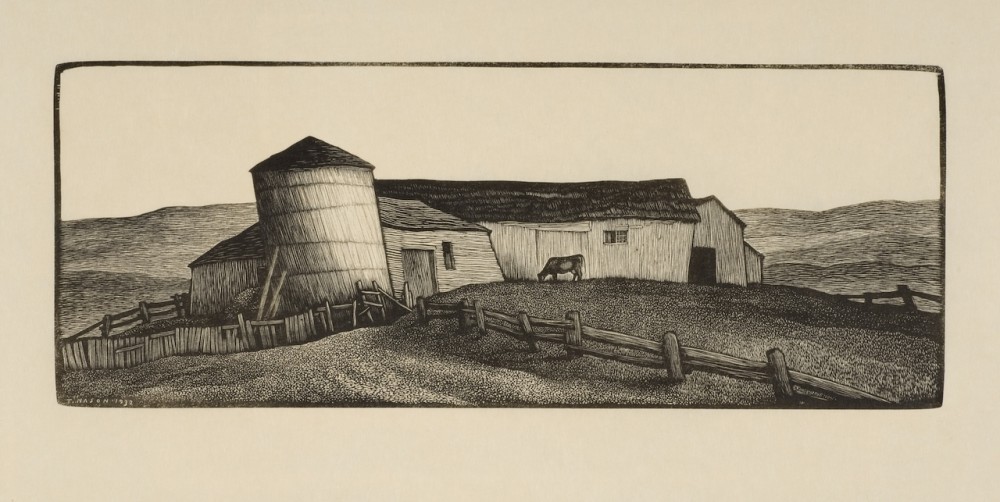
Thomas W. Nason, the Poet Engraver of New England
…himself the discipline of printmaking through books, observation, and the laborious process of trial and error. He collected prints and voraciously read practical manuals as well as histories of printmaking…
Read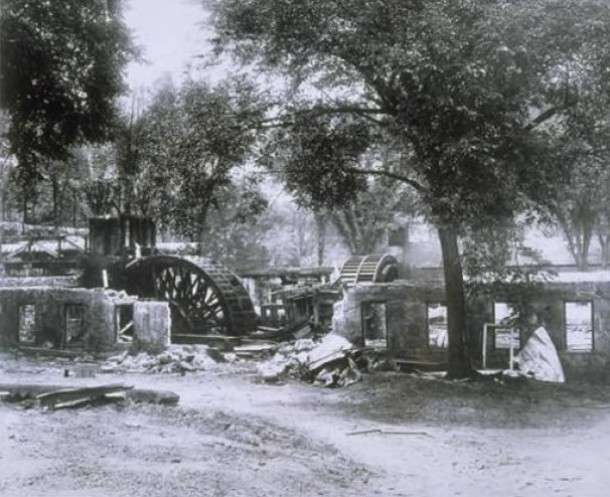
Birth of the Brass Valley
…brass industry’s problems, as did cheap labor and new technologies found overseas. Eventually, the Big Three ceased operations rather than incur the prohibitive expenses of trying to refurbish their operations….
Read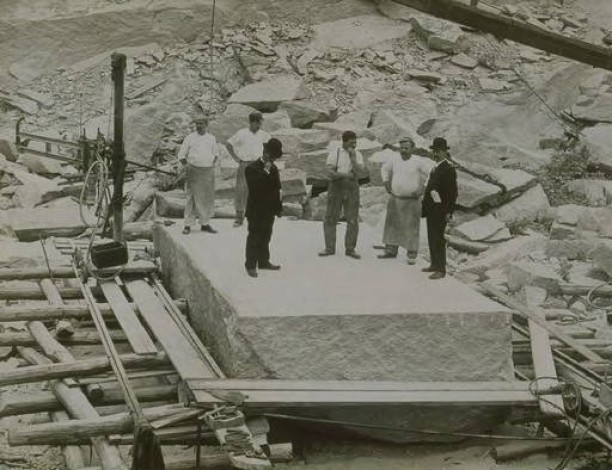
Branford’s History Is Set in Stone
…town. The arrival of the railroad in 1852 brought in ever-greater labor supplies and provided reliable transportation for finished products. Quarry workers from Italy, Ireland, Sweden, Finland, and Spain needed…
Read
The Art of Life and Death in Colonial Bolton
…up in Bolton, Gershom moved to Windsor where he worked at least part-time as a farm laborer. After his father’s death in 1746, Gershom married and began dual careers in…
Read
Amateur Radio Comes of Age in Connecticut
…In 1900 speech was first transmitted via radio in a United States Weather Bureau laboratory. Over the next 10 years amateurs were the principal developers of this medium, broadcasting voice…
Read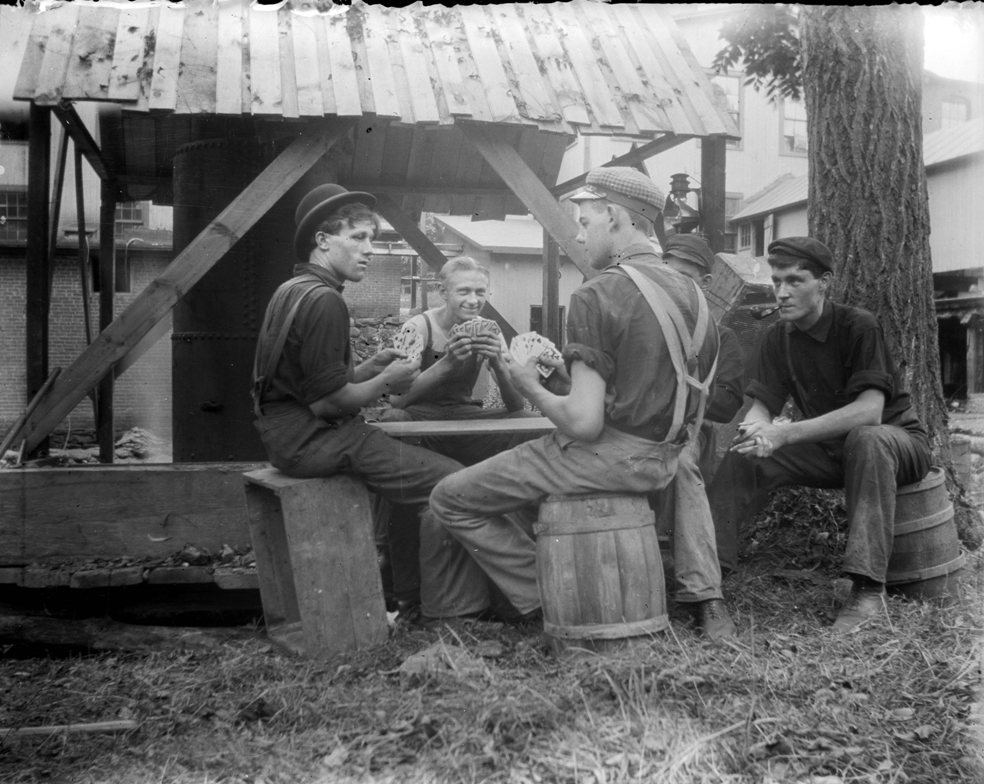
Avon Industry: From Underground to Outerspace
…so fast that it exhausted local labor supplies. Soon immigrants from Poland, Russia, Italy, Germany, and other European nations arrived in Avon to assist in fuse manufacturing. The company even…
Read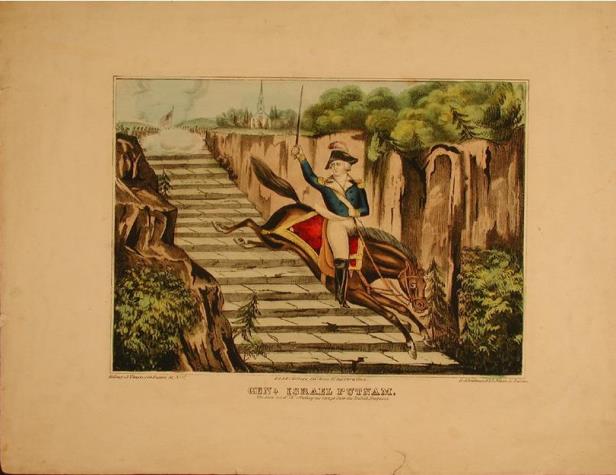
Israel Putnam: A Youthful Trailblazer Turned Colonial Militiaman
…and expanding his holdings through the arduous labors associated with farming and raising livestock. Putnam’s Cave or Wolf Den. Drawing by John Warner Barber, ca. 1835. The story of Putnam…
Read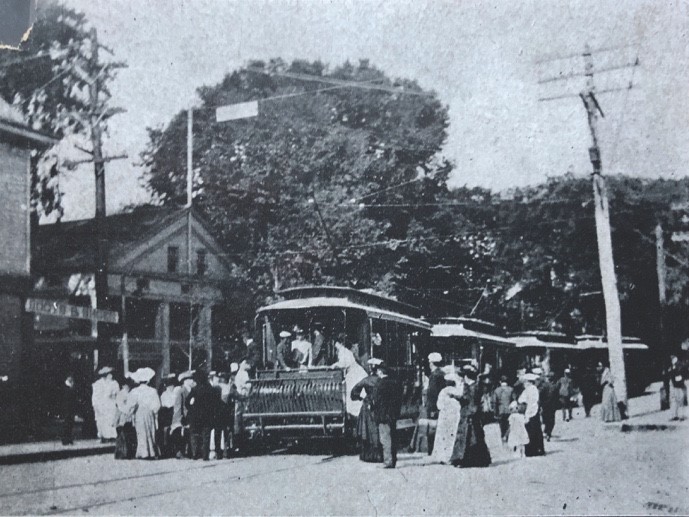
Trolley Campaigners Storm Small Towns and Votes for Women is the Battle Cry
…and England. The remarkable list included US senators, a state governor, college presidents and professors, labor union leaders, and such notables as Inez Mullholland, Anna Howard Shaw, Jane Addams, Rheta…
Read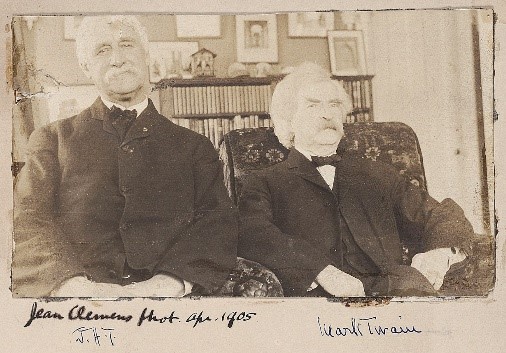
Joseph Hopkins Twichell: Asylum Hill’s Religious Leader and Mark Twain’s Closest Friend
…Twichell to talk freely, unrestrained by his well-drafted sermons, and inspired Twichell to subtly push Victorian social boundaries, taking up such causes as labor rights, immigration, education, and interfaith advocacy….
Read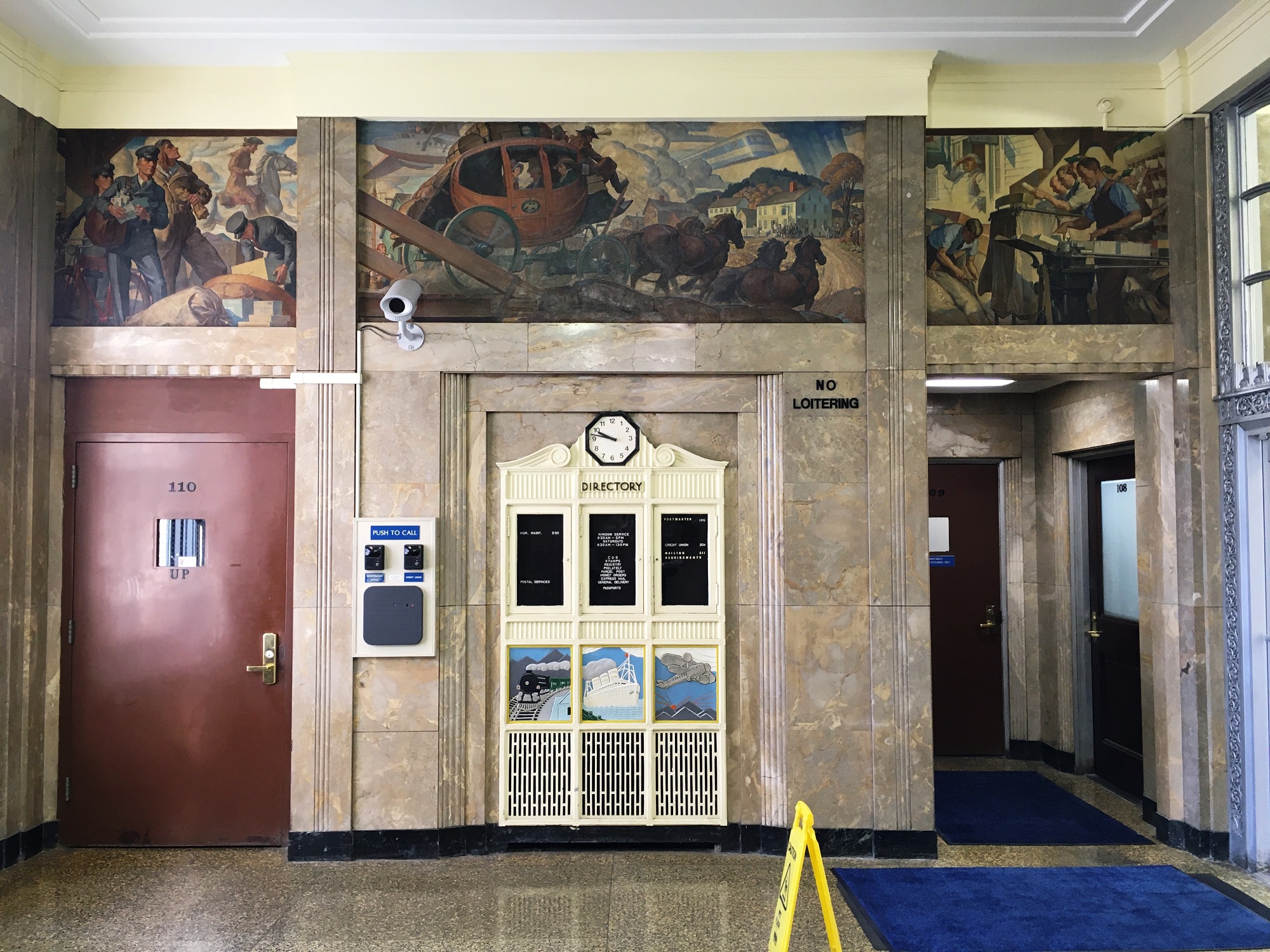
Hope on the Wall: Connecticut’s New Deal Post Office Murals
…There were no hints about contemporary problems, such as unemployment, labor strikes, or racial segregation. Mass-production was rarely shown, with the Section preferring depictions of skilled craftsman working by hand…
Read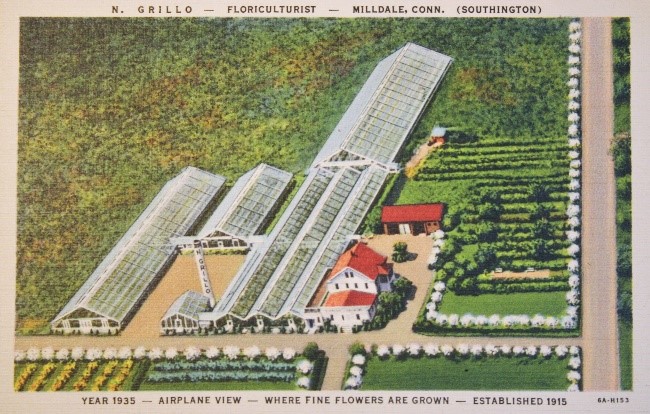
Nicholas Grillo and his Thornless Rose
…and worked as a laborer at nearby greenhouses. Boarding and working with him were his brothers Salvatore (age 18) and Peter (age 17) who had recently arrived from Italy. Nicholas…
Read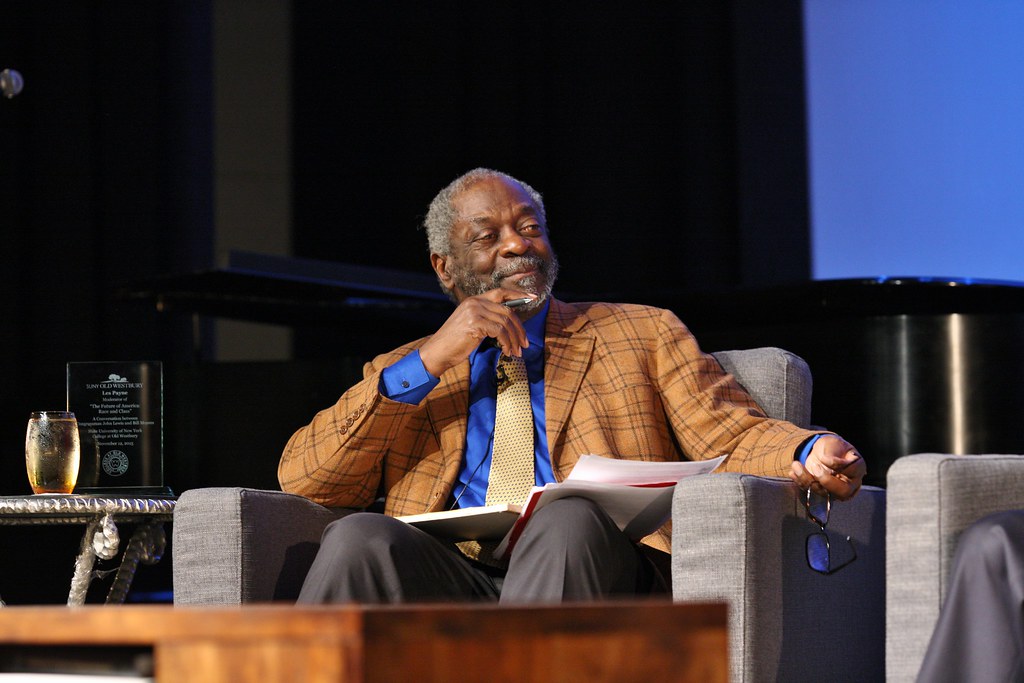
Hartford’s Les Payne, Trailblazing Journalist
…Almost a Second The Heroin Trail – 1974 Payne covered the Black Panthers, the Attica Prison rebellion, and went undercover among mostly black workers at a migrant labor camp on…
Read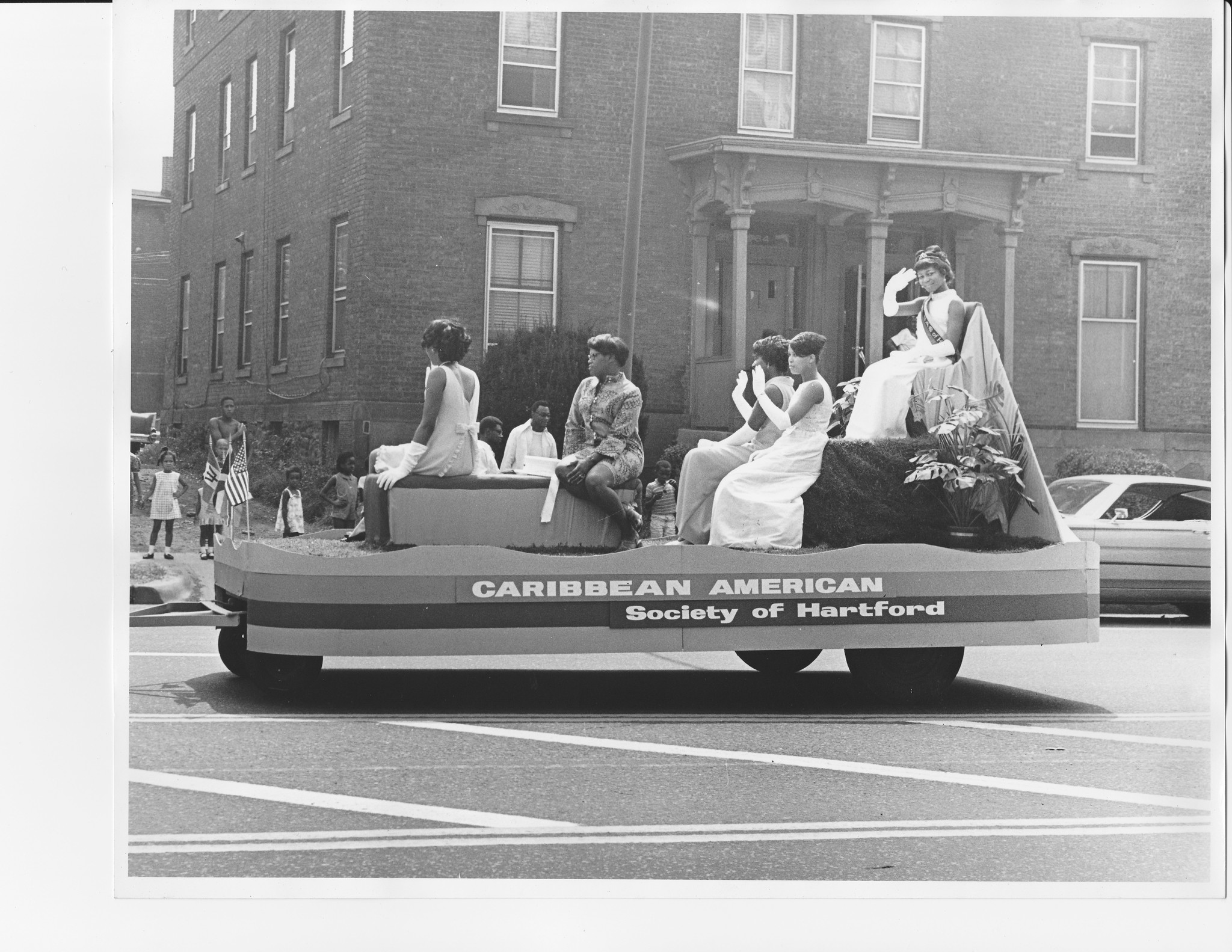
West Indians in Hartford
…significant wave of immigration to the United States from the West Indies began in the 1940s, spurred by labor shortages during World War II. Many immigrants were drawn to the…
Read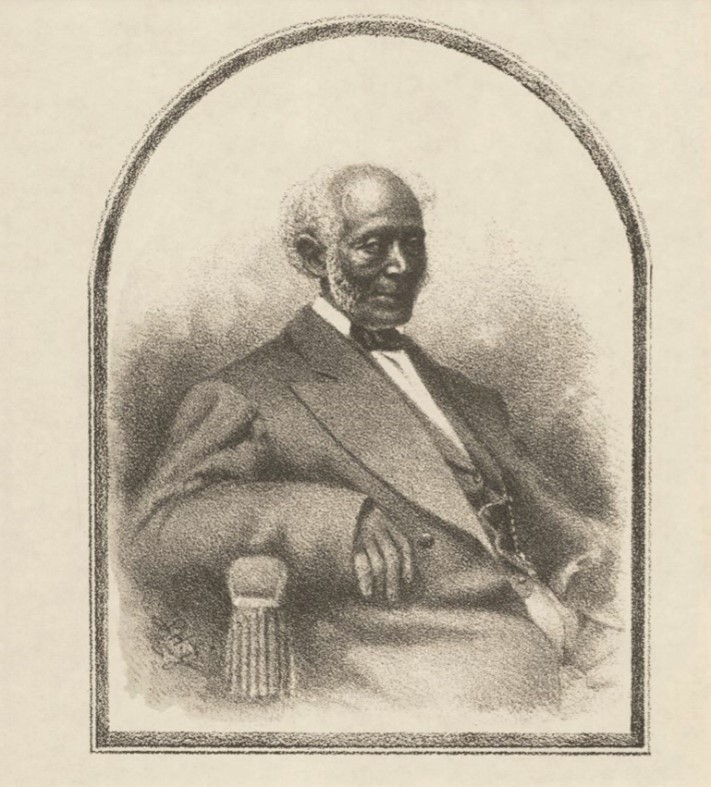
James Williams, More than Trinity College’s Janitor
…which he crisscrossed the Atlantic Ocean on any ship that accepted his labor. He was at sea during the War of 1812, serving on the USS Hornet. Williams was a…
Read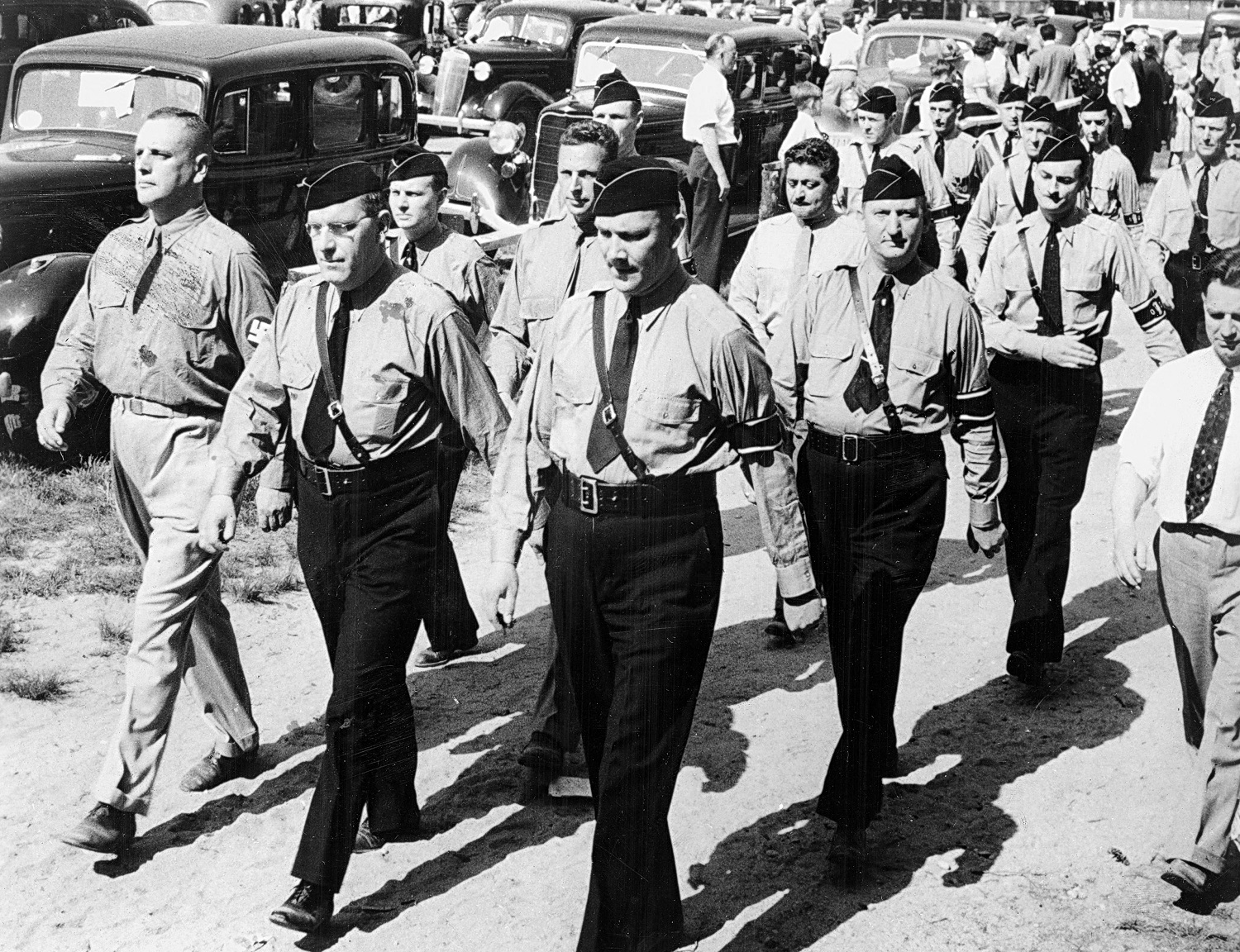
The Vonsiatsky Conspiracy Case
…weapons to suppress labor unrest at the North Grosvenordale Mill in 1934 and he even entertained the state police commissioner on his estate in 1939. Vonsiatsky drew FBI scrutiny in…
Read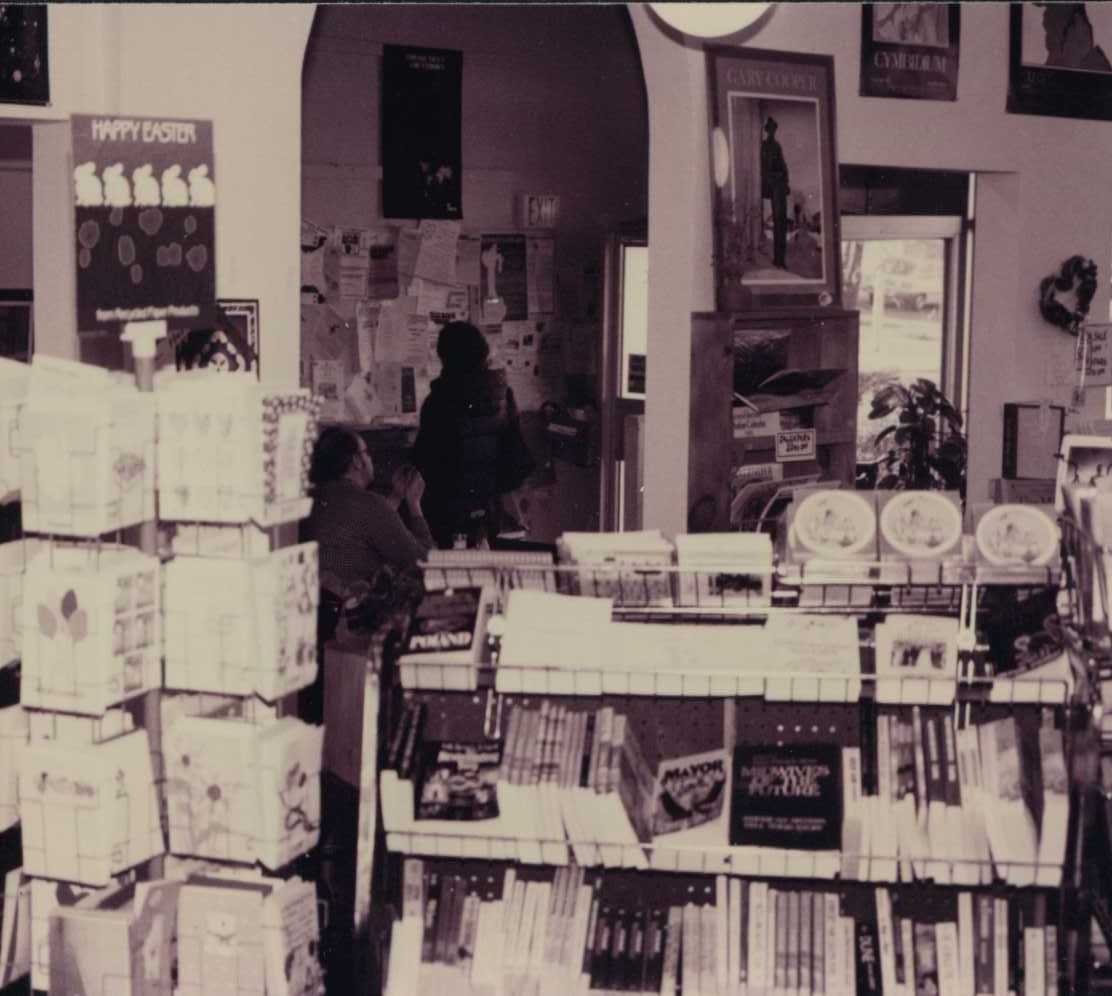
The Reader’s Feast: A Bookstore Ahead of Its Time
…rights, and labor movements and a place for gay and trans people that was safe, sober, and supportive—a space of visibility and affirmation. Moreover, it offered free financial literacy courses…
Read
Brass City/Grass Roots: The Persistence of Farming in Waterbury, Connecticut
…the process. Thank You… This exhibit was made possible by the labors of many people and institutions including Sue Pronovost and Brass City Harvest, David Perrier, Jessica Callahan, David Becker…
Read
The Incident of the Stonington Schooner ‘Breakwater’: A View from Indian Country
…Museum and Research Center, and author of the article “Beyond Reservation: Indians, Maritime Labor, and Communities of Color from Eastern Long Island Sound, 1713-1861″ in Gender, Race, Ethnicity, and Power…
Read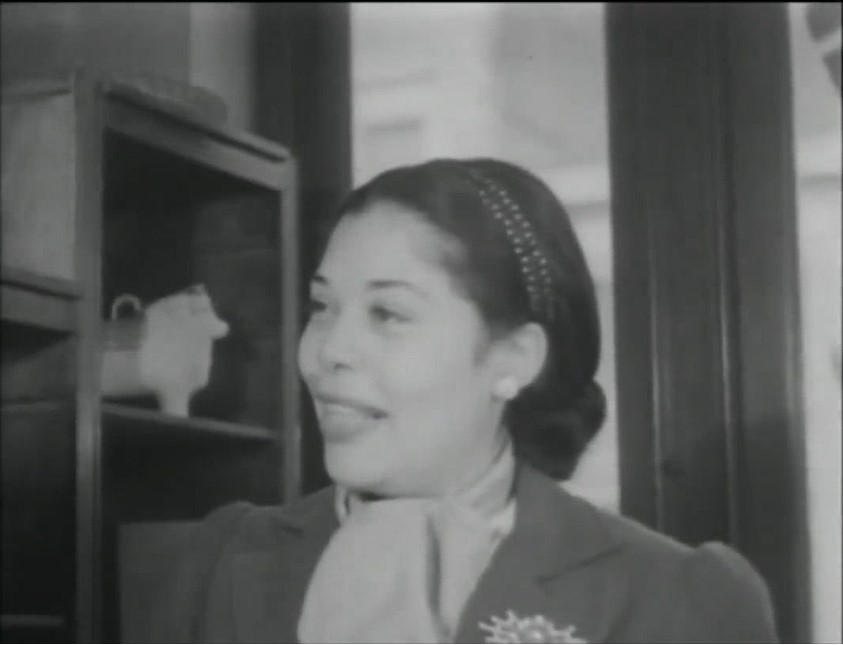
Ann Petry: Old Saybrook’s Bestselling African American Author
…often monitored the content of history books at the school. While in Harlem and working for The People’s Voice, Petry became acquainted with numerous political and labor activists, such as…
Read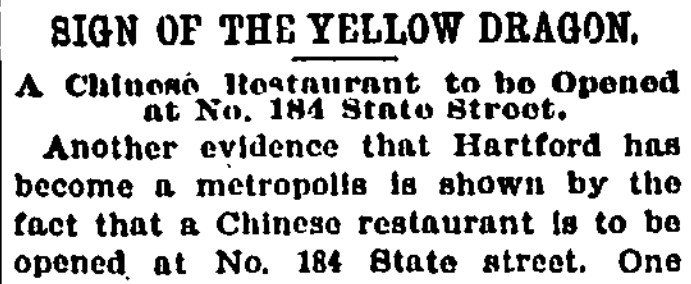
At the Sign of the Yellow Dragon: Hartford’s First Chinese Restaurants
…West Coast and traveled east. The first Chinese restaurant in America opened in San Francisco in 1849 to serve Chinese miners and laborers drawn by the gold rush. Almost 50…
Read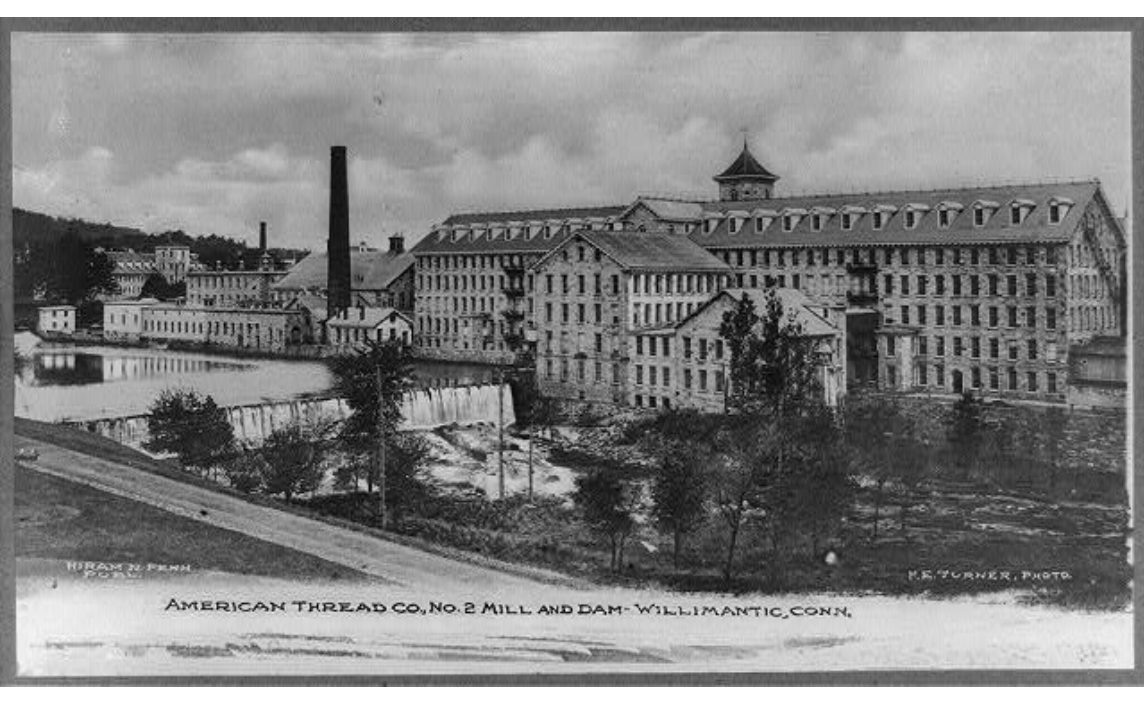
Willimantic’s American Thread Plant–A Multinational Corporate Takeover
…was best for sewing machines, and on the patriotic ground that it used only American cotton and labor. How ironic, then, that Willimantic Linen sold out to the American Thread…
Read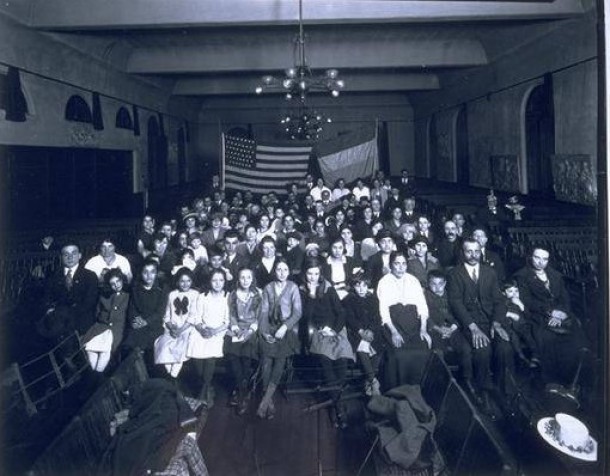
Building an Armenian Community in New Britain
…the town line. The 1915 city directory also listed Armenian clerks, laborers, a tailor, and a shoemaker. Mary Mouradian, a woman doctor, established her practice in New Britain in 1913….
Read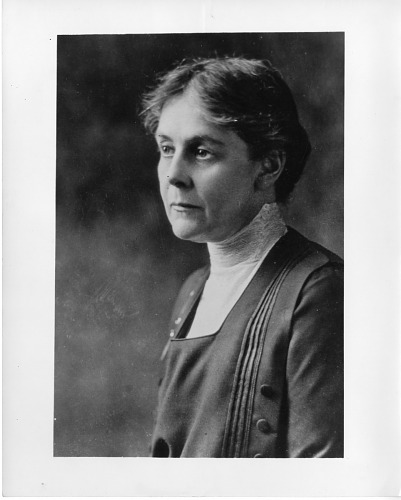
Alice Hamilton: The Nation’s Leading Expert on Industrial Diseases
…US Department of Labor, which allowed her research to extend nationally. The department only paid her if her reports were accepted, but Hamilton’s research resulted in many state and federal…
Read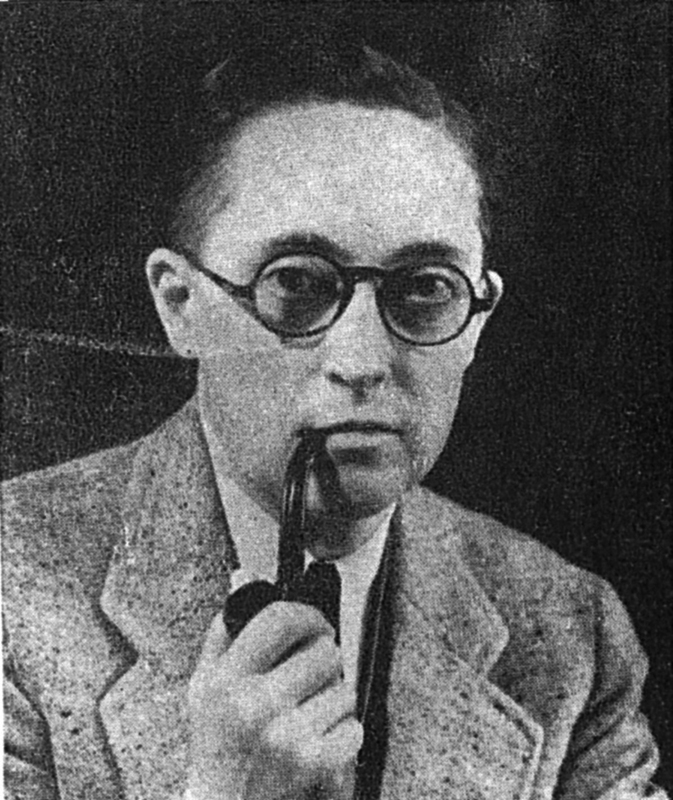
Alan L. Hart: Pioneer in Medicine and Transgender History
…risk of others questioning his gender or outing him to his patients and community. Early Life and Transition Hart (2nd from the right) in the Albany College Chemistry Laboratory –…
Read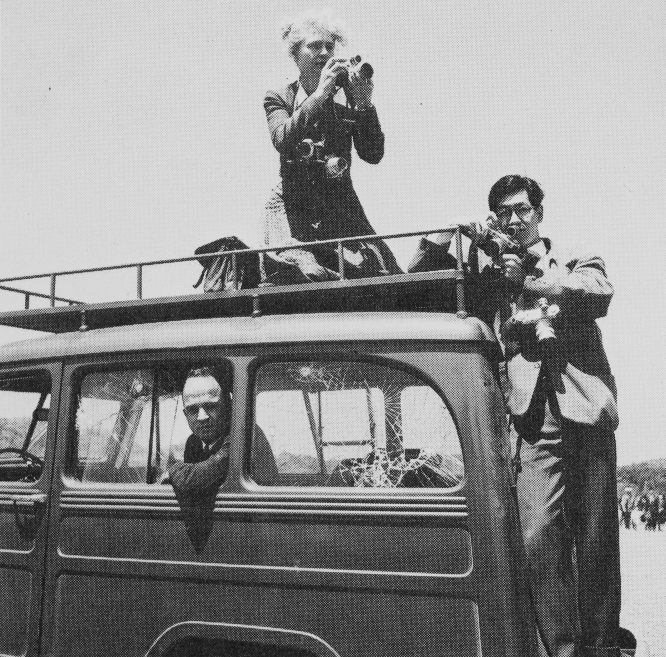
Photojournalist Margaret Bourke-White: “No Picture Was Unimportant to Her”
…the early 1930s as the first foreign journalist to capture images inside the young country—including those of factory laborers and Russian citizens in everyday life. The thousands of black and…
ReadMore




